
 Yud Aleph Nissan moments
The Joe who kept Shabbos 14 children who are also friends
Yud Aleph Nissan moments
The Joe who kept Shabbos 14 children who are also friends
PRESORT STD U.S. POSTAGE PAID STARDIRECT 11207 COLLIVE MAGAZINE Brooklyn, NY 11225 ISSUE 18 NISSAN 5784 / APRIL 2024
The fellows who built Fello
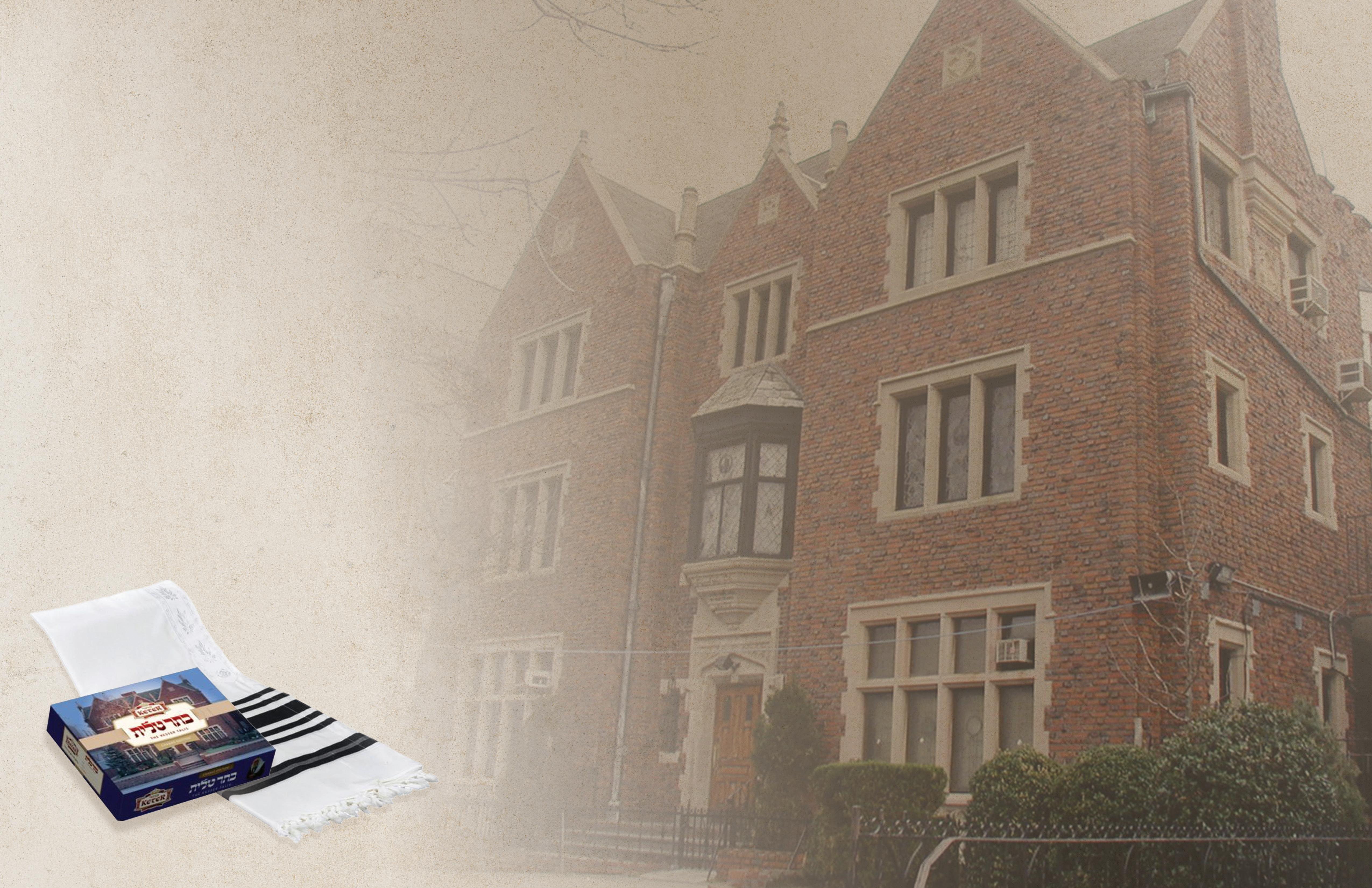
Talleisim Tzitzis CROWN HEIGHTS SALE! LIGHT WEIGHT Keter Tallis ORIGINAL PRICE SALE PRICE #1 2XL #2 XLarge #3 Large #4 Medium #5 Small $17700 $17200 $165 00 $15700 $14400 $14200 $13800 $13100 $12400 $11100 CLASSIC Wool Silk Corners ORIGINAL PRICE SALE PRICE #10 #12 #14 #16 #18 #20 #22 #24 #26 #28 $2750 $3050 $3150 $3250 $4050 $4200 $4350 $4350 $4450 $48 00 $1950 $2250 $2350 $2450 $2950 $3100 $3250 $3250 $3350 $3700 ןסינ אי - ןסינ שדוח שאר While Supplies Last.

Tzitzis Poly Cotton Round Neck ORIGINAL PRICE SALE PRICE #2 #3 #4 #5 #6 #7 $1300 $1300 $1300 $1300 $1400 $1400 $1025 $1025 $1025 $1025 $1075 $1075 UNDERSHIRT TZITZIS ORIGINAL PRICE SALE PRICE #3 Size 2T/3T #4 Size 4T #5 Size XS (2-4) #6 Size S (6-8) #7 Size M (10-12) #18 Size L (14-16) #20 #22 #24 #26 #28 $1700 $1750 $1750 $1850 $1850 2350 2350 2450 2450 25 00 2700 $1275 $1275 $1275 $1325 $1325 1850 1850 1900 1900 1950 2000 Cotton TZITZIS ORIGINAL PRICE SALE PRICE #2 #3 #4 #6 #7 #18 #20 #22 #24 #26 #28 $1300 $1300 $1300 $1400 $1400 $2000 $2000 $2000 $2000 $2100 $2200 $1050 $1050 $1050 $1100 $1100 $1625 $1625 $1675 $1675 $1725 $1775 ORIGINAL PRICE SALE PRICE #18 #20 #22 #24 #26 #28 $4300 $45 00 $46 00 $46 00 $4700 $5000 $3200 $3400 $3500 $3500 $3600 $3900 LIGHT Weight KETER TZITZIS Lowest. Ever! 260 Kingston Avenue Brooklyn NY 11213 • 718.298.4555 • chstore@keterjudaica.com • keterjudaica.com



8 9 12 14 16 26 34 40 46 52 64 74 82 84 Seeing the Future Editorial | Mica Soffer A Message for Pesach A Letter from the Rebbe for Pesach The Greatest Photo Marc Asnin Hostage Liberation Essay | Rabbi Yehudah Ceitlin Joe Lieberman and Chabad Dovid Zaklikowski Happy Birthday, Rebbe Yossi Feller Love Despite the Pain Tzemach Feller Educating with Purpose Dovid Zaklikowski Fourteen Best Friends Toby Lieder My Exodus Danit Schusterman Snapshots of a Seder Halacha and Photos Insights on the Hagaddah Rabbi Chaim Meir Bukiet A"H My Story is Your Story Buisness Profile | Esther Rodal Business Digest Zev Gotkin 52 64 הכרבה תא 'ה הוצ ןאכ .ד"סב ISSUE 18 NISSAN 5784 APRIL 2024
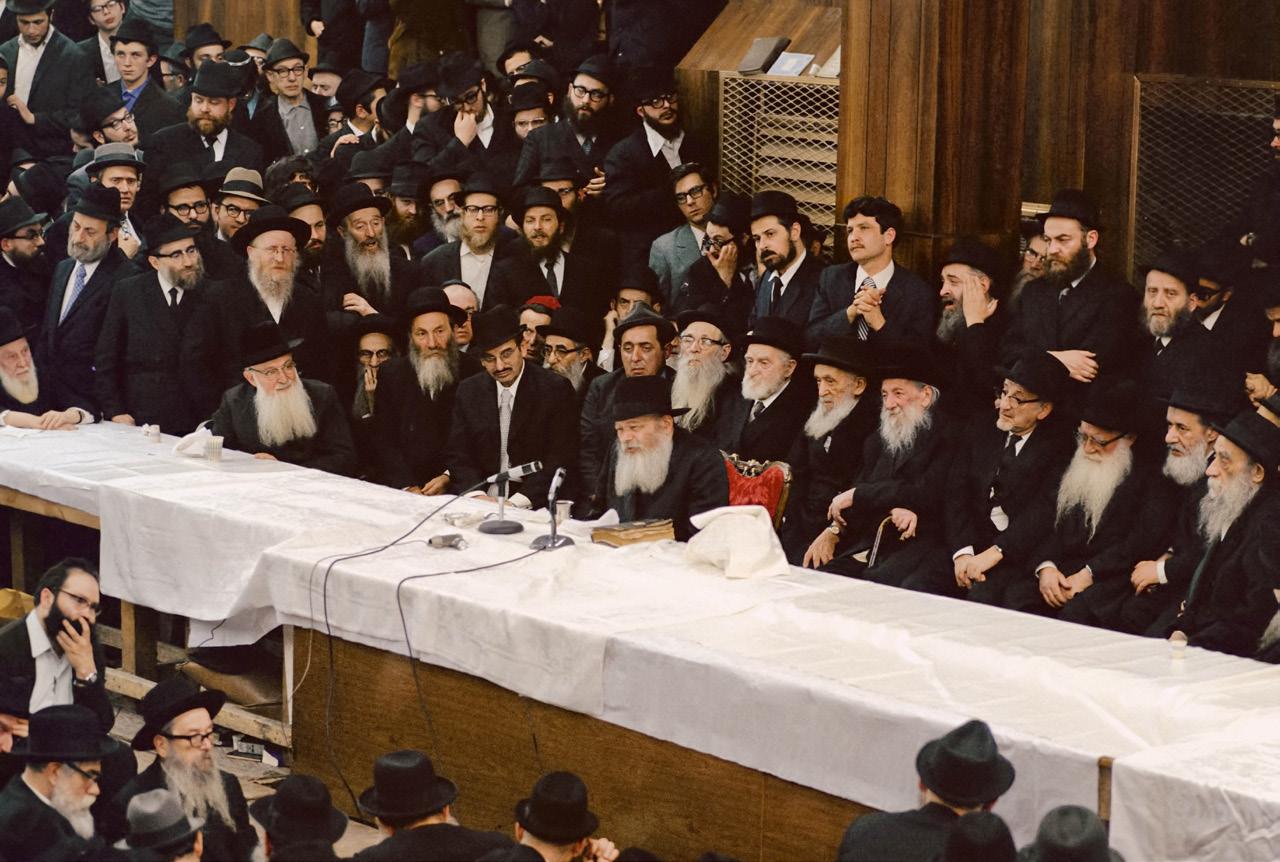




86 88 90 94 96 100 102 108 110 114 118 120 How to Win a War Rabbi Manis Friedman Dr. Elad Ben Elul Suing for Unsold Chometz? Halacha | Rabbi Shraga Homnick Chinuch Matters Menachem Education Foundation Coping with Pesach Stress Health | Rabbi Daniel Schonbuch The Inside Track Music | Sruly Meyer The Blessing in a Wound Story | Asharon Baltazar Kosher Spread Food | Sruly Meyer Kids Corner Fun | Sari Kopitnikoff Pesach Corner Activity | Parsha Studio Chidon Quiz Tzivos Hashem Ma Nishtana x57 Humor | Mordechai Schmutter Then and Now Local | Zev Gotkin ON THE COVER
during a visit to Auschwitz, November 2023 • Photo: @jewish.giant 26 34 114 16 102
Rabbi Nissan Mangel speaks to his grandchildren











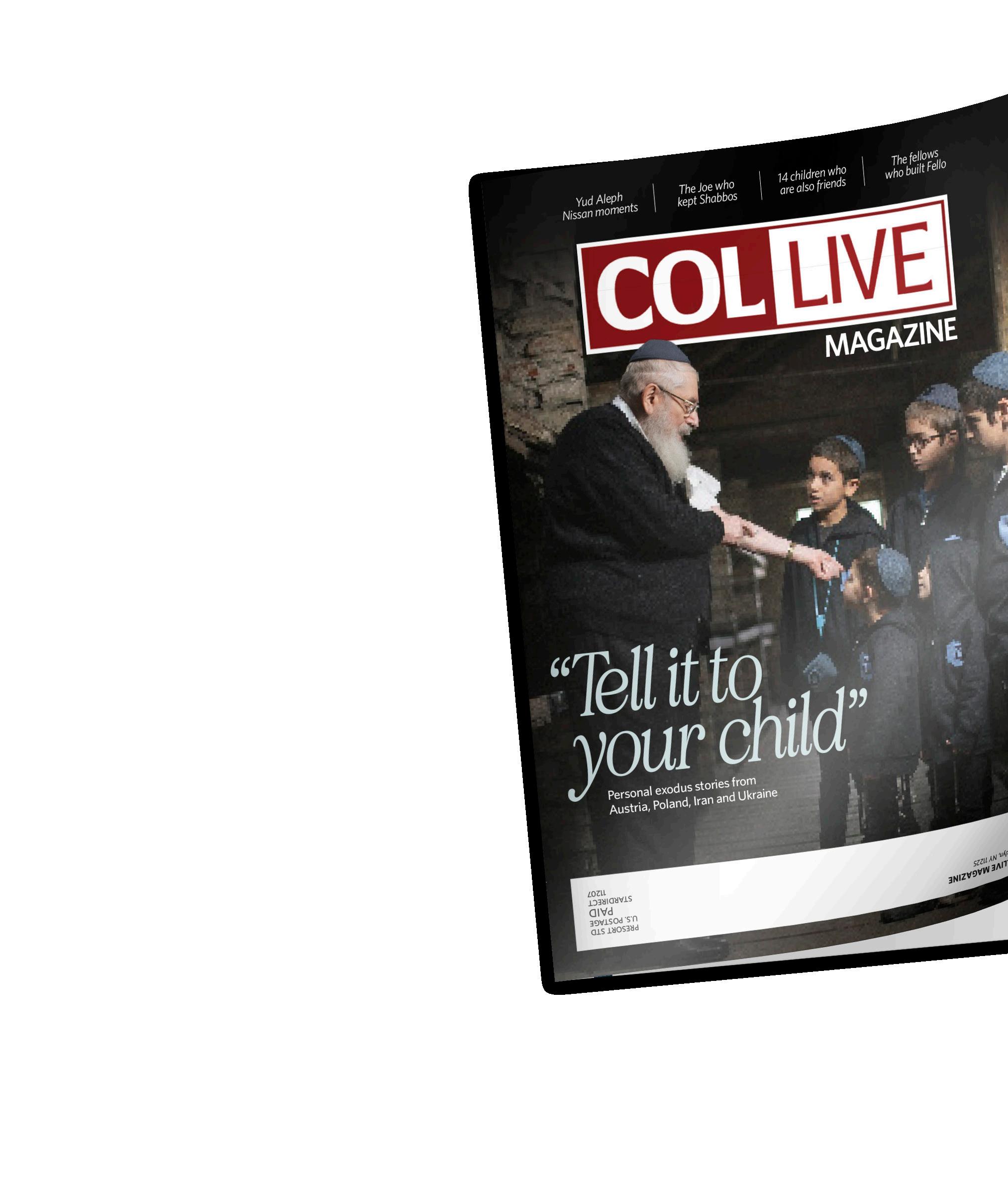
UNITEDMARCHINGWITH לארשי ץרא REGISTER NOW THEGREATPARADE.COM 25+ 100+COUNTRIES CITIESINISRAELRAL G ESTJEWISHUN I TNEVEYT ה”ב JOIN PARADES AROUND THE WORLD SUNDAY, MAY 26 NEW YORK 11AM 770 EASTERN PARKWAY י"בשרד אלוליה רמועב ג”ל CORPORATE SPONSORS


ד"סב
Contributing Writers
Asharon Baltazar
Tzemach Feller
Yossi Feller
Zev Gotkin
Rabbi Shraga Homnick
Sari Kopitnikoff
Sruly Meyer
Esther Rodal
Mordechai Schmutter
Danit Schusterman
Daniel Schonbuch
Dovid Zaklikowski
ADVERTISING ads@COLlive.com
718-427-2174 ext. 2
EDITORIAL INQUIRIES OR SUBMISSIONS
Editor@COLlive.com 718-427-2174 ext. 1
COLlive Magazine is published in print periodically by the Collive Media Group Inc. and is distributed free in Brooklyn, NY. COLlive does not endorse any products or services reported about or advertised in COLlive Magazine unless specifically noted. The acceptance of advertising in COLlive Magazine does not constitute a recommendation, approval or other representation o quality of products or services, or the credibility of any claims made by advertisers including, but not limited to, the kashrus or advertised food products. The use of any products or services advertised in COLlive Magazine is solely at the user’s risk and COLlive accepts no responsibility or liability in connection therewith.
FROM THE PUBLISHER
Our day-to-day responsibilities and chores consume much of our time and attention. Its easy to get caught up in the grind, and with a steady sense of urgency. Even when two friends meet up for coffee and conversation, we call it 'catching up.'
Yet, every now and then, we are given the gift of seeing the bigger picture. We reach that by learning ourselves, and for me recently, by seeing others learn.
My daughter has been participating in the International Chidon Sefer Hamitzvos competition, giving me a front-row seat to how over 4,500 girls and boys have been diligently studying the 613 Mitzvos as enumerated by the Rambam.
These children have spent months memorizing and broadening their understanding during their downtime after school, during vacations, and even while waiting for doctor's appointments. They have taken a series of challenging tests and competed to be a finalist.
Then, in the past couple of weeks, hundreds of them gathered for the final game show and competition, with finalists battling it out for the championship's top prizes. For me, this was the moment of seeing the broader picture and it has been on my mind since.
I watched in amazement as teams of young girls—all in grade school— rattled off their knowledge with lightning speed that would put many a skilled adult learner to shame. With familiar ease, they shouted out the names of mitzvos and their sources to the loud cheers and encouragement of their friends.
They were then treated to a lively concert by singers Benny Friedman and Eli Marcus and musician Chony Milecki. The girls could not remain in their seats, jumping up and dancing with the most spirited energy, reveling in the culmination of their hard work and excitement.
For them, it was their private Simchas Torah celebration. For me, it was seeing the bright (literally and figuratively) future of Lubavitch. It was loud, proud, joyful, and real.
We can sometimes get caught up in everything that's going differently than we think it should. While there are naturally things that need improving in our community, I'm always so grateful when I get a glimpse of what's going right.
Seeing hundreds of young, bright, happy and beautiful girls literally dancing with joy about learning Torah is a moment that I will think about when I hear of challenges we are facing. I witnessed that the future of Lubavitch is alive and with our children.
The Pesach Seder is all about telling the story of our Torah and our people to our children. Let's continue doing that around the year.
Wishing you a Kosher and joyous Pesach, MICA
SOFFER

FIND US ON SOCIAL MEDIA
Publisher Mica Soffer Editor
Yehuda Ceitlin
Associate Editor Mendy Wineberg
@COLlive @COLliveOfficial 718.679.9450

A Message for Pesach
Every
Jewish child must be given a strong Jewish education
Rosh Chodesh Nissan, 5712 Brooklyn, NY
Sholom u’Brocho
The festival of Pesach calls for early and elaborate preparations to make the Jewish home fitting for the great festival. It is not physical preparedness alone that is required of us, but also spiritual preparedness —for in the life of the Jew the physical and spiritual are closely linked together, especially in the celebration of our Shabbat and festivals.
On Pesach we celebrate the liberation of the Jewish people from Egyptian slavery and, together with it, the liberation from, and negation of the ancient Egyptian system and way of life, the “abominations of Egypt”. Thus we celebrate our physical liberation together with our spiritual freedom. Indeed, there cannot be one without the other: there can be no real freedom without accepting the precepts of our Torah guiding our daily life; pure and holy life eventually leads to real freedom.
The remembrance of the departure from Egypt is one of the main pillars of our Torah and faith. The event of the Exodus has been singled out for remembrance every day of the year, and on the night of Pesach it is, of course, the very center of our attention.
Of the numerous lessons which this
event has for us, I want to mention here but one point, a point which is significantly related to both the beginning and the end of the festival. The first festive ceremony, after dark, is the “Seder.” It begins with one of its basic features - the fulfillment of the precept, “Vehigadeta l’bincha”, “You shall relate it to your son”. The Seder ceremony contains changes and deviations from our customs and practices to rouse the interest of the children and make them participate in the service. Moreover, our duty to the children is not confined to the wise ones, but for “the wise, the wicked, the simple and the one who knows not what to ask.” All of them must be gathered to the Seder, and each one must be instructed according to his intelligence and understanding.
The concluding event of the story of Pesach is the miraculous crossing of the Yam Suf, when so great was G-d’s revelation, that every one of the people of Israel could “point a finger” and exclaim: “This is my G-d, and I will glorify Him.” The sons and daughters who were born at the height of the enslavement and oppression were those who recognized G-d first. The end of the festival is rooted in its beginning.
We must make every possible effort to find the ways and means (even at the sacrifice of personal habits and customs) to rouse the young
generation and bring all Jewish boys and girls without exception - “the wise, wicked, simple and the one who knows not what to ask” - to Torah and Mitzvot. Then we can confidently look to the redemption and be sure that “With our youths and our aged shall we go, (together) with our sons and daughters.”
Like that generation in Egypt, this generation, too, was born and bred in the most tragic period of our history. And as in those days of old, when G-d miraculously saved the children that they might later receive the Torah, so will He also save our generation, our children also from those who rise up to destroy them, G-d forbid, through a distorted education which “calls evil - good, and good - evil, and considers darkness - light and light - darkness, despising the Torah of G-d.” G-d will save us and them from their hands, that this generation be the generation of redemption, “not by might and not by power, but by the spirit of G-d,” and every one, boy and girl, man and woman, will recognize G-d, “pointing a finger and saying, behold your G-d, to whom we hoped to save us; this is the G-d to whom we hope; we shall rejoice and be glad in His salvation.”
With the blessing of a kosher and happy Pesach,
M. Schneerson
COLLIVE MAGAZINE NISSAN 5784 9










S E C R E T R E S E RV E Shiraz 2018 93 TASTING PANEL LEGE ND Fiddler 2016 94 Ul t imate WIne C hallenge LE G E N D F i d d le r 2 0 1 6 9 4 U l t im a t e W i n e C h a l len g e 2019 Sauvignon Blanc 92 TASTING PANEL MOSAIC EXCLUSIVE EDITION 2017 95 TASTING PANEL S E CR E T R E S E R V E e r l o t 2 0 1 7 9 1 D E C A NT E R MOSA IC 2018 95 TASTING PANEL MOSA IC E xc lu si ve Edit ion 2016 94 M SHOR Cabernet Sauvignon 2019 92 ROBERT PARKER C a be 9 0 S E C R E T R E S E R V E M e r l o t 2 0 1 6 9 2 W IN E E NT H U S I A S T MOSAIC 2014 91 ROBERT PARKER Pr iv ilage 2018 91 SOM M M O S A I C E x c l u s i v e E d i t i o n 2 0 1 3 R O B E R T P A R KE R 2 PARKER S E C R E T R E S E R V E C a b e r n e t S a u v i g n o n 2 0 1 7 9 5 D E C A N T E R S E C R E T R E S E R V E M e r l o t 2 0 1 9 9 2 W I N E E N T H U S I A S T M O S A I C 2 0 1 7 9 1 D E C A N T E R MOSAIC E xcl on 95 NT e 9 NT Se cr e t R e se r v e C a b e r n e t F r a n c 2 0 1 7 9 2 LEGEND 9 DEC 91 DEC ANTER S E CR E T R E S E R V E P e t i t V e r d o t 2 0 1 7 9 2 W IN E E N T H U S I A S T SECRE T RE SE RV E Pe t it Ver do t 2017 92 DEC A NTE R S E C R E T R E S E R V E P e t i t e S y r a h 2 0 1 7 9 1 SECRE T RE SE RV E Pe t i te Sy r ah 2017 91 WIN E E NTH USI A S T 9 1 9 0 R O B E R T P A R KE R SHOR Merlot 2019 9 3 TASTING PANEL MOSA IC E xc lu si ve Edi t ion 2016 92 WIN E E NTH USI A S T SHOR Barber a 2018 90 WINE E NTH USI A S T SECRET RES C abernet Fr 92 DEC ANTER S E CR E T R E S E R V E C ab e r n e t F r a n c 2 0 1 7 9 2 D E C A N T E R S E C R E T R E S E R V E C a be r n e t Sa u v i gno n 2 0 1 2 9 1 R O B E R T P A R KE R SECRE T RE SE RV E C aberne t Sau v ignon 2017 95 DEC A NTE R C hardonnay 2020 92 TASTING PANEL 7 0 T 9 2 W IN E E N T H U S I A S T SECRET RESERVE Cabernet Franc 2017 9 3 TASTING PANEL LEGEND Fiddler 2019 94 U LTIM ATE WINECHA LLE NGE S E CR E T R E S E R V E P e t t e S y a h 2 0 1 7 9 0 W IN E E NT H U S I A S T LE G E N D 9 R O B ER OUR SECRET is CONSIS T ENCY







TOURO TAKES YOU THERE



LAUREN SALOMON FUTURE DENTIST
TOURO’S LANDER COLLEGE FOR WOMEN
TOURO COLLEGE OF DENTAL MEDICINE



I chose Touro’s Lander College for Women for my undergraduate degree because of its excellent education and warm environment.
I continued at Touro Dental, where the faculty cares about every student and wants us to succeed. I’ve had the opportunity to increase access to dental care for people with special needs and hope to continue to make a difference in the lives of my patients.”

9 2 2 9 2 touro.edu/poweryourpath
The Greatest Photo of My Career
22 Shevat 5752 (1992)
By Marc Asnin
I spent much of the day of Rebbe Schneerson’s wife’s yartzeit in Crown Heights. I photographed all three prayers that the Rebbe led. One momentous moment was when the Rebbe was facing east, praying evening services, when all of a sudden the entire room was moving. Eventually everything stopped, and I was on top—not the best place to capture a photograph, which I believe should always be done intimately and close-up. There was this one guy who told
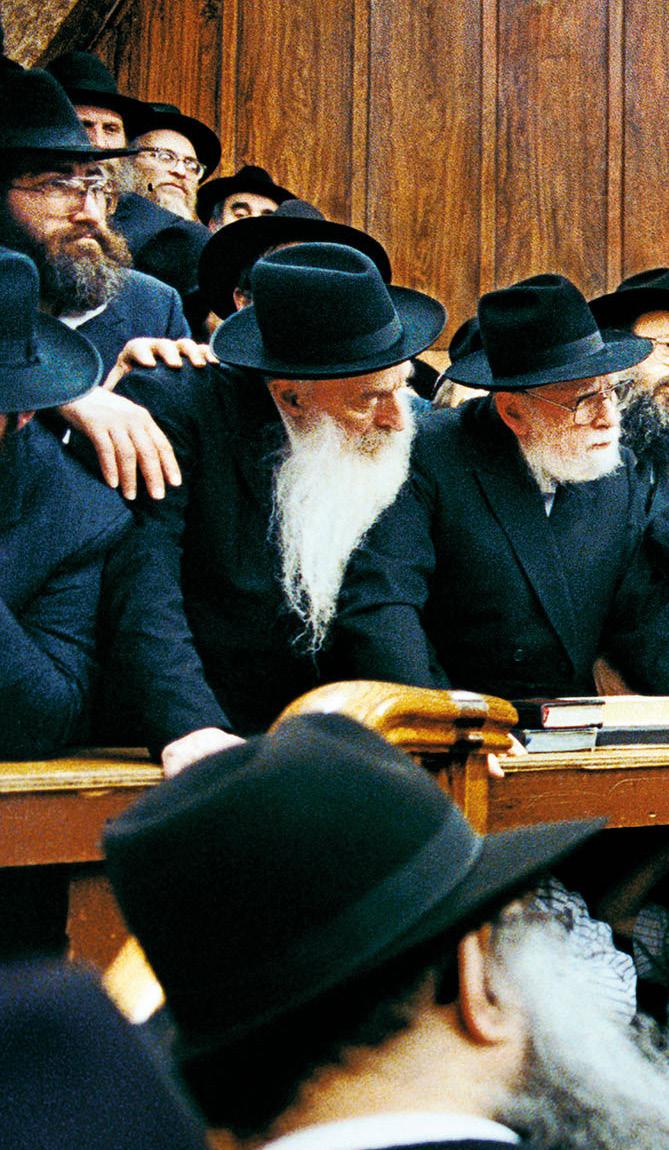
me to jump. I was shocked at that notion, but after some egging on, I did it anyway. At that moment, I perceived the tremendous passion and depth of belief innate to Chabad ideals. No one was simply a spectator. The energy in 770 Eastern Parkway was palpable. The sparse furniture in the synagogue was irrelevant beside the pulsating spirituality that emerged during a Chassidic gathering.
On this occasion, I took an incredible picture of the Rebbe
talking on the dais. Though I did not know what the Rebbe was saying, I felt deeply connected. The New York Times Magazine printed it on a double spread, and perhaps one of the few times the Times ever reprinted a double spread, they reprinted it ten years later.
The captured moment exudes passion and spirituality. This special photo has the mark of a Dutch painting. It hangs in many homes, Jewish and non-Jewish alike. I consider the photo the greatest of
12 COLLIVE MAGAZINE NISSAN 5784
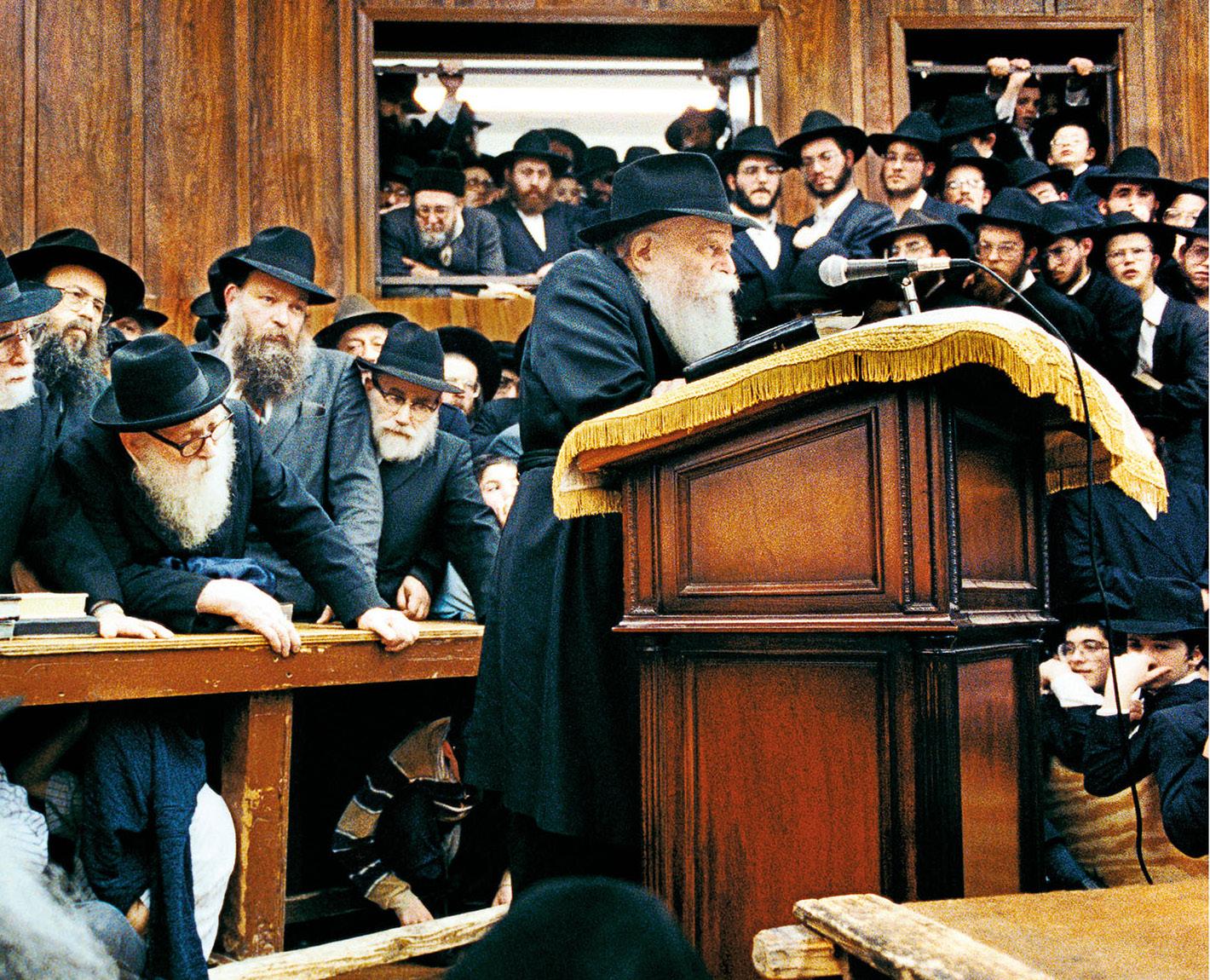
my career. In fact, when the New York Times Magazine published a commemorative photography book, I was honored that the one religious photo they chose was this one of the Rebbe.
It has taken me many years to learn that these talks that the Rebbe delivered were studied many times and are still studied today. The Lubavitchers still try to implement those teachings the Rebbe said. “Even at the large farbrengens, the
gatherings at which the Rebbe would speak to the public, what fascinated me was the focused attention and joy of all those present,” former U.S. Senator Joe Lieberman told me. “Being in the Rebbe’s presence was not like being on the House floor debating policy. It was an exercise of both mind and heart. His sincerity gave his words weight; he was inspiring thousands to act on those ideas.”
That is why the Rebbe is still relevant to this day.
Marc Asnin is an awardwinning photojournalist. He has photographed for New York Times Magazine, Time Magazine, Reader’s Digest and other prominent magazines. His images of the Rebbe will be published in a forthcoming book The Oracle: Portraits of Rebbe Mendel Schneerson (Hasidic Archives).
COLLIVE MAGAZINE NISSAN 5784 13
Marc Asnin/Hasidic Archives

HOW FAITH PLAYED A ROLE IN FREEING OVER 100 PEOPLE
By Rabbi Yehuda Ceitlin
HOSTAGE LIBERATION
The District Building, now called the John A. Wilson Building, where much of the violence took place.
Imagine more than 100 Jewish people being held hostage by radical Islamists. Imagine they are being tortured and beaten. Names such as Hamaas and Bibi are part of the story. U.S. authorities and Arab countries are heavily involved in the negotiations, with the world watching closely what transpires.
You don’t need to imagine this - it is what is happening in Gaza in 2024. But this exact scenario actually happened in Washington, DC, in March 1977.
That hostage crisis started when a group of gunmen armed with rifles and machetes seized the office building of the Jewish organization B’nai B’rith on Rhode Island Avenue, as well as a government building and a mosque.
Leading the assault was Hamaas Abdul Khaalis, an African American man born in Indiana who had broken ranks with the Nation of Islam movement to create a competing violent group following the Hanafi school of Islam.
Khaalis’ center had been attacked four years earlier by adherents of the Nation of Islam who murdered his wife Bibi Khaalis and drowned two children. Hamaas Khaalis now demanded they be brought to him so that he could exact justice. He also wanted a movie premiere about the Prophet Muhammad to be canceled.
The standoff, not far from the White House, lasted for a grueling 23 hours, bringing the nation’s capital to a halt. It ended with Khaalis and his men turning themselves in without battle to face a lifetime in prison.
In a farbrengen at the time (27 Adar, 5737), the Rebbe marveled at how what was described as the most dramatic hostage crisis in U.S. history ended with less bloodshed than anyone could have hoped at the time (three were killed).
The Rebbe said it was a miracle from Heaven that more people hadn’t been killed in such a hostile showdown— and that the crisis ended without any of the terrorists’ demands being met. “It has no explanation according to the laws of nature,” the Rebbe commented.
The Rebbe went on to highlight a turning point in the story. The Muslim ambassadors of Iran, Egypt, and
Pakistan met with Khaalis, holding the book of the Koran and reading passages from it.
“The way they influenced the captors to free the Jewish hostages was by stimulating in them their faith in the Creator of the universe,” the Rebbe said. “We see from here the wonderful power of faith that can transfigure a person from one extreme to another.”
Faith, emunah, isn’t just an exercise of the mind. It’s meant to influence positive action and alter a person’s behavior “so that it should be in line with Hashem,” the Rebbe added.
When you internalize faith, you can change drastically for the better.
One way that faith is internalized occurs during Pesach. Throughout the eight-day Yom Tov, we switch eating chametz (leavened bread and goods) for the humble Matzah, which the Jewish people ate during their Exodus from slavery in Egypt.
Kabbalah teaches that Matzah is the “bread of faith” (mechla demehemnusa in Zohar 2, p. 183b). The Jewish People took a tremendous leap of faith when they left Egypt, following Moshe Rabeinu into the desert. The people were called “believers and children of believers,” and their faith was only enhanced by eating the Matzah. Doing so made their faith an all-encompassing experience, just as food provides nutrition to the entire body.
When we eat the Bread of Faith, we internalize the importance of strengthening and maintaining our faith in Hashem despite the challenges we face. As every cell in our body absorbs the nutrients from the holy Matzah, every thought, word, and deed we do will undoubtedly be imbued with an infusion of faith.
Back then, faith saved our people from the evil plans of Mr. Hamaas. Today, we daven to be protected from the evil designs of the murderous Hamas regime and the immediate release of the more than 100 hostages in Gaza.
Rabbi Yehuda Ceitlin, Editor of COLlive.com and COLlive Magazine, is the outreach director of Chabad Tucson, and Associate Rabbi of Cong. Young Israel of Tucson, Arizona. He coordinates the annual Yarchei Kallah gathering of Chabad Rabbonim and Roshei Yeshiva.
COLLIVE MAGAZINE NISSAN 5784 15
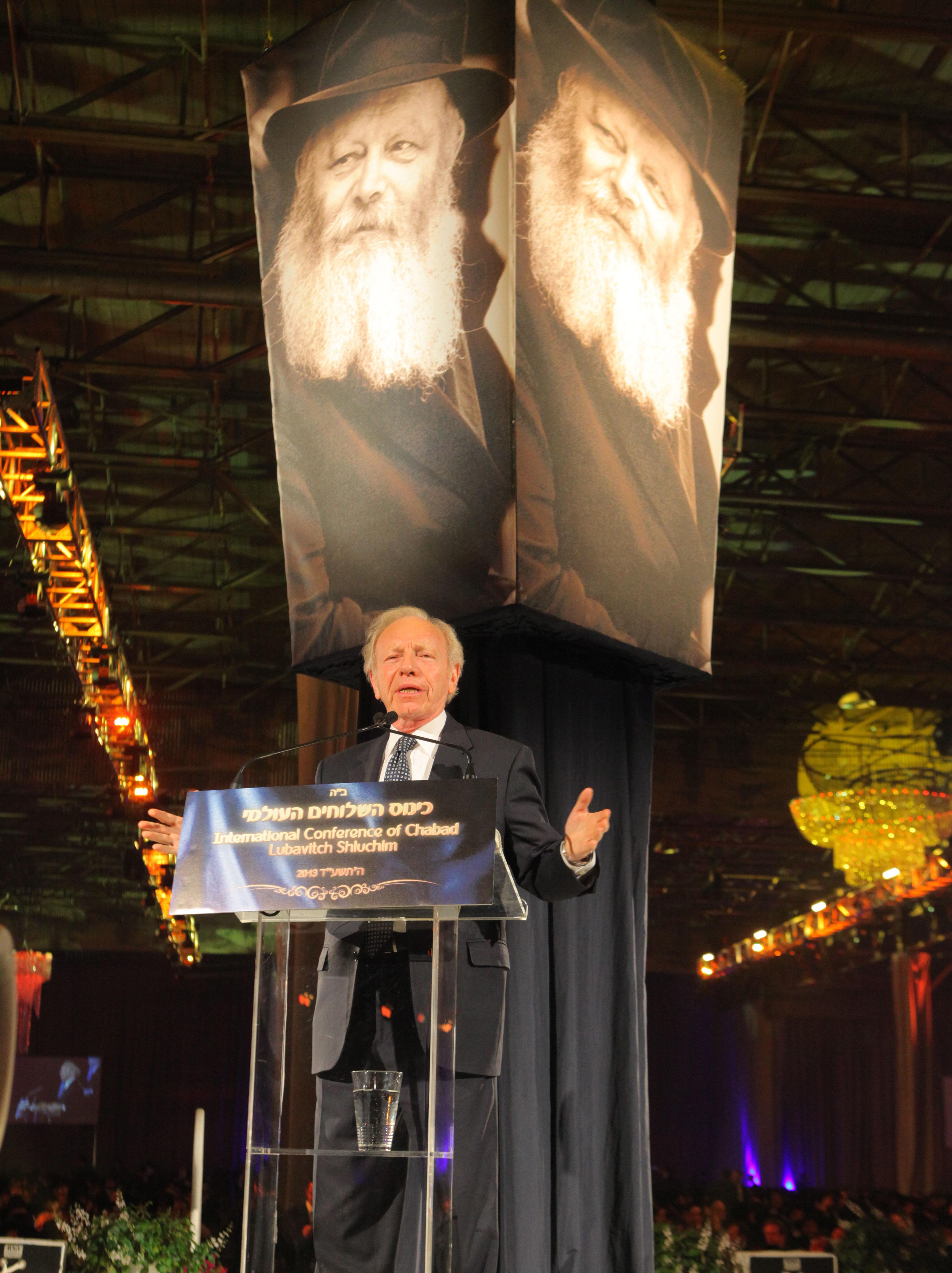 Senator Lieberman at the 2013 Kinus Hashluchim.
Senator Lieberman at the 2013 Kinus Hashluchim.
THE CHABAD ADVENTURES OF JOE LIEBERMAN
Outsmarting the Secret Service, dancing at 770 and other stories
By Dovid Zaklikowski
Photos: Lubavitch Archives, the Deitsch
Commentators and historians have difficulty fitting the late U.S. Senator Joseph Lieberman into a box. He was a longtime democrat, but did not see eye to eye with them in many areas. He refused to call himself an Orthodox Jew, but he proudly accepted the title. He held some of the highest positions in the United States government but saw himself as a simple person. He was rational in his thinking but appreciated holiness and spirituality.
It was the little things in life that moved him deeply. He was forever grateful for the meals, wine and challah—as the 2000 democrat vice president nominee he stumped across the United States elections— that the Shluchim dropped off at their hotels. It was as if he was some simple Jew, who was not running for the highest office any Jew was ever nominated in the United States history, that they were bringing it to. Or as if it was the most difficult task a shliach had done for another Jew. But to him—as he would say over and over, “I am just a simple boy from Stamford”—it was so much more.
“I used to say that Chabad was sending out more Shluchim than
McDonald’s was opening new hamburger places,” he said in 2013. However, it was much more over two decades after Gimmel Tammuz, and “Chabad was actually developing a larger worldwide organization than the CIA.”
On his travels during the 2000 elections, his hotel was kept under wraps by the Secret Service; “it was classified for security reasons,” Lieberman once told. But somehow, when he arrived at his secret location and went to his hotel room, there was a kosher meal waiting from the local Chabad Shliach. The only way he could explain that to director James Woolsey, the then director of the CIA, he said, “was that Chabad had one of its own placed high up in the United States Secret Service.”
But in truth, he once explained, he never met the Shluchim who delivered the meals. His campaign would not permit it, and the Secret Service would never let them get close if they tried. But he found out the secret on a trip to Germany. As chair of the Senate Homeland Security and Governmental Affairs Committee for many
years, Lieberman was in Munich, Germany, for a NATO security conference. Over ten thousand protesters arrived at the conference center to protest the Iraq war. From the airport, the senator was taken with a military liaison, and he saw how the hotel was surrounded by the military. When he was entering the hotel, the senator was greeted by a military attaché, “I need to explain a miraculous event that occurred that afternoon.”
It was Friday afternoon, and he told him, “As you have seen, senator, the streets around the hotel are sealed off with riot control vehicles and police cars. A few hours ago, I was called to come out and meet someone.”
When he came out, the attaché recounted, “I watched as the police vehicles separated, and through them walked a young rabbi, with a beard, a black suit, and black hat, carrying a large shopping bag. It was like the Red Sea separating.”
Surprised, the military man asked what he wanted: “I have a bag for Senator Lieberman for the Sabbath.”
All has been checked, he told the
COLLIVE MAGAZINE NISSAN 5784 17
family and the Kinus Hashluchim office
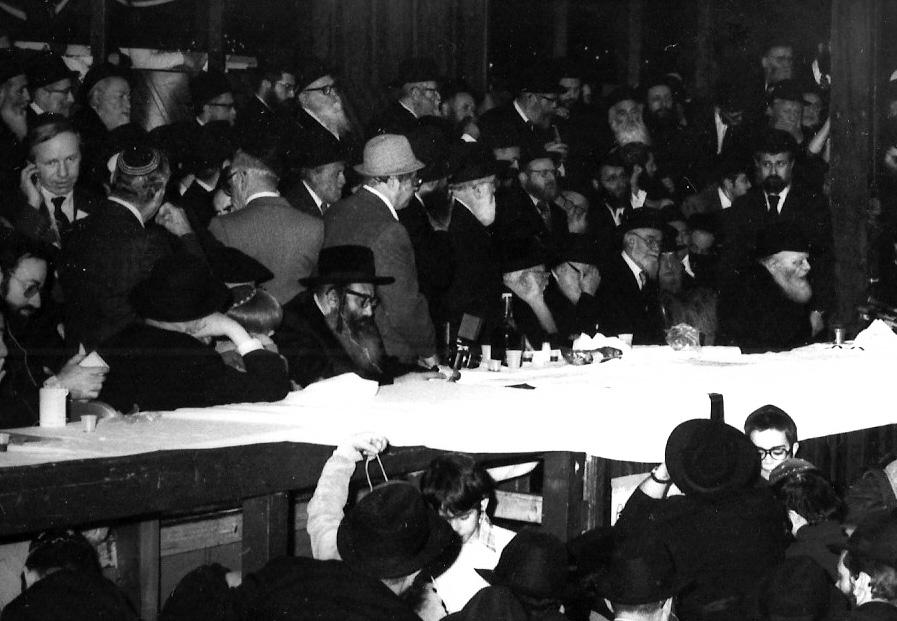
surprised senator, “There is nothing to worry about.”
It was challahs, wine and food for Shabbos. After the day of rest, he called the local shliach, Rabbi Yisroel Diskin, “How did this happen?”
It turns out that Lieberman’s mother, as a classic caring Jewish mother, would report her son’s whereabouts to her local Shliach, Rabbi Yisroel Deren. He would pass on the location to the nearest Shliach in the area to do the rest. The secret was out, and for the coming decades, Lieberman never ceased telling of his appreciation.
A WAYWARD JEW
Senator Lieberman’s first introduction to Chabad was when he
was studying at Yale in the 1960’s. “I had grown up in an Orthodox Jewish family,” he told me in 2023 for Marc Asnin’s photobook The Oracle: Portraits of Rebbe Schneerson (forthcoming by Redux), “but left observance behind when I went to Yale.”
William Horowitz, a Connecticut banker and Yale alumnus, “had a radical idea.” He had developed a fascination with the Lubavitcher Rebbe and invited the student to spend Simchas Torah with him in Crown Heights, telling him it would be “an extraordinary experience.”
He was not his only guest, Horowitz also recruited Pastor William Sloane Coffin, a civil rights activist and chaplain at Yale University. “Thus, our odd group spent the two days of the holiday in Brooklyn among
thousands of joyous Chassidim.”
Over five decades later, Senator Lieberman still recalled that moment. “The old shul, packed to capacity, was a total balagan, utter chaos,” he said. “The air was laden with excitement, emotion, faith— you could feel it.”
Then, he said, all of a sudden there was complete silence. “When I looked up, the Rebbe appeared and strode to his place.”
He said that while he had celebrated Simchas Torah many times before, “I had never encountered Jewish passion of the sort I witnessed that day in the Rebbe’s presence.”
It was the beginning of his journey back to yiddishkeit, and a love for the Rebbe and Chabad.
18 COLLIVE MAGAZINE NISSAN 5784
Senator Liberman, standing extreme left, at a 1980 farbrengen with the Rebbe
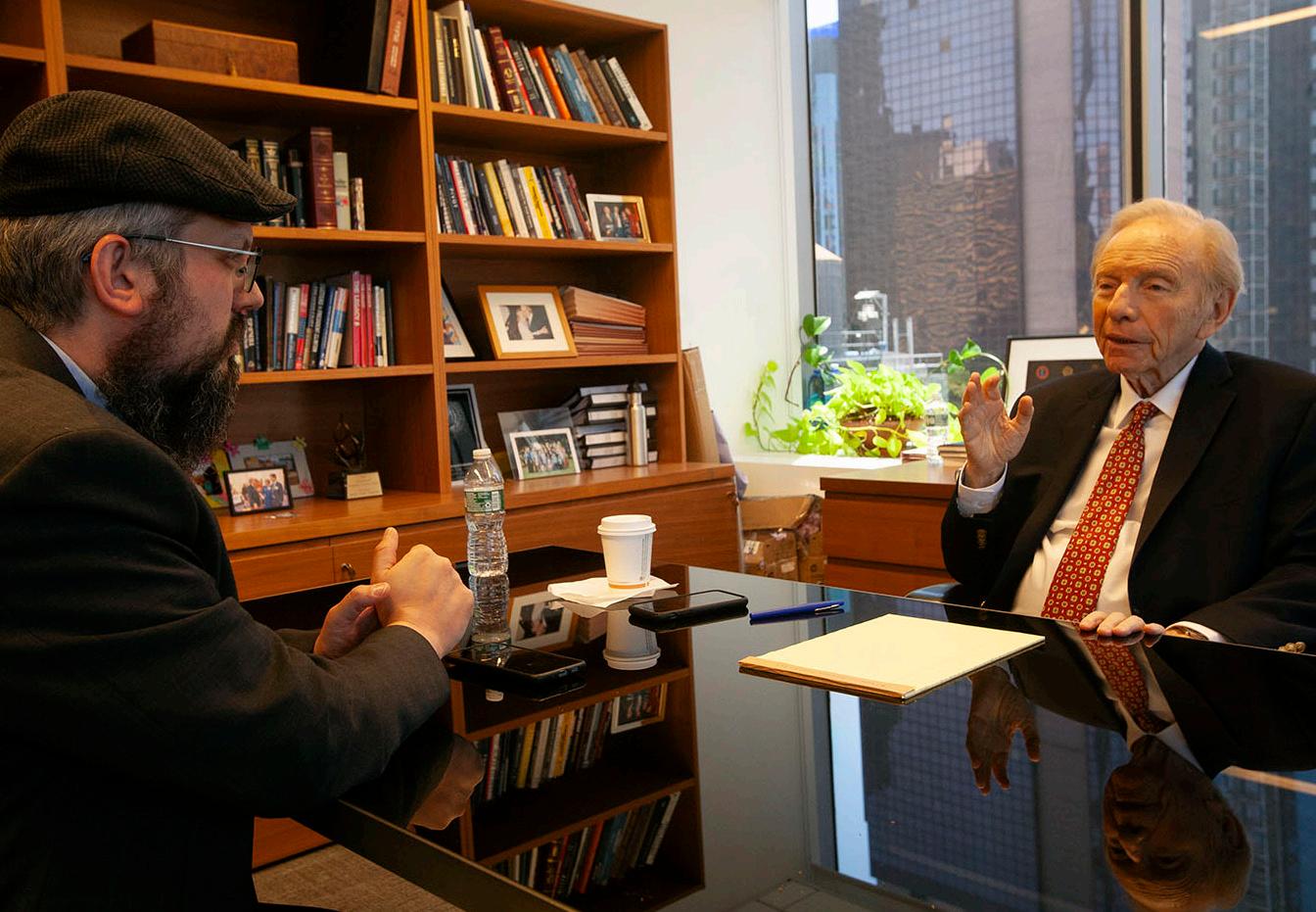
POLITICAL INVESTMENT
R’ David Deitsch, a New Haven businessman and philanthropist, first met the twenty-something Joe Lieberman on the streets of their middle-class New Haven neighborhood. “He walked around the street, and he was very friendly, kind of wise,” the senator said in an interview. “He had a twinkle in his eye.” Their brief conversations left an impression on the young lawyer. “He took his words seriously, and you knew he had seen a lot in his life.”
Lieberman was just embarking on his own journey. A recent graduate of Yale Law School, he was known for his integrity and consistency.
Now, he was hoping to bring those qualities to politics. The child of immigrants, he was a firm believer in the American dream. America had “a unique context in the history of the world,” he told New York magazine in 2000. “Jews, and everyone else, have an opportunity. The government is ‘us,’ not ‘them.’” Deitsch, a Lubavitcher chossid, shared Lieberman’s respect for liberal democracy. Though he was a registered Democrat, Deitsch had little to do with politicians—and voted for whoever he thought could relate to working people. But “Joe” was a family friend. After getting to know Deitsch, he became friendly with his son-in-law, and the two would discuss politics. “I admit to you that sometimes we didn’t spend all our time davening,” the senator
said wryly. Soon, he was doing legal work for Deitsch Plastic.
Lieberman recalled his visits to the Deitsch Plastic factory as delicious. “I always enjoyed going,” he said, “because there was always something good to eat that was kosher, and we would sit and talk.”
Lieberman recalled Dovid Deitsch as someone who was always ready for a laugh. “He knew how to twist a phrase in a very elegant and learned way,” the senator remembered, often surprising those around him with his wit.
In 1969, when Lieberman ran for the Connecticut Senate as a Reform Democrat, Deitsch was one of his first supporters. The senator said it wasn’t clear that he would win, but he saw the donation as an investment: “I was like a startup
COLLIVE MAGAZINE NISSAN 5784 19
Dovid Zaklikowski interviews Senator Lieberman in 2023 for The Oracle: Portraits of Rebbe Schneerson.
business.” In Deitsch’s mind, someone who dared to try deserved assistance. The money provided a morale boost as well, the senator said. “I think he got pleasure out of the fact that this young man, who was an Orthodox Jew, was running at that time for state senator.”
It turned out to be a good investment. Lieberman served in the Connecticut State Senate for ten years, six of them as the majority leader; he would become the state’s attorney general in 1983. When he ran for the U.S. Senate in 1988, Deitsch and his extended family contributed generously to the campaign.
JOINING FARBRENGENS
In New Haven, the local shluchim took Lieberman to farbrengens with the Rebbe. “I was able to listen to a simultaneous translation of the Rebbe’s words as he spoke,” he said, “I was deeply impressed, not only by his spirituality and extraordinary scholarship but also by his intellectual and physical stamina as, hour after hour and without the aid of written notes, he brought forth one profound insight after another.”
Even at the large farbrengens, he said, what fascinated him was the focused attention and joy of all those present. Being in the Rebbe’s presence was not like being on the House floor debating policy. It was an exercise of both mind and heart.
“There were multifaceted experiences,” he said in 2013, “tremendous learning, great joy, and this remarkable exchange between the Rebbe and the Chassidim looking to catch his eye for a l’chaim And he would go person to person, eyeball to eyeball, and of course there was more than a l’chaim in that connection. There was affirmation, there was motivation,
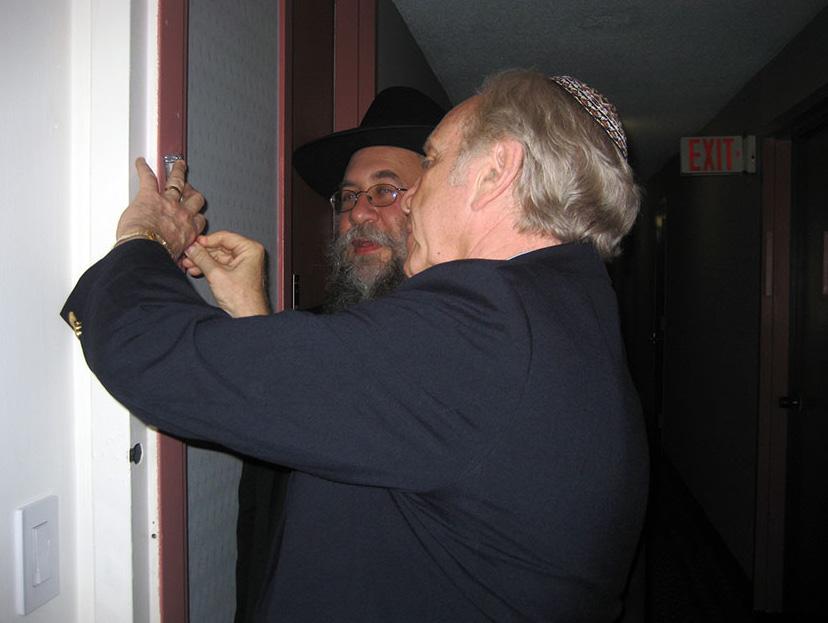
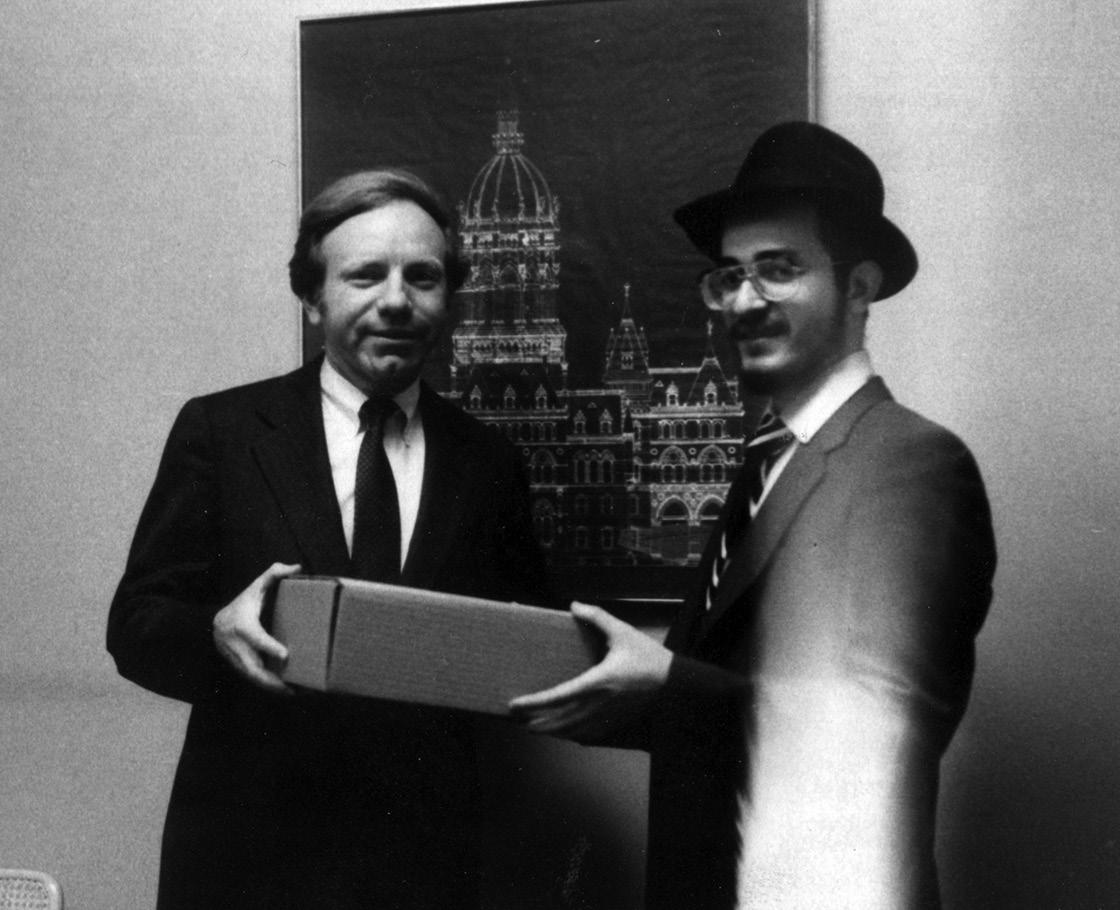
there was inspiration.”
At the second gathering he attended, Lieberman was seated on the platform very close to the Rebbe. “I held a small cup of wine in my hand,” he recalled, “the Rebbe gave me a long, penetrating look, a look that held within it immeasurable vitality and joy.”
That, Lieberman said, drew him back to Crown Heights again and
again, and in the intervals between visits, he began corresponding with the Rebbe. When he was appointed attorney general of Connecticut, the Rebbe wrote him a letter that, he said, “affected me deeply.” The Rebbe blessed him with success and quoted Yirmiyahu Hanavi (29:7): “Seek the welfare of the city and pray to G-d for it, for in its peace you shall have peace.”
20 COLLIVE MAGAZINE NISSAN 5784
Rabbi Pesach Sperlin, then the shliach in New Haven, brings shmurah Matzah to Senator Lieberman
Senator Lieberman affixes a mezuzah on his home with Rabbi Deren

“It was a powerful reminder of the interdependence of the individual and the collective,” he told me, “and, along with several other letters he wrote me over the years, it played a meaningful part in developing my outlook on life and my sense of purpose.”
FEARLESSNESS
Lieberman’s historic candidacy as the vice presidential running mate of Al Gore in 2000 was one filled with many tales and experiences. Yet, it was one favorite memory that occurred not long after the Democratic National Convention.
Lieberman and his wife Haddasah were going to spend Shabbos in Lacrosse, Wisconsin. The nearest Shliach was Rabbi Dovid Greene,
director of the Chabad of Rochester in Minnesota. He, as expected, “sent a whole bunch of Lubavitch kosher food for Friday night,” Mrs. Lieberman told The American Jewish World.
The campaign refused Rabbi Greene to meet the Liebermans, so Mrs. Lieberman called him before Shabbos to thank him. “What can I do for you?” she asked.
Rabbi Greene said that there was nothing to thank him for. He was happy to assist them with their Shabbos meal. When she persisted, he said he learned that the Liebermans have a staff member who is Jewish. “Why don’t you get together to light candles Friday night?” he suggested.
That evening, Mrs. Lieberman
invited the staff member to join her in lighting Shabbos candles. “That’s a beautiful story,” Senator Lieberman later told. “She had never done it before, and it moved Hadassah and me.”
Mrs. Lieberman added, “It really hit me, because I’m asking what can I do for you, and his immediate response was to just ask that staff person if they want to light candles. It was a typical Lubavitch thing; it was really lovely.” In fact, Mrs. Lieberman told, “Every time I’m out on a Shabbat, I’ll find a Jewish staff person and ask them if they want to light candles.”
Senator Lieberman said that this was a quality that Shluchim possessed, “a quality that probably people don’t usually associate with you, but I do: Which is your fearlessness.” He
COLLIVE MAGAZINE NISSAN 5784 21
Vice President Al Gore and Senator Joe Lieberman as running mates on the Democratic presidential ticket in the 2000 general election. Joseph Sohm
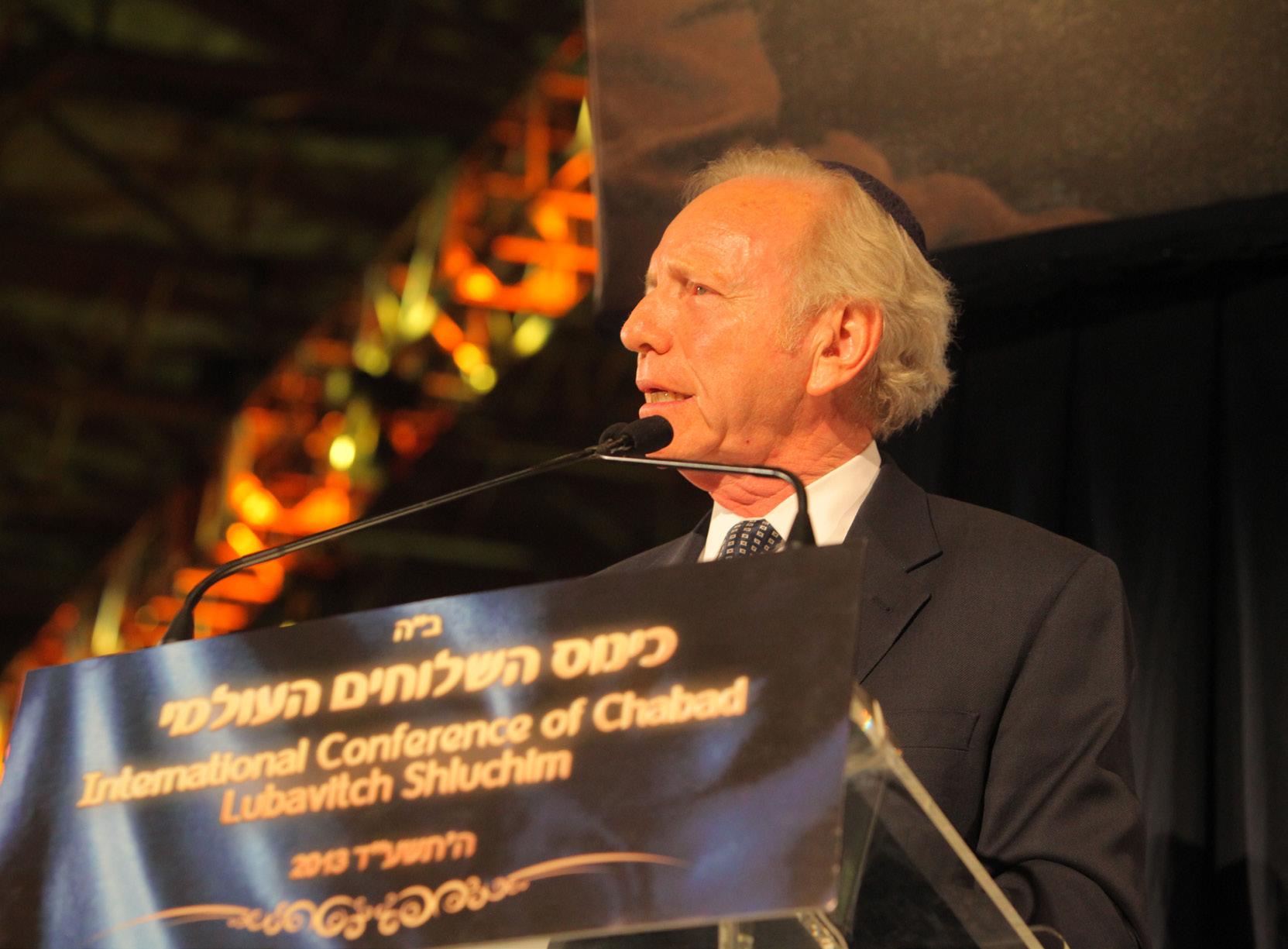
said that one of the worst moments in Jewish history was when the meraglim said they would not be able to conquer Canaan. “They had no self-confidence, they had no understanding, even though they had seen the miraculous acts of Hakadosh Baruch Hu, that they could achieve the task.”
The shluchim, on the other hand, “wherever you are sent, big city, small town, a lot of Jews, very Jews, beautiful weather, or cold weather, you go forward fearlessly with confidence because you know you have a mission to perform. And you do it beautifully.”
CONTINUED INSPIRATION
As time passed and Lieberman’s connection with the Rebbe continued to deepen, “I began to come to him for a blessing before every important event in my life.” He did so before marrying his wife, Hadassah, and again at the
beginning of 1989, when he began his first term as a senator.
“On my way to the airport to fly to the swearing-in ceremony in Washington, I stopped in Crown Heights with my entire family,” he said. He said the video of that meeting is one “which I cherish and look at often.”
The Rebbe blessed him with success and said he would be a source of light for the Jewish people in general. He said he would give him a double blessing so that he would not have to waste my time coming back: “Use your time to do much more than you did until now, which already has been a great deal.”
What especially touched him was that the Rebbe found the right words for each member of his family. He asked his daughter, who was less than a year old at the time, whether she was helping him, adding that children sometimes help without knowing that they are doing so “by their very existence, or by a smile.” To his mother, Marsha, the Rebbe
gave extra tzedakah, and reminded her to continue to assist him, “Even a senator needs help.”
“I continued to visit the Rebbe and seek his guidance until he became ill in 1992.”
But his relationship did not end after that, and he continued to be inspired by the Rebbe, particularly after leaving the senate never to retire. “The idea of retirement,” he said in 2013, shortly after leaving the senate, “is rooted in modern societies notion that life is composed of productive and non-productive periods, that time to passively enjoy the fruits of one’s labor does indeed have its time and place in the world to come.”
But he said, he takes the Rebbe’s message to heart, “The Rebbe had a much more profound insight and it’s why I’m so happy to be here tonight. So here every day of life, G-d gives us the opportunity to get something more done.”
It is not the only message that the senator had taken to heart, he regularly learned from the Gutnick Chumash with the commentary of the Rebbe, which he recommended as Shabbos reading material in his book The Gift of Rest.
Speaking of the Rebbe, Lieberman said: “He was a leader with a mission, and that was to spiritualize the world; to convince people through acts of kindness and goodness, to bring the world as close as we possibly could in our time to perfection. And to do it one by one, Mitzvah by Mitzvah, and this is what you’re you dear shluchim take with you throughout America and throughout the world.”
22 COLLIVE MAGAZINE NISSAN 5784


















PlumbersHaven.com | (718) 604-1300 516 Empire Blvd Brooklyn, NY 11225 @plumbershaven Your home is your haven. FULL LINE OF: Vanities Shower Systems Whirlpools Faucets & Coordinating Bathroom Fixtures

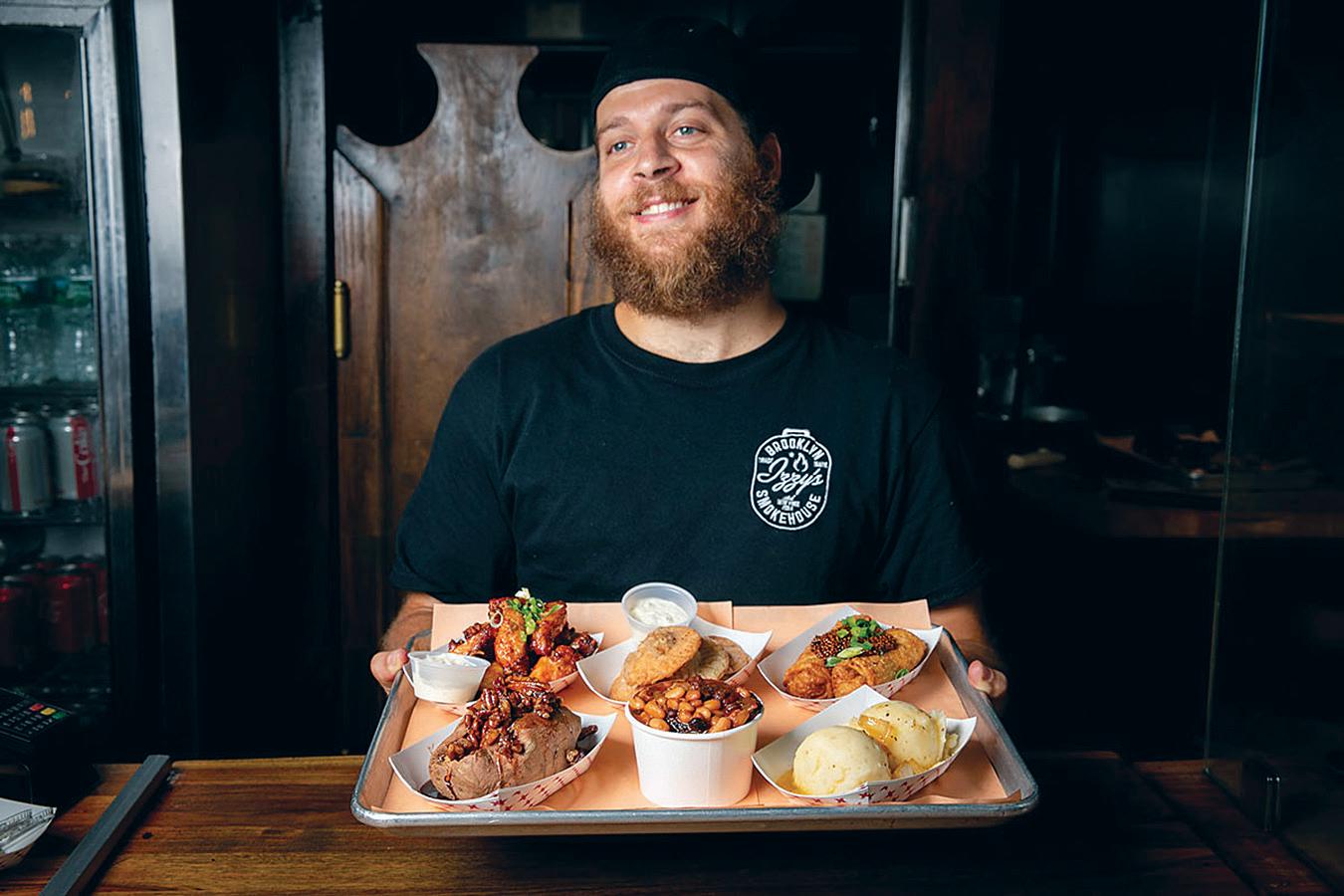

The Hebrew Free Loan Society provides interest-free business loans to low-and moderate-income residents of New York City. Find out what HFLS can do for you: 212.692.9023 • biz@hfls.org WWW.HFLS.ORG


COLLIVE MAGAZINE NISSAN 5784 25 INTEREST-FRE E SMAL L BUSINES S LOAN S FOR NE W YORK CITY
TWO GUARANTORS MAY BE
SOMETIMES
LET US
YOU
with
Heights Young Entrepreneurs
Startups • Expanding Businesses • Storefronts • Home-Based • Men/ Women Owned Get a loan up to $50,000 No Interest. No Fees. Ever. Restrictions apply.
REQUIRED.
ALL A BUSINESS OWNER NEEDS TO SUCCEED IS A HELPING HAND
LEND
A HAND. An initiative of the Hebrew Free Loan Society in partnership
Crown


HAPPY BIRTHDAY, REBBE
Highlights of 5 notable farbrengens held in honor of Yud Aleph Nissan
by Yossi Feller
Photos: JEM/The Living Archive
The Gemara1 states that “when Moshe Rabbeinu was born, the entire house was filled with light.” The Rebbe quoted this on the birthday of his Rebbe, the Frierdiker Rebbe, explaining that this is because birth is when the neshama begins its mission of what it must accomplish in the world. On the Rebbe’s birthday, his mission of empowering all Jews in fulfilling Torah and Mitzvos, thereby illuminating Hashem’s home, began. Thus the great joy on the Rebbe’s birthday, when “these days are remembered and celebrated.” 2
While the Rebbe held a gathering in his room in honor of his 50th birthday in 5712, and a farbrengen in honor of his 60th birthday in 5722, Yud Aleph Nissan farbrengens were not an annual event. This was the case until the surprise Yud Aleph Nissan farbrengen in 5731. For the next fifteen years, the Rebbe would hold a farbrengen in honor of his birthday. A sampling of highlights from those farbrengens are presented here.
1. Megillah 14a
2. Yud Beis Tammuz 5722
COLLIVE MAGAZINE NISSAN 5784 27
1
NO RETIREMENT! 5732
This farbrengen marked the Rebbe’s 70th birthday. The previous month, on Purim, the Rebbe addressed those who wished to give him something for his upcoming birthday: “In general the recipient can’t set preconditions for a gift, but at the same time, a present is in order to please…”
“Therefore,” the Rebbe continued, “whatever the gift may be, whether it’s tzedakah, good deeds, etc., it should include an increase in Torah study, in both revealed parts of Torah (nigleh) and chassidus.”
Chassidim worldwide, especially bochurim, heeded these words, setting and reaching goals of additional Torah study, many in multiples of 70.
The Rebbe also said that those who wished to join in the celebration should ensure it wouldn’t hinder their ability to spend Pesach, and especially the sedorim, with their familes.
The Rebbe received hundreds of well wishes from world leaders in the form of letters and telegrams.
U.S. President Richard Nixon sent the famous Jewish author Herman Wouk to bring his letter and convey his greetings. President Zalman Shazar of Israel sent then-ambassador to the U.S. Yitzchak Rabin to give his personal regards, as well as those of the entire government.
In continuing with the practice of putting niggunim to words of the Rebbe’s new chapter of Tehillim, four niggunim were made in honor of this milestone birthday, all of which are sung to this day. They are B’choh Hashem Chosisi; K’moifeis Hoyisi L’rabim; Avoi Bigvuros; and T’raneinoh S’fosai.
At the now-famous fabrengen, which was a few days before Pesach, the Rebbe discussed the fact that Hashem created us specifically to toil, thereby elevating the world. After a thorough analysis of the various forms of toil, the Rebbe shared that while some suggested he cut back on his activities, he would instead be launching 71 new Chabad institutions worldwide, and pledged to participate in ten percent of their costs as his partnership.
This farbrengen marked a turning point in Chabad’s growth worldwide. Over the following year, many new institutions were established, well over the goal of 71.



5737
APPRECIATION TO AMERICA
Yud Aleph Nissan 5737 was the Rebbe’s 75th birthday. The farbrengen was packed with shluchim and guests, while the stage was crowded with elected officials and dignitaries, all there to honor the Rebbe on this special occasion.
At the start of the farbrengen, the Rebbe thanked all those present, as well as the many well-wishers from around the world. In the second sicha, the Rebbe thanked the government officials present as well as those who sent their well-wishes.
The Rebbe added that he’s especially grateful to the US government for saving Jews, including the Frierdiker Rebbe, from behind the Iron Curtain. This of course saved the entire movement. As the Frierdiker Rebbe declared upon his arrival on U.S, shores, that this was not a private rescue, but to show that “America is no
Different,” and also here, a dwelling can be made for Hashem.
In between talks, prominent rabbis, elected officials, dignitaries, and others presented the Rebbe with their birthday gifts, from proclamations and honorary keys to cities, to Torah books including translations of the Tanya, and more. As the farbrengen progressed, a large pile of gifts formed on the Rebbe’s table.
Some of the topics the Rebbe discussed during the farbrengen included a story in Gemara Pesachim about Pesach occurring on Shabbos, as was the case that year; the importance of ensuring every Jew has their Pesach needs; the importance of not adding to the Haggadah text; and the importance of having spiritual mentors (mashpi’im)
Russian artist Vladimir Dashevsky says l’chaim after presenting the Rebbe with a painting.

5743
SPREADING SHEVA MITZVOS BNEI NOACH
At the Yud Aleph Nissan farbrengen of 5743, the Rebbe emphasized the importance of influencing non-Jews in fulfilling the Sheva Mitzvos Bnei Noach, the seven divine commandments for all of mankind. The Rebbe went on to say that it is incumbent upon every Jew to influence their non-Jewish acquaintances in this regard, wherever they come in contact with them.
The Rebbe illustrated this with the following story about the famed philanthropist David Chase:
“The story concerns a Jew, blessed by G - d with great wealth, who owns a yacht. He occasionally spends his vacation time on his yacht, and employs a captain to sail the yacht. In keeping with the tradition to face east toward Jerusalem during prayer he would ask his nonJewish captain where east was whenever the time for prayer arrived.
“The first time this happened, the captain paid no special attention, thinking it was a chance occurrence. When it happened a few times, the captain asked him: ‘You are not the captain, not even a sailor. Why, then, are you so interested in knowing which direction is east?’
“Because this Jew was not ashamed of his Judaism, he explained the reason to the captain: He wants to pray
to G - d. Since prayers pass through the site of the Bais Hamikdash in Jerusalem which was east of where they were sailing, he needs to face in that direction.
“The captain was very excited and impressed, and said: ‘If you, a successful man, who employs others (including the captain), consider it proper to bond yourself with G - d three times a day through prayer, and are ready to interrupt your activities to face east to pray properly — I too shall begin to think of G - d!’
“I do not know if the captain also said he would pray. But even if not, merely thinking of G - d already serves as prayer. Moreover, since ‘one mitzvah leads to another mitzvah,’ it is certain that the captain, remembering G - d, would also have been influenced not to do anything that is contrary to righteousness and justice.
“This story shows how every Jew can influence non-Jews to observe the Sheva Mitzvos Bnei Noach — to the extent that his influence is automatically felt when he conducts himself properly, as seen in this story. This Jew did not intend to fulfill the Rambam’s ruling to influence nonJews. He merely was steadfast in his Judaism — and this conduct resulted in a positive change in a non-Jew’s life.1
1. From Sichos in English transcript.
COLLIVE MAGAZINE NISSAN 5784 31
5745
THE BIG CHAIR
5745 turned out to be the last year that a Yud Aleph Nissan farbrengen was held.
During the farbrengen, the Rebbe questioned how it was appropriate for so many people to gather for a celebration honoring a single person, seemingly contrary to Torah’s directive to stay away from haughtiness and self glorification.
The Rebbe explained that in truth, however, “This farbrengen is not tied to an individual or a private person, rather to the total group and its teachings…To further the work of the Chabad movement and the general Chassidic movement, which dates back even further…”
“In our days, being that our Nasi, the previous Rebbe, is in the ‘World of Truth,’ he requires ‘arms and legs’ here in the physical world to be involved in spreading his teachings and bringing them into action. To be successful it must also be organized; therefore, there is one person who serves as a ‘servant to this people,’ whose role is to organize these activities. This being the case, it makes no difference who it is — what is of the essence is to continue the activities and the Divine service of the previous Rebbe, the leader of our generation.
The Rebbe illustrated this with a story from his youth:
“In ‘cheder’ they used to tell the story of one of the truly great rabbinic leaders who served as dayan and rav of a major Jewish metropolis in Europe. He was small in stature and very thin. Once a group of his antagonists ganged up on him and argued, ‘How is it proper that a short, scrawny Jew should be the dayan and rav of such a large and illustrious city?’ He replied to them and said, ‘True, short and thin am I, but the chair on which I preside is very high!’
“The ‘theme’ of the previous Rebbe — his teachings, and activities — are very great, it matters not that the one who sits on the chair is small; the chair of the Nasi — the previous Rebbe — is great!
“Consequently, the fact that a reason or cause was
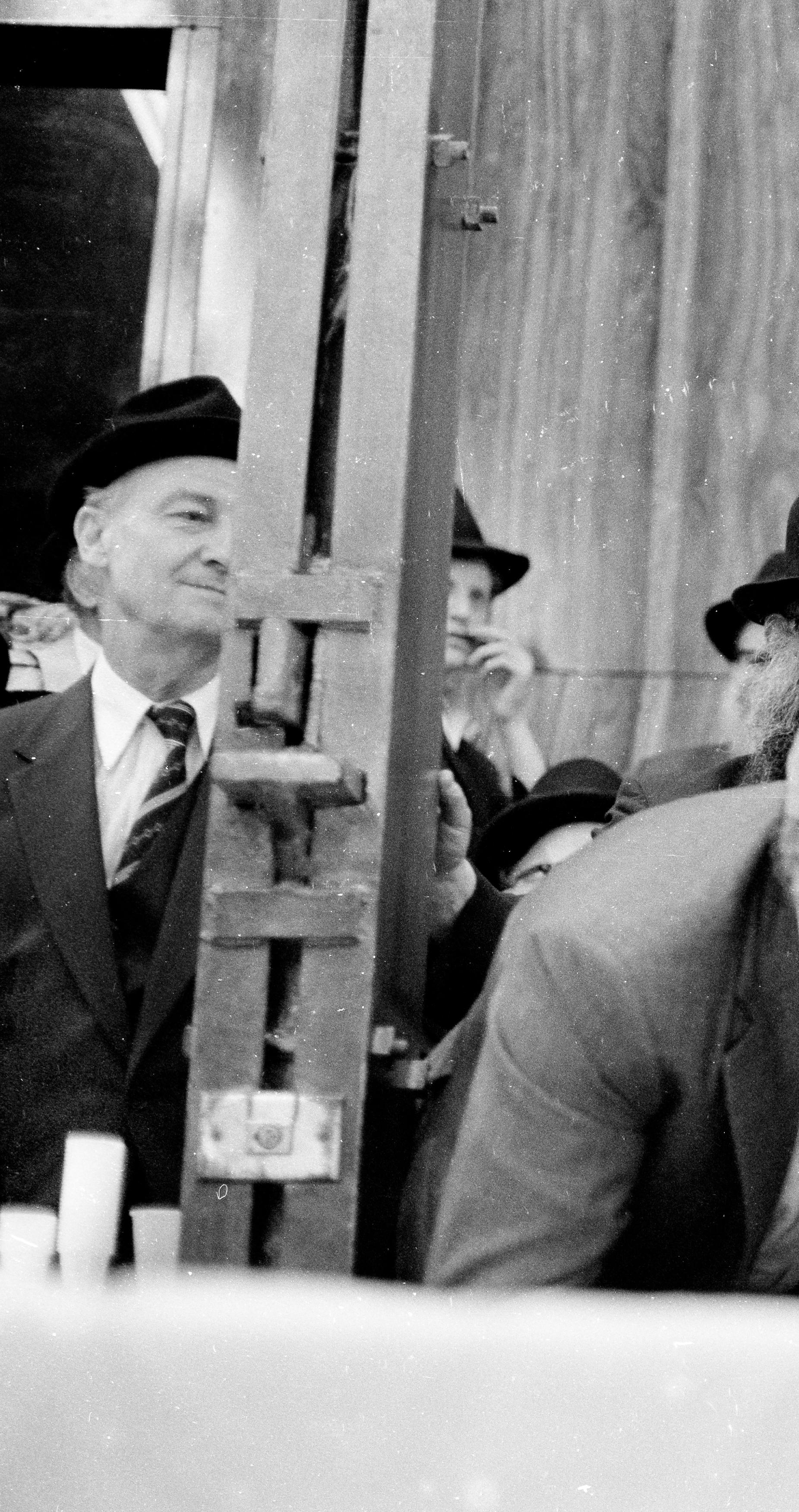
found, to connect this farbrengen to the birthday of a certain individual, is really nonessential; it is however important and helpful in raising and expanding the ‘chair’ — encouraging more study of Chassidus and spreading the wellsprings to the outside.1
The Rebbe also connected the gathering to the first completion of the Rambam’s Mishneh Torah study cycle
1. Sichos in English transcript.
32 COLLIVE MAGAZINE NISSAN 5784
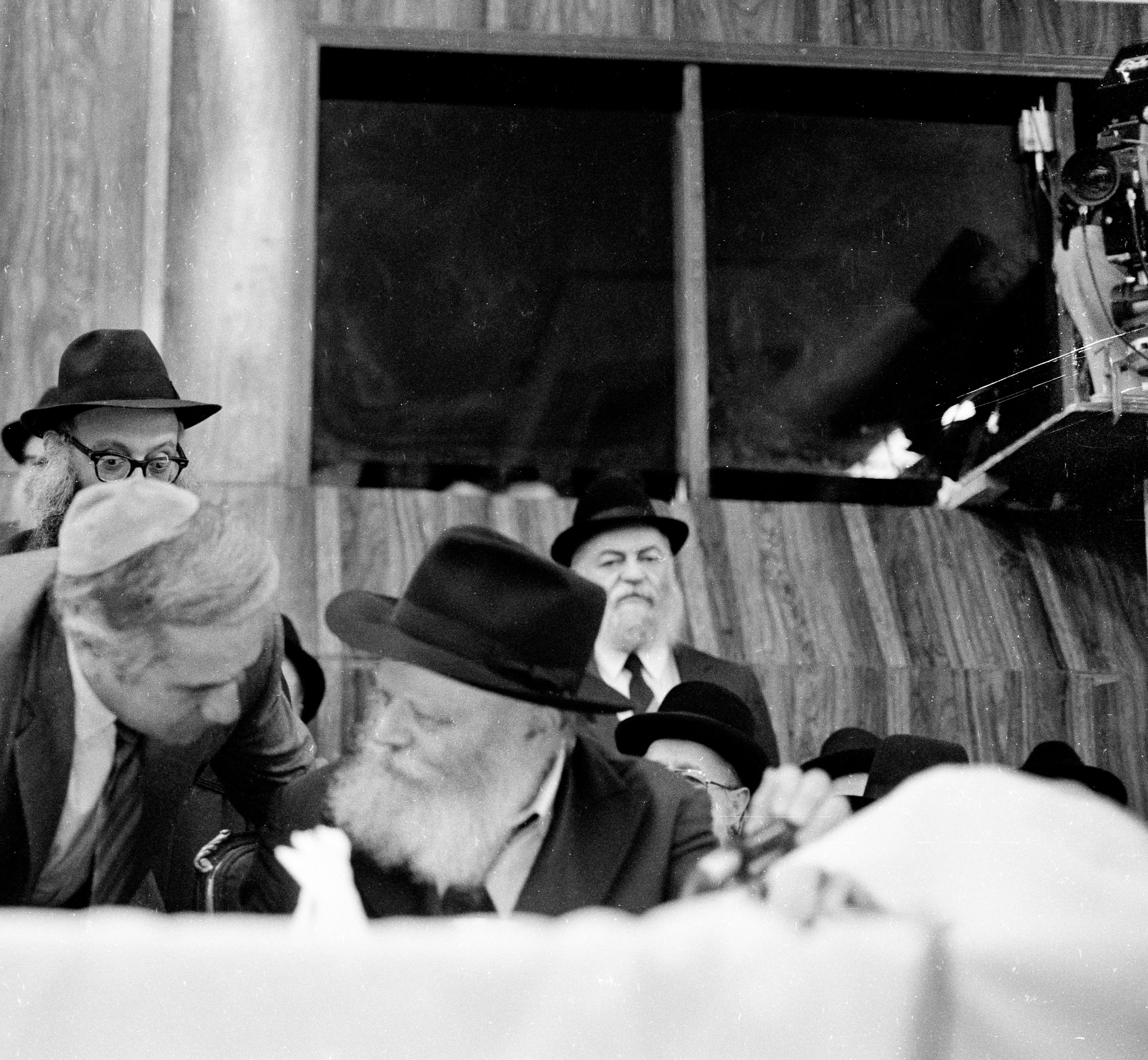
which he had introduced the year before.
After extolling the Rambam’s greatness, highlighting the quote engraved on his gravestone: “From Moshe (Rabbeinu) to Moshe (Ben Maimon - Maimonidies), none arose like Moshe,” the Rebbe proceeded to conclude the Mishneh Torah. This was immediately followed by starting again from the beginning, for the second study cycle.
COLLIVE MAGAZINE NISSAN 5784 33
AHAVAS YISRAEL DESPITE THE PAIN

34 COLLIVE MAGAZINE NISSAN 5784
Iris Haim (L) speaks at a press conference of family members of Israeli hostages at the Israeli embassy in London, England, 20 November 2023.
Since losing her hostage son to friendly fire in Gaza, Iris Haim’s story of forgiveness has inspired Jewish communities worldwide.
by Tzemach Feller

Iris Haim had more of a right than almost anyone to be angry.
She underwent the agonizing pain of months waiting for any news about her son, Yotam, who was kidnapped from his home in Kibbutz Kfar Azza on October 7. After 70 days of hope, longing and suspense, the crushing news came that Yotam was dead—killed not by his Hamas captors, whom he had somehow managed to escape, but by his own brothers, by IDF soldiers who mistook Yotam and fellow hostages Samar Talalka and Alon Shamriz for enemy combatants.
Yotam and his friends had endured hell on earth. They had managed to escape. They were waving a white flag, shouting in Hebrew—doing anything they could to identify themselves as Israelis, but it was to no avail. In one of the most heart-wrenching moments in a war filled with them, they were gunned down by the very soldiers who were sent to rescue them.
So Iris had every right to be angry. But she chose not to be. And she chose to share that with the world.
“Ahavas Yisrael is a great mitzvah, and tonight, you will see the essence of it. You will hear from a woman who exemplifies, more than anyone, true Ahavas Yisrael; who shows us that you can love someone despite the fact that they have caused you harm,” said Rabbi Yosef Lipsker, who directs Chabad of Berks County in Reading, PA with his wife Chana.
The occasion was a talk by Iris Haim to the community the Lipskers lead. The
COLLIVE MAGAZINE NISSAN 5784 35
“I wanted to tell you that I love you very much and I embrace you from afar. I know that everything that happened is completely not your fault, it is nobody's fault — except Hamas.
community would be inspired by her tale of sacrifice and fortitude.
Her talk is accompanied by a slideshow, as she narrates footage from her son Yotam’s tragically alltoo-short life. Yotam the drummer, Yotam the thinker, Yotam with the sense of humor. Then the footage takes a darker turn. Yotam is hiding in the safe room in his home in Kfar Azza. At first, he makes light of the situation, complaining about how he’s going to have to cancel his plans because he’s stuck in the safe room.
But then Yotam sent ominous texts. The terrorists were outside his window. They were in his home. They had set the building on fire, and smoke was filling the safe room.
Then, nothing.
All the while, Iris was just seven miles away, huddled in her own safe room, unable to rescue her son. He was kidnapped, held in Gaza for 70 days, and after escaping the clutches of Hamas, was killed by Israeli soldiers.
When the soldiers realized their

terrible mistake, they were beside themselves. They could not eat, sleep, or look each other in the eye. That changed after Iris sent them a letter.
“I wanted to tell you that I love you very much and I embrace you from afar. I know that everything that happened is completely not your fault, it is nobody’s fault — except Hamas, may their name and memory be wiped off the face of the earth.”
“We invite you to come visit us at
36 COLLIVE MAGAZINE NISSAN 5784

the earliest opportunity, whoever is willing. We want to see you with our own eyes and embrace you and tell you that what you have done — as painful as it is to say, and as sad as it is — was likely the right thing to do at that moment, and none of us are judging you or angry with you. Not me, not my husband Raviv, not my daughter Noya, not Yotam, of blessed memory, and not Tuval, Yotam’s brother.”
“We love you very much, and that’s that.”
Then Iris visited them. She comforted them. She put herself in the shoes of the mother of the soldier who killed her son; in the shoes of the wife of the soldier who killed her son.
Her son, she said, was deliberately dressed to look like the terrorists who had kidnapped him. His striking, bright-red hair had been shaved. In the fog of war, he looked like an infiltrator attempting to get close enough to harm the soldiers. “You needed to do what you needed
to do,” she told the soldiers. “And I don’t want you to hesitate for a moment to do what you have to.”
That was the visit that catapulted her into celebrity status in Israel. The mother who would support the nation even in the face of personal loss and tragedy. The woman who showed such powerful Ahavas Yisrael. But she still had bridges to cross. She grew up in a deeply secular family, and now, amid the tragedy she faced, she was
COLLIVE MAGAZINE NISSAN 5784 37
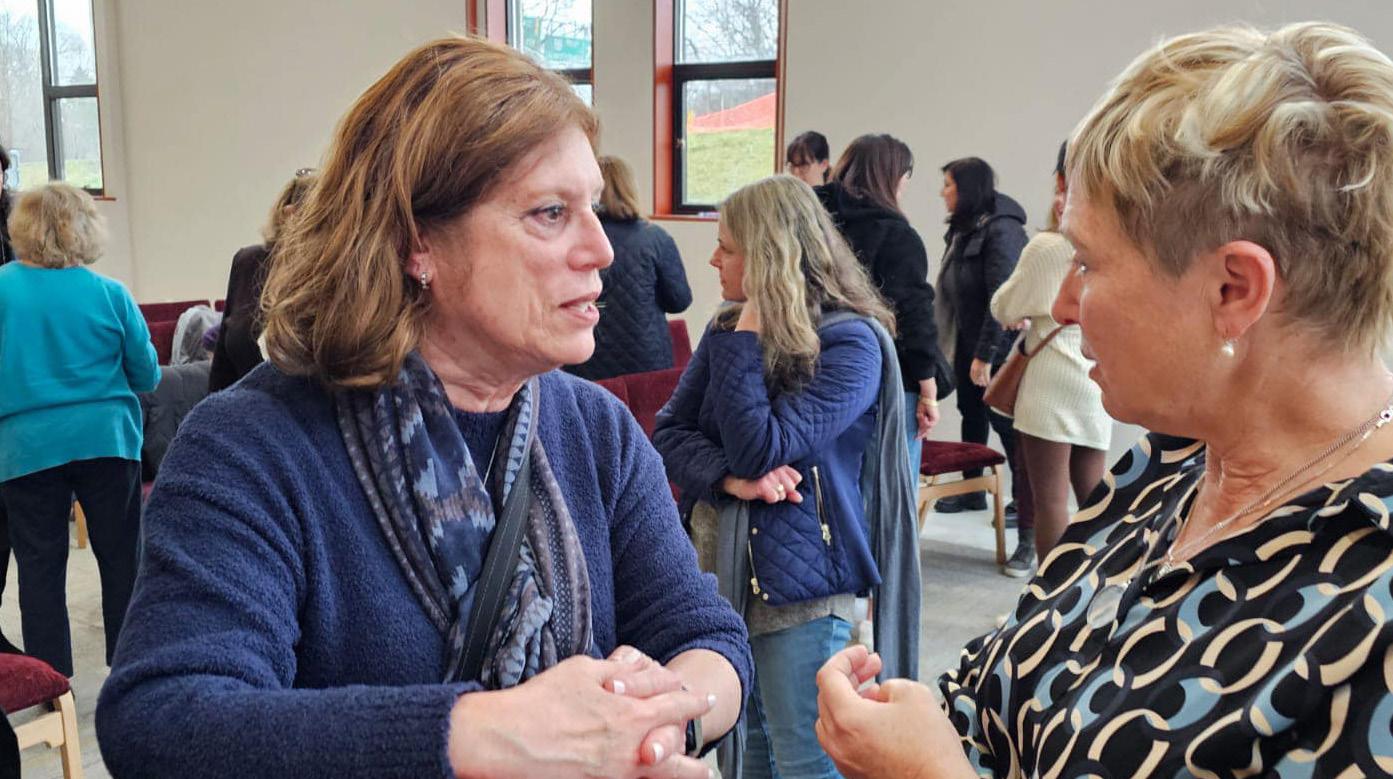

encountering observant Jews for the first time.
The day after her talk in Reading, she took to Facebook to describe her emotions.
“When I received an invitation to attend a series of lectures on Jewish communities in the United States, I tried to understand what the purpose of this trip would be. What value can I add here?
“The people who were hosting me here were Chabad; people who— before October 7—were among those who I lumped in with the ‘Orthodox,’ the people who take my money, who hate me and what I represent …”
“People who aren’t like me and never will be like me. I was afraid of them, and I was afraid that they would
force me to become like them.”
But then she started meeting the shluchim and shluchos, and her fears melted away.
She met Rabbi Hershy and Riki Hecht of Chabad of Orange and Woodbridge, CT, as well as the other shluchim of the Chabad Centers of Greater New Haven. She met Rabbi Shmuel and Devorah Gancz of Chabad of Suffern, NY. She met Rabbi Yaacov and Devora Halperin of Chabad-Lubavitch of Lehigh Valley. And she met the Lipskers in Reading.
“I felt an immediate connection to these people,” she wrote.
And Rabbi Lipsker’s words of introduction were not lost on her.
“Ve’ahavta l’reacha kamocha love your fellow as yourself. I practice this sentence every day. Finding connections with people and feeling that there is no judgment towards who I am or towards my son Tuval who is here with me,” she wrote.
“She felt the warmth of being with people different from her; of recognizing that we can be together despite our differences, because in essence we are all one,” Rabbi Lipsker said.
“She was impacted by it and so were we,” said Chana Lipsker.
“In the community, people were apprehensive to come to the talk, because they were scared there would be frightening, difficult things said. But I told them, ‘You need to come to support her.”
“And they came away inspired.” Iris ended her Facebook post— which was viewed, liked and shared many thousands of times—with the recognition that her son Yotam’s impact continues to resonate, months after his life ended.
“Thank you Yotam, for allowing us to connect and remove the stigmas and barriers that have kept us apart.”
Yes, the communities Iris visited were inspired by her tale of fortitude and unconditional love. But Iris came away a very different person as well, inspired by the unconditional love she experienced.
Iris Haim showed communities what it means to truly love your fellow Jew, no matter how deeply they have hurt you. And the communities she met showed her what it means to love your fellow Jew, no matter their background.
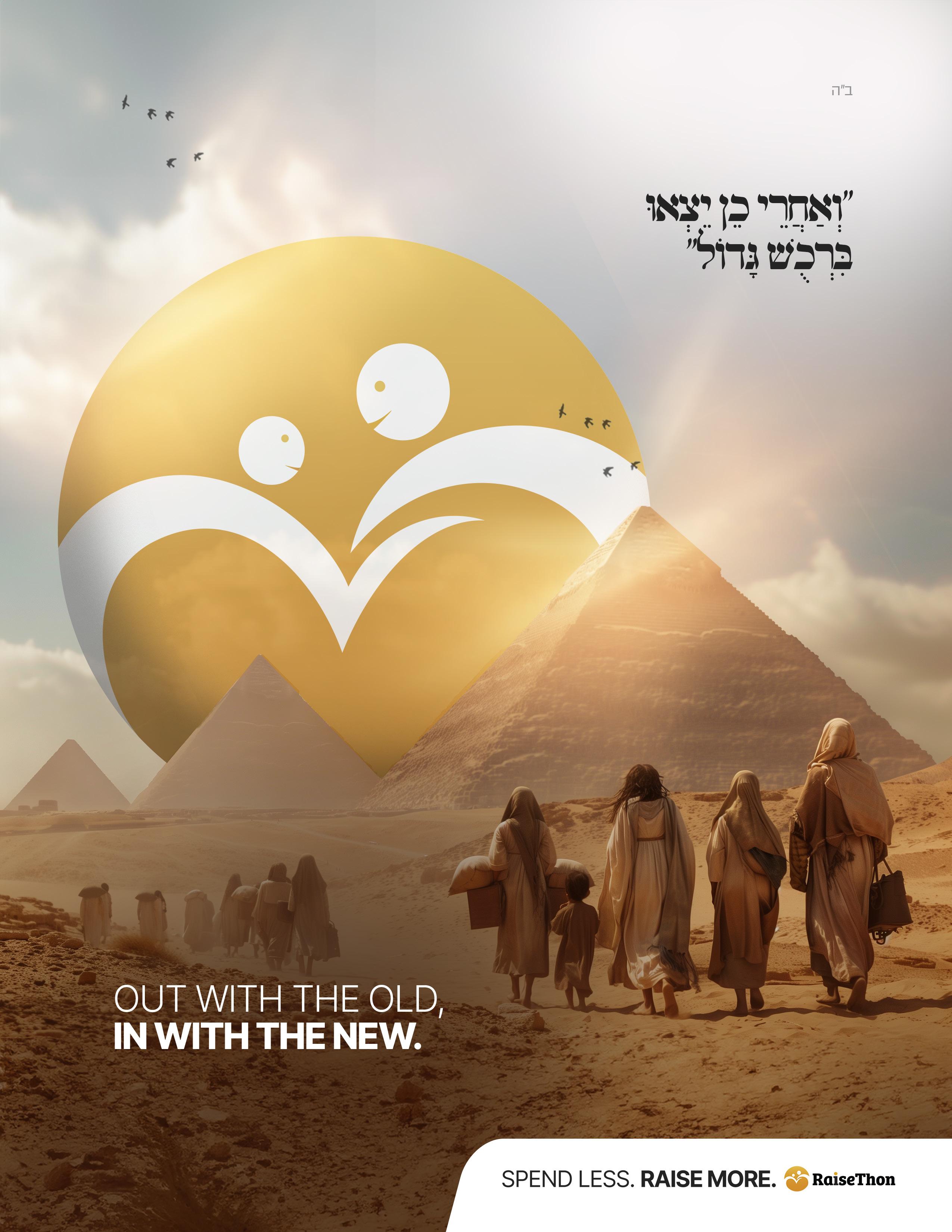
38 COLLIVE MAGAZINE NISSAN 5784
Rabbi Yosef Lipsker, Iris Haim, Tuval Haim, and Chana Lipsker at the Lipsker home in Reading, PA
Iris Haim speaks with community members at Chabad-Lubavitch of Lehigh Valley

Educating with Purpose
Veteran educators meet to discuss the Rebbe’s view on Chinuch
By Dovid Zaklikowski
40 COLLIVE MAGAZINE NISSAN 5784
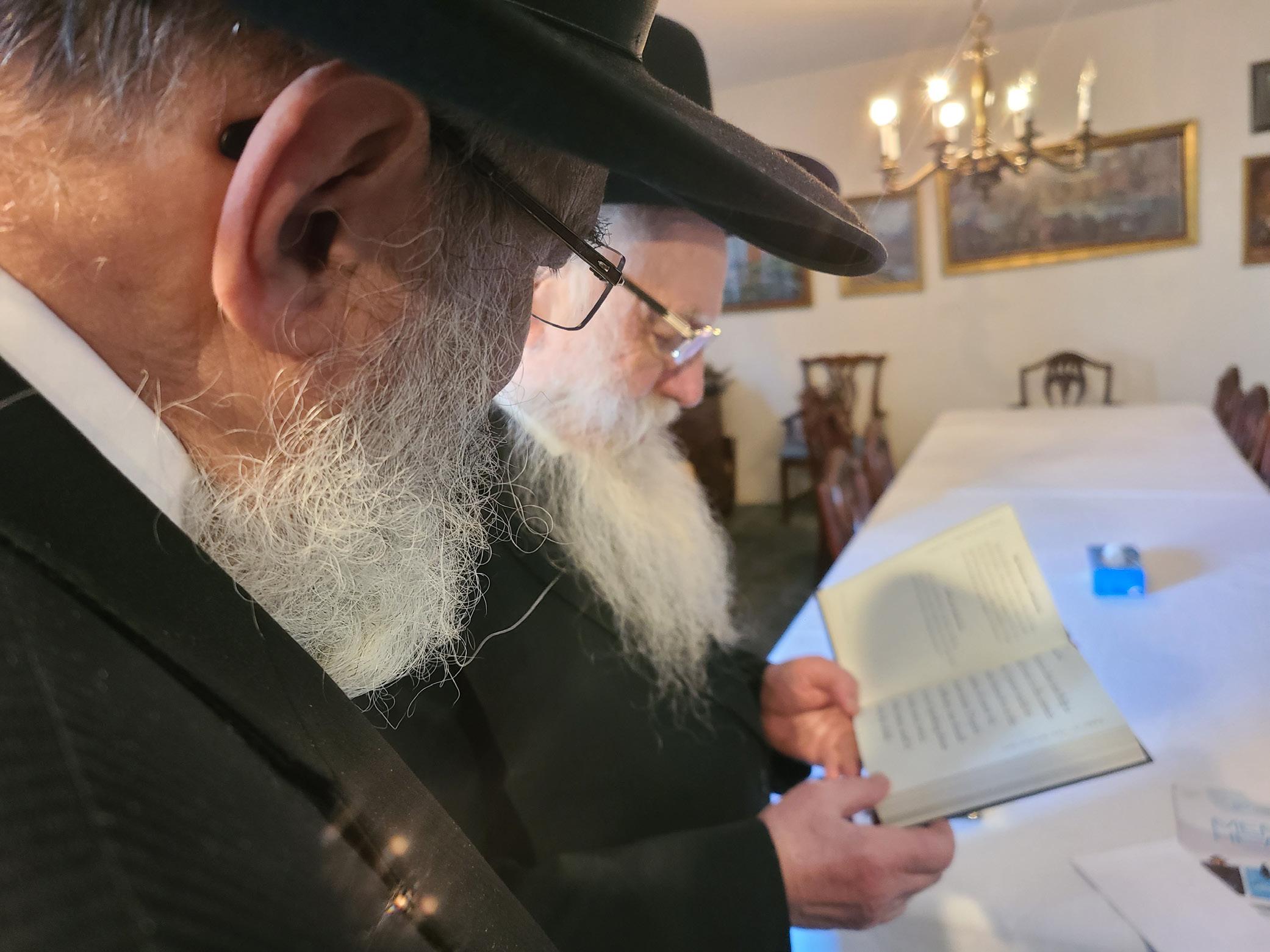
At a younger age, Rabbi Nochum Kaplan was looking for a position as a pulpit rabbi. He had two offers and sent them to the Rebbe. In response, the Rebbe asked why he did not want to be a principal. It was from left field, Rabbi Kaplan recalled.
The Rebbe then instructed that he apply for the principal position in a Norfolk school, which was being vacated by Rabbi Kaplan’s brotherin-law, Rabbi Matis Kantor, who was moving elsewhere. “Travel to Virginia,” the Rebbe said, “and see that they should give you the position.”
Rabbi Kaplan was not certain about his chances of being hired. His brother-in-law had a master’s degree and had previously served as assistant principal before being
promoted. Rabbi Kaplan went with the plan and was hired. He cannot explain it today, but the school decided that he would fit the bill. They told him, “If you do not have a degree, you can get advice from people at Old Dominion University.” He received degrees from Trinity College and Monmouth University and took the principal’s course of the Torah Umesorah education organization. Since then, he has served as principal of Jewish day schools in Virginia, Connecticut, Pennsylvania, New Jersey, and New York. He currently directs the education office of Merkos L’inyonei Chinuch at Chabad Headquarters.
When he was growing up, he said, “I had nothing in my life except my home at 19 Grant Square and

770 Eastern Parkway.” The sphere of influence on him was home, and the “arum,” the environment of 770. “There was no internet. I didn’t have any phones. I didn’t read newspapers. We didn’t have a television.”
It would have been far-fetched for him to land in a negative atmosphere, and his parents didn’t ask many questions about what he was doing. At the time, for any child with decent abilities and teachers who didn’t destroy the child— “which we had quite a few” who were able to do that—the outcome was almost predestined.
Today, the child is exposed to much more than he could ever have dreamed of growing up. He readily said that parents have it much more
COLLIVE MAGAZINE NISSAN 5784 41
Rabbi Kaplan's book is composed of ideas from over 300 sources in the Rebbe's teachings on the subject of chinuch to help guide parents and educators to raise healthy children.
difficult today and praised the new trend of invested parents. True, as every parent with teens knows, it takes a lot of mazel, but that comes with what the parent is giving them. “If you don’t work at it,” he said, “you’re going to get no place.” The child, he explained, for the most part, has a predisposition to follow what the parents are trying to teach and guide them.
There are anomalies of community members and teachers stepping up as guides and support systems, but one should not rely on that. He readily admits that “still there’s no guarantee. Ever.”
Guide for the perplexed
To guide parents and educators, Rabbi Kaplan compiled “The Education Imperative - Guidance To teachers and Educators From The teachings of The Lubavitcher Rebbe, published by Hasidic Archives.
While the Rebbe did not author a focused guide for educators and parents, the Rebbe would respond to questions parents and educators asked and discuss educational ideas in his talks.
In the book, Rabbi Kaplan presents the Rebbe’s approach to the topic that he has focused his entire life, divided into neat chapters, with intros honing the ideas he gathered from over three hundred sources. “The situations are a little different,” he said, “but the Rebbe’s ideas are as applicable today as they were then.”
One idea, he said, is a concept the Rebbe emphasized about the child’s room, and its environment. “The Rebbe called for homes to be replete with holy books,” he wrote, “The same, the Rebbe argued, is true of children’s rooms. Parents should help their children create an environment dedicated not just to welfare and comfort, but to spiritual
development as well.”
On another occasion, the Rebbe said that every room should have a pushka. The Rebbe said: “Each child should have a personal charity box and be given coins to donate every weekday. In addition, a charity box should be affixed to the wall permanently, so that the entire room should become a charitable room.”
Rabbi Kaplan said that what is the idea behind the directive, that a child’s room, as much as you want to give the child privacy, a parent should not say what you do in your room is your business. “You have to create an environment that is compatible with what you’re trying to teach him,” he said, “and give him the kinds of things he can do there that are compatible with what you hope he’ll be able to learn.”
Another idea the Rebbe emphasized over and over, he said, is to build a child and not destroy them. “When we look at a child’s actions positively,” the Rebbe once wrote, “and express it with words, this automatically has an effect on them, and their actions will improve accordingly.”
To bring this idea home, he recalled how a Yeshivah University student once went to the Rebbe for kos shel brachah. In the few fleeting seconds he had, he told the Rebbe that he wanted to be a teacher. “Build self-confidence,” the Rebbe said, repeating again as he was walking away, “build self-confidence!”
Communicating authenticity
Recently, Rabbi Kaplan met up with Rabbi Dr. Aharon Hersh Fried to present the new book. They were both optimistic about the future of Jewish parenting according to Torah values, but each stressed that it needs to come with authenticity, pride, and personal investment.
Dr. Fried taught at Hunter College and John Jay College before joining Stern College for Women of Yeshiva University, where he is an Associate Professor of Psychology and Education. Teaching at a college where there were few Jews didn’t make sense to Dr. Fried at first. The students would come to him with questions, “Should they go out or not? Should they live a life of fun or more grounded?” It took a lot of energy from him, and he wondered if that should be invested instead in the Jewish community.
One time, he was at a farbrengen with the Rebbe, and the hour was getting late and he was tired. He started to leave 770, when he heard the Rebbe start a talk about influencing non-Jews. “If anyone has the possibility to influence nonJews,” he recalled the Rebbe saying, “They should make every effort to do so.”
“This one’s for me,” he recalled thinking, “I turned around and remained.”
It was, he said, the beginning of the Rebbe’s campaign to teach non-Jews about the Seven Noahide Laws. “He had that style of starting a schmooze,” Dr. Fried said, “pushing it, pushing the envelope further, then coming out with it full force.”
It was something that he admires of the Rebbe, Dr. Fried noted. You test the grounds and only if it works, do you create a campaign out of it. It also had tangible results as Dr. Fried continued to teach there, dispensing Torah advice to the students.
Know your source
In regards to Jewish students, Rabbi Kaplan added, “While most Jewish leaders took a defensive stance, the Rebbe sought to help Jews develop a fierce pride in their Judaism. Instead of fearing difference, young Jews, he
42 COLLIVE MAGAZINE NISSAN 5784
To Rabbi Fried, an important part of raising a healthy child is telling them about their roots, how their grandparents and greatgrandparents lived and what they stood for.

hoped, would embrace it as a unique identity. This became a hallmark of his activism that spanned decades of leadership.”
Rabbi Kaplan quoted a story told by the Rebbe: A chossid of the Alter Rebbe had difficulty committing a sin because of his pride. He would say to himself, “Is it fitting for me, one of the great Chasidim of such a great Rebbe, to give in to the evil inclination, which would jeopardize my standing among the Jewish people and among the Chasidic community in particular?!” The Rebbe wrote about this story, “This is the way to influence a child: by elevating them with pride, and not berating them or making them feel less worthy.”
To Dr. Fried, it is family roots. “Men darf vissen fun vee men kumt.
This is a very important thing, to know your family history, the good deeds of your ancestors, as we say every day in Shemone Esrei - Avraham, Yitzchak and Yaakov,” the same we need to know who our parents, grandparents and greatgrandparents are.
They both agree that there needs to be conversation with your children about them, and what your personal ethos are. “How does your child know what things he needs to emulate from you?” Rabbi Kaplan asked, “Where does he get the idea from?”
But, he said, how can we expect a child to emulate them when they don’t know the intention behind what you are doing? When speaking to your children, what you do is not boasting, he said, but if you are, they
will clearly be able to tell from your tone of voice. “A child knows there’s always a matter of choice,” he said, but they don’t know how to make them unless the parent “showed them how they make choices.”
Rabbi Kaplan tells of how his daughter’s Chabad House is a halfhour walk from their house. One hot summer Shabbos, on a visit, he suggested that they bring their tallis to shul before Shabbos. “When I walk to shul,” his son-in-law told him, “I pass a lot of Jews and they see the tallis and they say ‘good Shabbos’ to me.” Seeing him dress in Shabbos clothes, they recall that it is Shabbos, a holy day.
The grandfather asked the father if he ever explained this to his young son. He said he did not. On the way to shul, Rabbi Kaplan told his
COLLIVE MAGAZINE NISSAN 5784 43
grandson how hot it is to walk with a tallis.
“Why didn’t you drop it off in shul before Shabbos?” the grandson asked. He explained to him that many people walk by them and see that it is Shabbos. “That’s why my father did it all the time?” he asked, and the grandfather affirmed that it was. The child was amazed, “Oh, wow!”
Dr. Fried concured and said that this can only be the case when it comes when the parents are confident in their ideals. “There’s a lot of research,” he said, that “children sense the lack of confidence.”
He told of a story he had in Crown Heights, where someone came to him and asked about his children who wanted to go to mixed roller skating and ice skating. His mashpiah told him that it was not a good idea, “and the kids were up in arms.”
The problem was that, in essence, the father was unsure whether he should let or not. “It was the mashpiah. They felt that their father was not confident. The message to the kids is I don’t know what to do. That’s a terrible message.”
It is not okay to be this way with your kids, “You got to make up your mind. People who are confident in what they’re doing can tell their kids, we have our derech. This is our mehalech in our home.”
Never put down the other family, he said, instead relate to your children, that each family has different values. “They’re at a different level,” Dr. Fried said you should tell your child, “They come from a different place. G-d willing, they will grow and be stronger too. You come from a place where you have certain values.”
Turning to the book, Dr. Fried said
that over the past century there has been an awareness of the complexity of educating children, it has been the “overreliance on experts has too often been accompanied by parents and teachers fearing to trust their own judgments and instincts.”
This he explained undermines the effectiveness of the education they give to their children or students.
The Rebbe, he said, over five decades offered much guidance in education, orally or in writing to those who asked, as well as in talks on timely and practically relevant topics. It
was much more than expert advice, “It carried the spark of truth which once articulated, brought the parent or teacher to realize that of course this was the right approach, the one he might have thought of himself had he been more confident in the truth.”
After reading the book, he said, “I dare say that the Rebbe did not merely advise; the Rebbe taught. He enlightened and inspired, and thus he also made people more secure and confident in their work as parents, teachers, and mashpi’im.”




44 COLLIVE MAGAZINE NISSAN 5784 Grown in California, aged in Brooklyn, NY. BACK FOR PESACH 5784 Wishing the Crown Heights Community a Happy and Kosher Pesach! “...notes of blueberry, cherry, very airy and light, but it packs a nice punch. And super delicate.” THE REVIEWS ARE IN! ה״ב RydashWine.com (347) 770-5556





STOP: NEXT NURSING




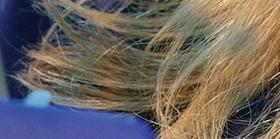

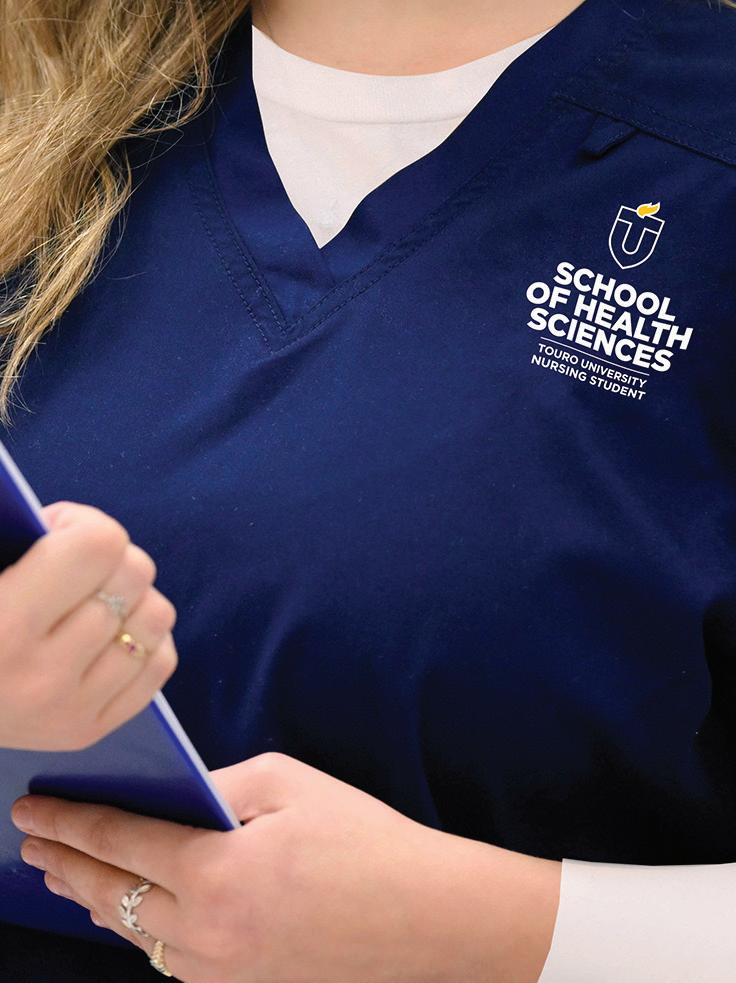
Follow Touro’s New Pathway and Earn Your Bachelor of Science in Nursing in three years!
Streamline your education by transferring up to 60 credits of liberal arts coursework from Lander College for Women or Lander College of Arts & Sciences to Touro’s nursing program. With this new fast track option, you’ll save time and money, receiving your BSN degree in three years while also experiencing a comprehensive nursing education in a supportive community.
Touro’s Nursing Program boasts an 88% pass rate on the NCLEX exam, surpassing both national and NYS averages!
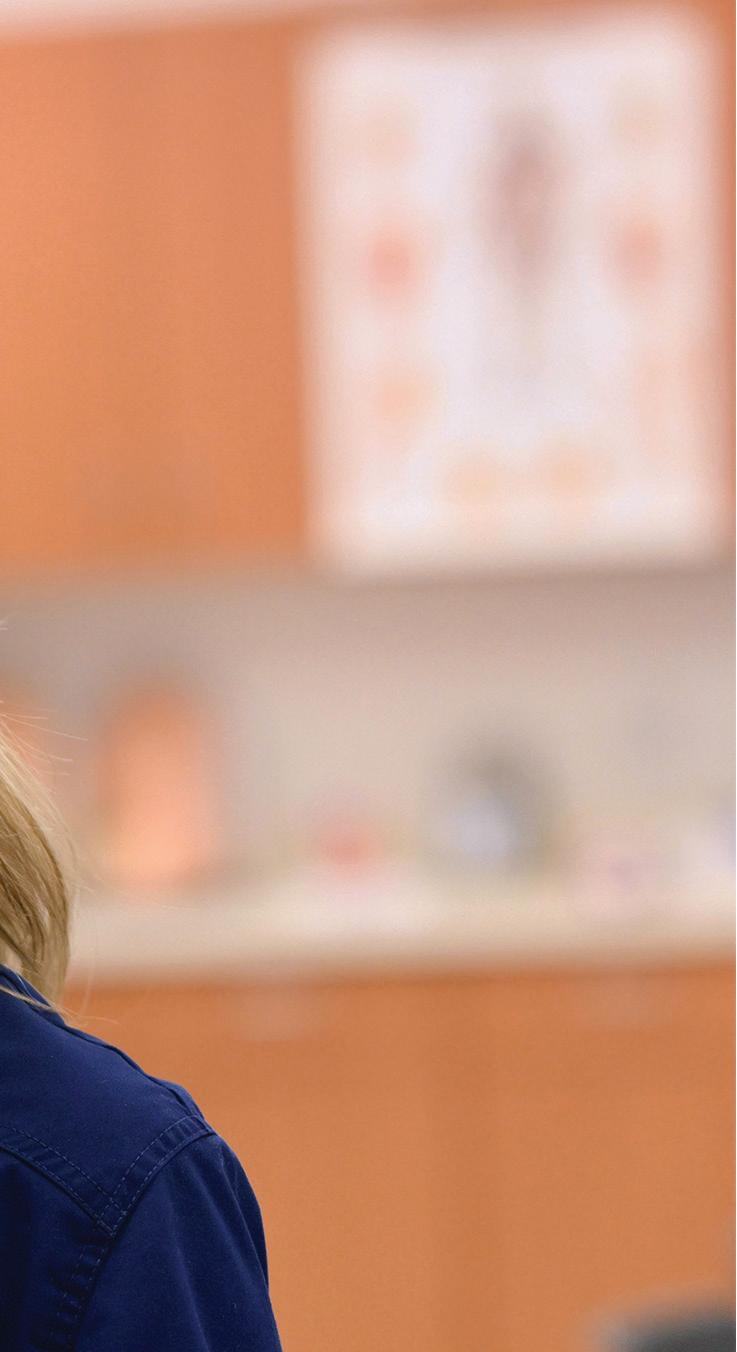


CONTACT:
Danielle Luczun
Administrative Director
SHS, Nursing Program
718.236.2661 x 36306
Danielle.luczun@touro.edu
Sherry Krupka
Senior Director of Academics and Innovation
Lander College for Women
212.287.3511
Sherry.krupka@touro.edu
Shirin Siony
Executive Assistant to Dr. Robert Goldschmidt
Office of the Dean of Students
Lander College of Arts & Sciences
5784
718.252.7800 x 59234
Shirin.siony@touro.edu
COLLIVE MAGAZINE
NISSAN
45
touro.edu/nursingpathway

“ I Have Fourteen Best Friends
The blessing of having a large family
By Tzemach Feller

Fourteen
Toby Lieder always knew she wanted to have a large family.
Growing up as one of ten siblings in the Goldstein family home on Empire Boulevard, Toby recalls Rabbi Kastel calling every Thursday, asking whether the Goldsteins could host some guests for Shabbos. Her mother, Mrs. Chana Priva Goldstein, OBM, always said yes, and the Shabbos table would be filled with the ten Goldstein children, their parents, and five or ten guests.
“I always had that dream to have lots of children and lots of guests,” Toby Lieder told COLlive Magazine. But it didn’t go as smoothly as she had envisioned.
Her oldest child, Levi, was born via cesarean section, and Mrs. Lieder’s doctors informed her that the next one would need to be delivered via c-section as well. She appealed to the doctors—can’t we try for a natural birth?—and they agreed, but only in theory. A year and a half later, when it came time for Chayale to be born, the doctors insisted that a c-section was necessary. “They didn’t give me a chance,” Lieder said.
Another year and a half later, Mrs. Lieder was pregnant with her third child, Shternie. She knew that if she had another c-section, this child might well be her last.
Then the Rebbe spoke.
On Sunday, 17 Sivan, 5740—June 1, 1980, the Rebbe spoke to a gathering of N’shei Ubnos Chabad.
“The greatest blessing G - d can give a person is children,” the Rebbe said. “Therefore, the blessing to have children: ‘Be fruitful and multiply, and replenish the earth and subdue it,’ is the first blessing given in the Torah. By having children ‘we replenish the earth and subdue
it,’ making the world a place of humanity and ethics.”
The Rebbe spoke about the crucial importance of having a large family. “Every child which is born into the family represents a greater blessing for his parents, grandparents, and siblings,” the Rebbe said.
Addressing the concerns parents have about providing for their child, the Rebbe promised that more children will not be a burden to the parents—Hashem provides for everyone.
“The greatest Mitzvah called for by this life-style is having children — as many as G - d wants — without trying to make His accounts for Him,” the Rebbe said. “This course of behavior brings about blessings in all matters — abundance of children, life, and wealth: children — healthy children, happy children, true Jewish children; life — a life free of complications.“ 1
A week earlier, on Shabbos Parshas Naso, the Rebbe had described the practical benefits a large family brings to the parents, as well as the nachas that they derive.
“When children grow up and move away to build their own families, the parents want to visit their children and grandchildren, and even great-grandchildren. But if they have only one or two children, they can only visit every half a year or so …The parents can’t sit in their children’s homes all the time. Between trips, they are forced to be alone, without having someone to open themselves up to. Whereas parents who have many children can visit one child, stay for a while—and then move on to the next child,” the Rebbe said, “Similarly, the children and grandchildren
1. Chabad.org/2543153
COLLIVE MAGAZINE NISSAN 5784 47

come to visit their parents and grandparents from time to time, and everyone sits together—a minyan at the table—and the grandfathers and grandmothers receive much nachas from their children and grandchildren.” 2
The Rebbe’s words were the talk of Crown Heights. “The whole day, everyone was buzzing about it,” Mrs. Lieder, who was living in Crown Heights at the time, described. She wanted the brachos and nachas
2. Derher Kislev 5780 p. 42-43.
of having a large family, but her doctors had all but told her it was impossible.
Two days later, it was Toby’s birthday. She sat down and wrote a letter to the Rebbe.
“Dear Rebbe,” she wrote, “Today the Rebbe spoke so intensely and emotionally about the importance of women having large families. I know how wonderful that can be, but Rebbe, my doctor told me I must have another cesarean and that is shattering all my dreams, because, I’m with you Rebbe on this, I want a
large family but cannot have one, due to the limitations of how many operations I can have!”
“Rebbe, as I write to you now, there are hot tears coming down my face because I cannot have my dream, and the Rebbe says we should have this dream! Rebbe, please bless me at this time, that I should give birth in a natural and healthy way.”
She sent in her letter. And of the hundreds, perhaps thousands of letters that had been sent to the Rebbe that day, Toby Lieder’s merited a response.
Early the next morning, she was told by one of the Rebbe’s secretaries that there was a maaneh—an answer from the Rebbe—waiting for her.
“Many people gave birth naturally after a cesarean; speak to your doctor about it. I will bless and pray for you at the Ohel.”
Mrs. Lieder spoke to her doctor. “If the Lubavitcher Rebbe said so, let’s go for it,” was her doctor’s response.
After less than two hours of labor, Shternie came into this world— naturally. And in the years to come, Shternie was joined by Devorah Leah, Esty, Dovid, Mendy, Rivky, Miriam, Shevy, Moishy, Bassy, Sheiny, and Chaim— fourteen children in all.
Toby’s dream came true.
She merited to have 14 children grace her Shabbos table. Today, 13 of them are married and they live around the world in places like Rechavia, Crown Heights, Los Angeles, Melbourne, Haifa, Miami, Sydney and San Francisco. The Lieders have been blessed with more than 40 grandchildren.
48 COLLIVE MAGAZINE NISSAN 5784
Toby Lieder and her parents, Rabbi Yosef (Uncle Yossi) and Chana Priva Goldstein
̒̒I’m with you Rebbe on this, I want a large family but cannot have one, due to the limitations of how many operations I can have!”

Toby Lieder is anything but naive about the challenges of raising a large family. But graced with the perspective of having done it, she says that there’s nothing like it; that nothing beats having such a large family.
“Everyone is going to have to work hard. Life is hard. Choose your hard,” she said.
“I chose to have 14. Mothers of three or four kids tell me how hard it is to raise their children— running to doctors and hospitals,” says Lieder, who is today a worldrenowned matchmaker, dating coach, educator and lecturer. “I tell them that once you have three or four, you may as well have as many as you can; it’s not harder— you may as well bring more neshamos into the world.”
“How can we say no to a diamond,” she says. “Hashem says, ‘Here have this diamond. It’s worth a billion dollars.’ It has a neshama it’s part of Hashem. I don’t understand how people say they’re uncomfortable with it.”
When the Lieders started their family, her husband, Rabbi
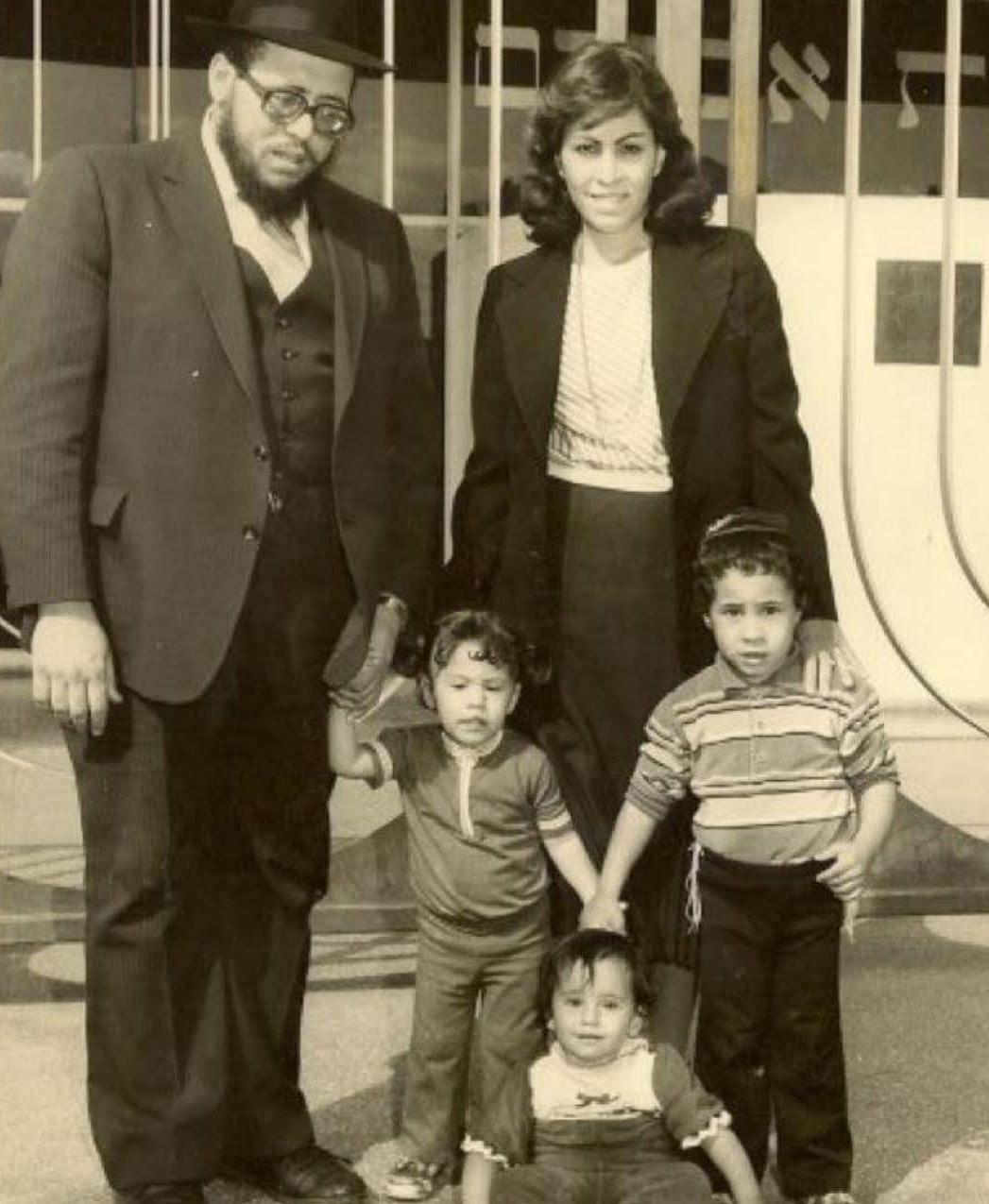
COLLIVE MAGAZINE NISSAN 5784 49
The day the Lieders arrived in Sydney, Australia, August 1981
Yaakov Lieder, was earning $220 a week—a pittance, even in those days. But Toby had faith. “I wanted this dream, but how would I provide for a large family—especially since it probably meant that I would be staying home and not working?”
Echoing the Rebbe’s words in that sicha in the spring of 5740, Lieder says she found the answer.
“My philosophy is: there’s a G-d, and He provides. It’s true—it’s not just a saying; it’s real,” she said. “Hashem
made it work. I told Hashem, ‘I want a big family,’ and Hashem came to the party and said, ‘I’ll provide.’ Hashem will come to you, too, and provide.”
Today, Toby Lieder is 67 years old and living in Sydney, Australia, where she and her husband direct The Jewish Family Centre, which provides support and direction for families and individuals in crisis. “I’m reaping the benefits now,” she says. “I always have someone to talk to. If I want to laugh, I call my
daughter in Haifa. If I’m in a more serious mood, I call my daughter in Sydney. If I have a problem that needs solving, I call my son in LA.”
“I have 14 best friends,” she says. “We are so connected and so close.”
“... Parents who have many children can visit one child, stay for a while— and then move on to the next child,” the Rebbe said in that sicha. And that’s just what the Lieders do. They find time to travel the world, visiting their fourteen best friends.
Toby’s Tips for Parents
1) Private Time: Find a time during the daily routine to put everything aside and give your child your undivided attention—it will yield rich results in fostering strong, open communication. For us, that was bedtime with the kids; we’d put the phones away and give our children the chance to share with us whatever was on their minds.
2) Family meetings: Set a time about once a month when each child is assigned a household responsibility of their choice. Doing this ensures everyone is on the same page and feels like they’re part of a team, helping to keep the home running.
3) Date night: Spending quality time together is crucial so here’s my recommendations for how to make your date night something you’ll both look forward to. a) Do them often, once a week or at least once a month. b) Take turns planning so you do what you both enjoy. c) Put the phones away and focus on each other. d) Keep the conversation light and upbeat; save the planning and budgeting for the ‘business meetings’.
4) Business Meetings: Difficult conversations or frustrations can get heated and personal when they are discussed in the moment. To remedy that, schedule a time in your week when you know you’ll be able to voice your opinions and suggest the necessary changes. When an issue comes up, write it down and save it for the meeting. You’ll be surprised by how many things fall off your list by the time your weekly meeting arrives!
5) Listen with both ears: Make sure to really listen to what your spouse or child is telling you and acknowledge what they are feeling. Once a person feels that they’ve been heard and understood, they are more open to finding a solution to the problem.


50 COLLIVE MAGAZINE NISSAN 5784
more tips visit www.tobydatingcoach.com
For













FOR CHANGE BE A FORCE





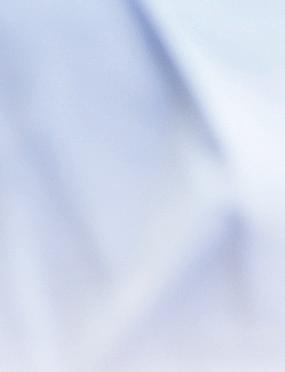
The global mental health crisis is impacting children, families, and communities. As a social worker, you can be a part of the solution. Touro’s MSW program, offered both online and in person, provides the tools you need to succeed in an environment that’s in sync with your values and hashkafa. Study with observant professors and participate in clinical experiences supervised by expert clinicians.





• Live and asynchronous class schedule
• Separate programs for men and women


• Scholarships and financial aid packages available








COLLIVE MAGAZINE NISSAN 5784 51
Your MSW at Touro University • Apply Now for Fall Semester ‘24
Earn
To learn more contact Miriam Turk, LCSW | 646.630.1471 Miriam gssw.touro.edu/anywhere
Exodus Tales

The Hagaddah tells us that "In each and every generation, a person is obliged to regard himself as if he had come out of Egypt." This experiential activity isn't theoretical.
Chassidus instructs us to view it as it relates to spiritual matters (our exile and redemption). And in a literal sense, many among us have undergone journeys of their own from dangerous areas and situations.
In honor of Pesach 5784, we present four personal stories of Exodus to illustrate the Hagaddah's ever-relevant words: "In every generation, they rise against us to destroy us; and the Holy One, blessed be He, saves us from their hand"!

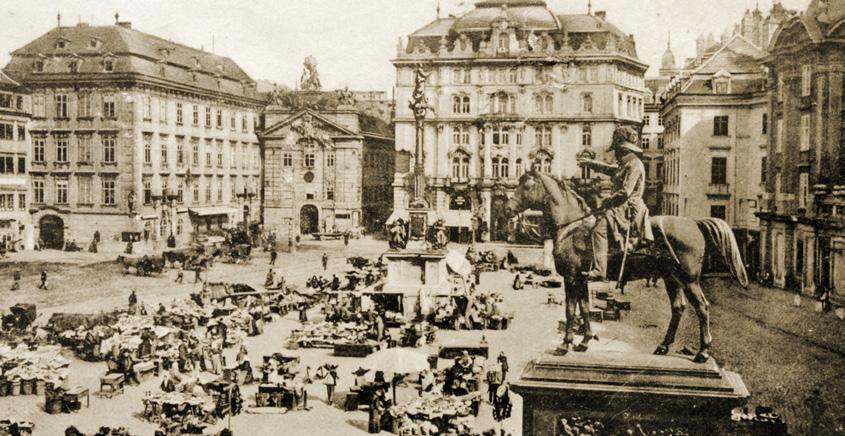



 POLAND, 1940
AUSTRIA, 1945
UKRAINE, 2022
IRAN, 1979
POLAND, 1940
AUSTRIA, 1945
UKRAINE, 2022
IRAN, 1979

RABBI CHAIM MEIR BUKIET
By Dovid Zaklikowski
As a biographer, I have long wanted to document the story of my maternal grandfather, Rabbi Chaim Meir Bukiet, Rosh Yeshiva of the Central Yeshiva Tomchei Tmimim Lubavitch in Brooklyn, New York. He would easily discuss any passage of Torah but refused to discuss his own Holocaust experiences. Lacking maturity and insight into his pain from a young age, I still pressed him to do so.
He only spoke to me about his life story a few times until his daughter Ruchie Stillman convinced him to sit down for an interview with
Steven Spielberg’s USC Shoah Foundation. It was a difficult experience for him, and most of his friends refused such interviews.
Transcribed in more than 100 pages, the story of how he left his parents behind in Poland is raw. Though decades had elapsed, my grandfather—the man who was never lost for words—could barely discuss the circumstances that forced him to abandon his ailing parents, Avraham and Ruchla Bukiet, in Chmielnik, Poland.
"And then my mother felt …" was all he could muster when attempting to
Exodus from Poland
describe his mother's pain. Minutes later, as the interviewer continued to press him about his delay in leaving German-occupied Poland, he said: "If I would have had permission from my mother, I would go [right away]; there's no question about that."
In the end, despite his mother's objections, he did go. The deep gash it left behind, specifically for his mother who had mostly raised him alone, was deep.
It took me years to locate the postcards written by his parents
54 COLLIVE MAGAZINE NISSAN 5784
during the Second World War. As I flipped through them, several names appeared over and over again. I can only imagine why his parents had to reiterate them. While I could not understand most of the writing, those names—Brzyski, Rodal, Goldstein—stood out.
"You Took Him Away from Us"
Mottel Brzyski and Rabbi Bukiet were both from Chmielnik. Though four years younger, Mottel had joined the Lubavitch yeshiva in Otwock, where Rabbi Bukiet took him under his wing. Their parents' similar fate brought them closer, and they considered each other brothers for life. Even after arriving in New York and raising families, they studied together daily.
Mottel Bryzski, who had fled to Lithuania, was one of the students who encouraged Rabbi Bukiet to leave. So did his mentor in Chmielnik, Rabbi Yosef Goldstein, and his friend from yeshiva, Yosef Rodal. In the eyes of his mother Ruchla, they were conspirators in severing her connection with her son.
In November 2019, as I told the story of my grandfather's life at the iconic Central Brooklyn Public Library, dozens of unfamiliar faces crowded the small lecture hall. At the end of the lecture, many of them approached me at the dais. They told me that they were children and grandchildren of fellow "Shanghai" survivors. They added their details, anecdotes and appreciation.
But a conversation with Chaim Kohn, Mottel's grandson, surprised me most. I had asked his grandfather, Mottel Bryzski, to tell me his story many times. I will never forget the scene when I first made the inquiry; Mottel's wife stood on one side of the table, while he sat on
the sofa unable to make eye contact. He could not get the words out. Immediately, I understood that it was just too painful for him.
Back in the library, Chaim Kohn told me that shortly before Mottel's passing, his children compelled him to tell his story. By the end of the day, Chaim had sent me seven-plus hours of interviews.
In the recordings, Mottel spoke of his childhood friend, Rabbi Bukiet, and their experiences together. Three hours into the interview, he tells of the numerous postcards he sent to Rabbi Bukiet in Chmielnik, encouraging him to leave.
"I wrote that Grandfather is here, and he wants you to come," he said in Yiddish, referring to the sixth Lubavitcher Rebbe, Rabbi Yosef Yitzchak Schneersohn, who had encouraged and funded the students' escape from Poland. It would take a few more urgent postcards until Rabbi Bukiet would finally leave home. Mottel did not even know Rabbi Bukiet had fled until a scathing card arrived from Avraham and Ruchla Bukiet. The postcard had said that they had not heard from Rabbi Bukiet for months and feared the worse, recalled Mottel. They wrote: "What have you done to our son? You took him away from us."
"A Huge Emotional Charge"
Speaking of those moments, he summarized that they had a gevaldige taane, a scathing reproach on his involvement in their son leaving Poland. He said that this was just one of several cards he had received from the couple. Eight decades after they were written, when I finally had 13 postcards from Mottel's family, I needed help interpreting them.
They were all stamped in red with Nazi insignia, and the inscription Oberkommando der Wehrmacht–Dienststempel—the high command of the Wehrmacht Armed Forces of Germany postal stamp. I understood this indicated that the letters were written under duress and veiled in code, as Rabbi Bukiet said in his Spielberg interview.
The first cards that I had translated were written in German script but with Yiddish wording. They were from Mottel's father. They were heart-wrenching and spoke of their difficult circumstances—the starvation, lack of livelihood and his mother's death. It spoke of his longing for his son. "The One in Heaven should help that we will see each other soon with joy," one April 1941 postcard read. Another from June ended, "The One in Heaven should help us out of here, and we should all meet together soon."
It was more difficult finding someone to translate the postcards that were written in Polish. I turned to Tomasz Brzostek, a historian from Otwock, the city where both Chaim Meir and Mottel studied. He said that the language was old Polish and difficult to decipher, but he was glad to have made the effort. Tomasz wrote to me that "these words have a huge emotional charge. There is love and concern for the closest family in them. You can feel insecurity and fear in them."
While he was right that they were haunting, he did not understand the code words. The postcard, written just before Pesach, began with the worries and hopes of any parent: "My dear, kind son Chaim Meir. I am writing that we are [OK]. Thank G-d, the news from you is always good. We are waiting with no patience for any letter from you. Also write to
COLLIVE MAGAZINE NISSAN 5784 55
my father in Wiślica. Give him news about your health. … Regards to all of you and with wishes for a joyous holiday."
They then made an intentional reference to the friends who had encouraged him to leave. "Greetings to your friends, M. Brzyski and Rodal. Please reply quickly. Your dear parents, Abram and Ruchla Bukiet.”
Rabbi Bukiet was heartbroken when he received their letter. He connected the mention of his friends to their pain and disappointment that he'd left them behind. For weeks, he could not respond. Two months later, the Bukiets wrote to Mottel imploring about their son's well-being: "My beloved son Chaim Meir is with you. I [have not] received a letter from him, so I am writing. … We wish to rejoice with you. Greetings to my beloved son."
However, they were unaware that the students, who were supposed to continue to New York, had been banned on the premise that they may be spies. In the meantime, they continued sending postcards to New York. When Rabbi Bukiet, in 1946, arrived in New York, the cards were waiting for him.
In one of those postcards dated March 1941, his parents wrote: "Warm regards to him [Rabbi Yosef Yitzchak Schneersohn] and the whole family [the Lubavitch community]. Warm regards to all our dear brothers [your fellow students]." Again, they sent regards to those who had encouraged Chaim Meir to leave—Rodal and Brzyski. My grandfather, Rabbi Bukiet, wanted to blot out his war experience. Everything that came as a result of his survival—his marriage to the love of his life, his work as an educator, his Talmudic studies,
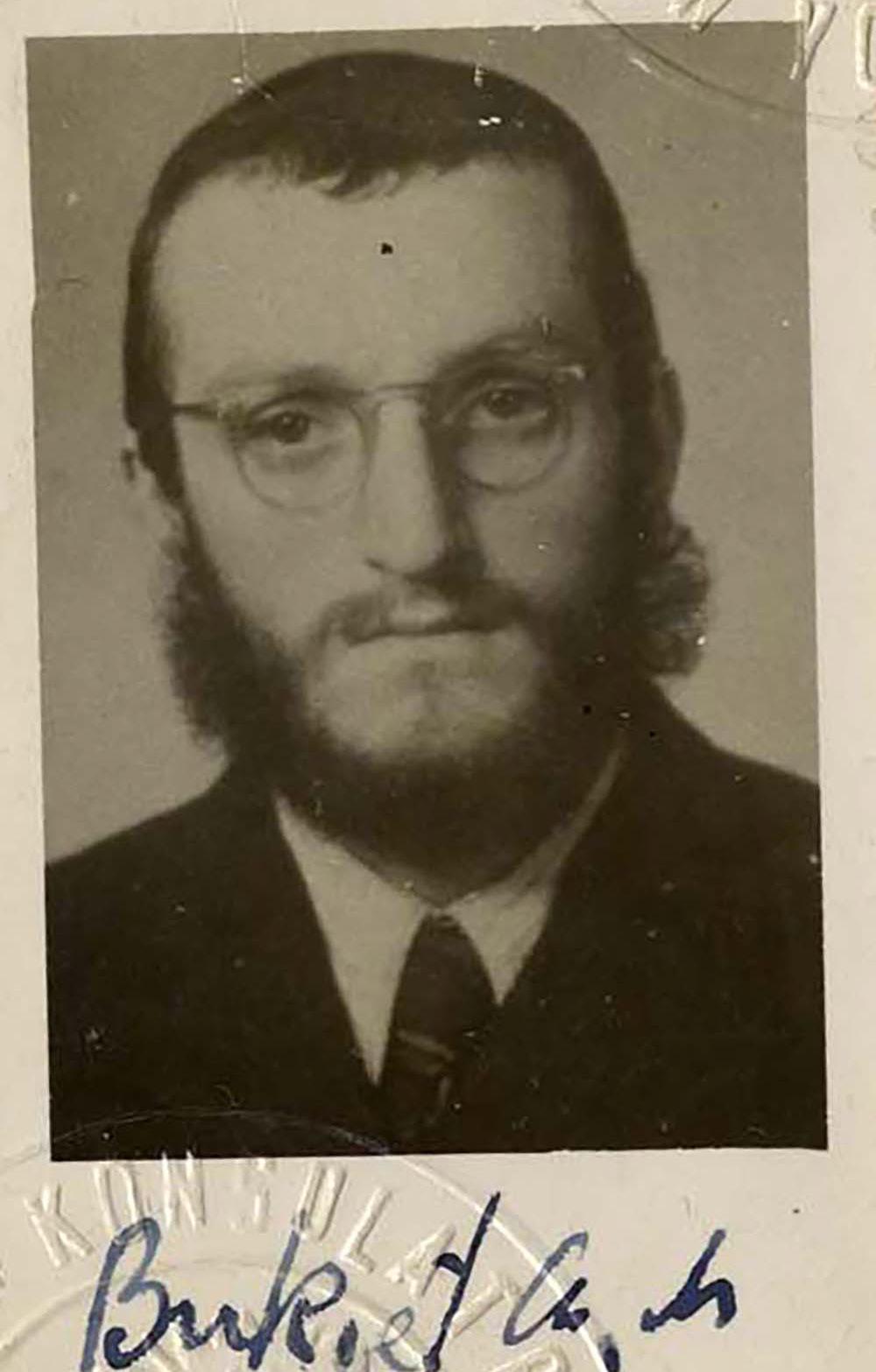
and his beloved children and grandchildren—was at the expense of his parents' pain. For decades, he lived with this wrenching reality.
As the story of Rabbi Bukiet continues to unfold on my computer screen, Pesach nears. Every document and interview I discover reminds me of how the Israelites in Egypt did not want to leave their comfort zone, despite the difficulties. Even after escaping Egypt, many wanted to turn back.
It was a difficult journey that culminated in the creation of the Jewish nation and entering the Land of Israel. Today, we have a bountiful appreciation for the gift the Jewish nation has brought to the world.
Rabbi Bukiet's exodus from hell was immensely difficult, too. It came with great pain, but there is also comfort and meaning in the thousands of students he taught and the large family he created who have become Jewish leaders across the globe.
56 COLLIVE MAGAZINE NISSAN 5784
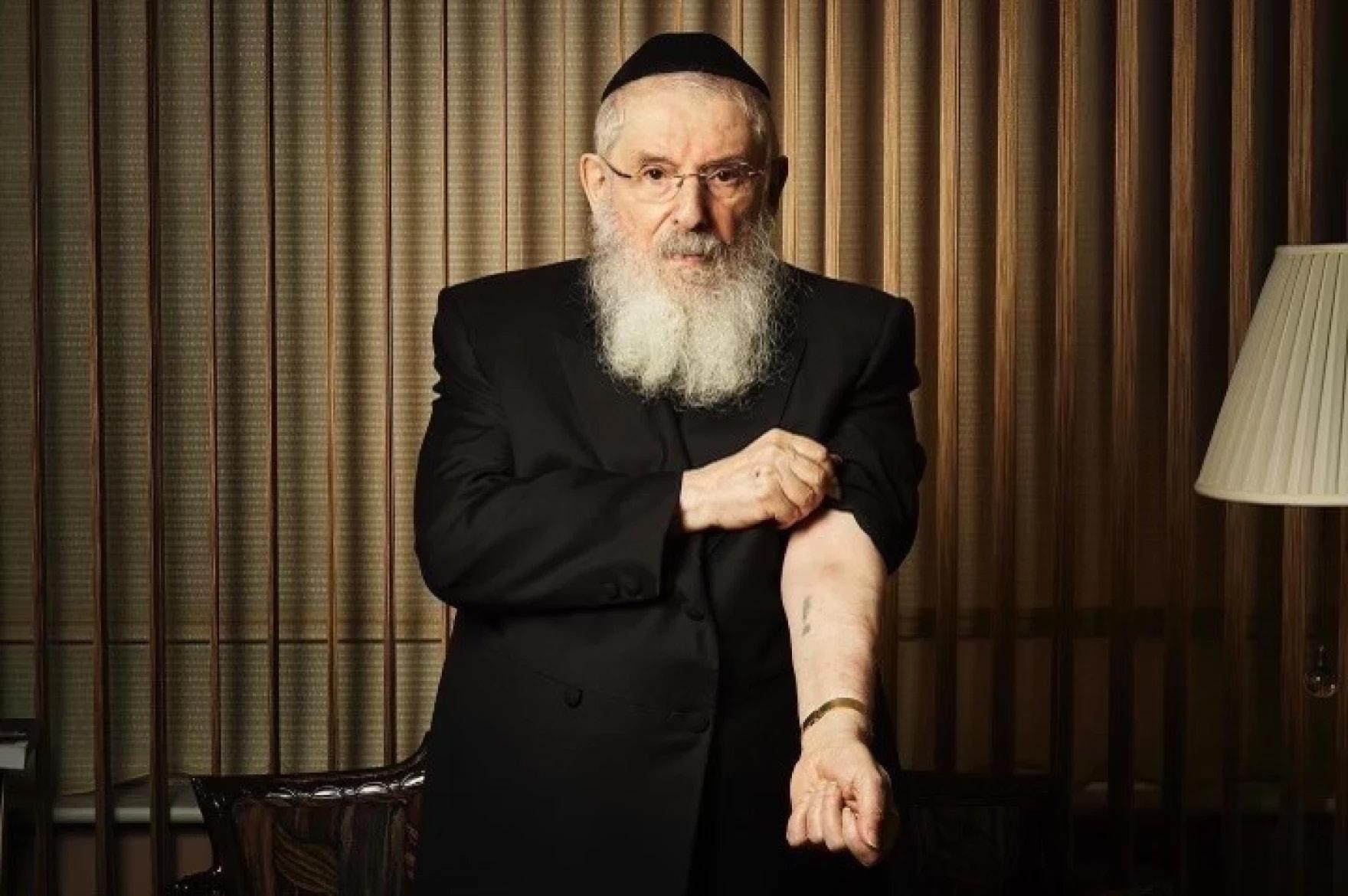
RABBI NISSAN MANGEL
as told to Danit Schusterman
I had a friend. His name was Yitzchak. He was 22 and one of the Jewish twins on whom Dr. Josef Mengele performed medical experiments. We met on the death march. Whenever I wanted to give up, he always kept me going. He saved my life numerous times.
At the time, we were in Gunskirchen (a Nazi subcamp of Mauthausen) in Austria. This was the sixth death camp that I’d been sent to, and I was only 10 years old at the time.
Auschwitz and Birkenau were Gan Eden compared to Gunzkirchen. It was in a forest and had iron polls covered with a canvas. People were constantly beaten and there was so much screaming and shouting. We slept side by side on the freezing, wet, muddy floor. There were no beds or cots.
Of the 1,200-1,300 people in the
barrack, maybe 50-60 were still alive by the time May arrived. I was completely emaciated. I was so hungry that I had no energy to even move. I asked Yitzchak to please go get me something to eat—anything, even some grass from the forest. I had eaten rotten grass before. Yitzchak agreed and left at 10 PM. I expected him to return within a half hour, but time passed, and he only returned at 1 AM. He brought with him a big piece of sugarcane. I opened it up, and I sucked out the sweet juice. This was techiyas hameisim. It revived, invigorated and recharged me.
I asked Yitzchak where he got it. He told me as follows: As he walked out into the forest to look for grass for me, he suddenly saw the SS guards removing their jackets and caps and starting to run. Everyone was
Exodus from Austria
confused until they realized that the SS were trying to escape because the Americans were coming. Once they realized the SS were escaping, they broke into the guard's kitchen, and he took the sugar cane.
Yitzchak then looked at me and said, “Nissan, let's go! Let's RUN!”
I couldn't believe it. We are free. We are finally free!
The juice from the sugarcane gave me strength, and I started to walk.
Yitzchak helped me. As we came out of the forest, we started to see other survivors coming out of the forest. It was still dark, between 3 and 4 AM. We walked further from the forest and we came to a highway. There were thousands of people marching on this highway.
After marching for a while, we suddenly saw a tank in the distance.
COLLIVE MAGAZINE NISSAN 5784 57
We were very afraid. We thought that maybe it was the Germans coming back to kill us. People started saying maybe we should go back to the camp. I looked at Yitzchak and firmly said, “We will NOT go back there.”
We kept walking for another 10 to 15 minutes, toward the tank. As we got closer, we saw that it was the first American tank occupying this German area. Everyone started jumping on the tank and begging for food.
The soldiers only had gum in the pockets of their uniforms. They started throwing chewing gum at us. I had never heard of or seen chewing gum before. I took a piece and didn't know not to swallow it. I suddenly started to choke. Baruch Hashem, I managed to pull it out from my throat.
Eventually, after walking for 6 miles, we reached a city. The American soldiers set up a refugee camp for us where we could sleep and eat. I told Yitzchak, “I just came from a camp, I will not go back into a camp.”
So where are we going to stay? He asked.
I told him that we would knock on the door of a German house and ask them if we could sleep over for the night. When we knocked on the door, they responded right away with a firm “no.”
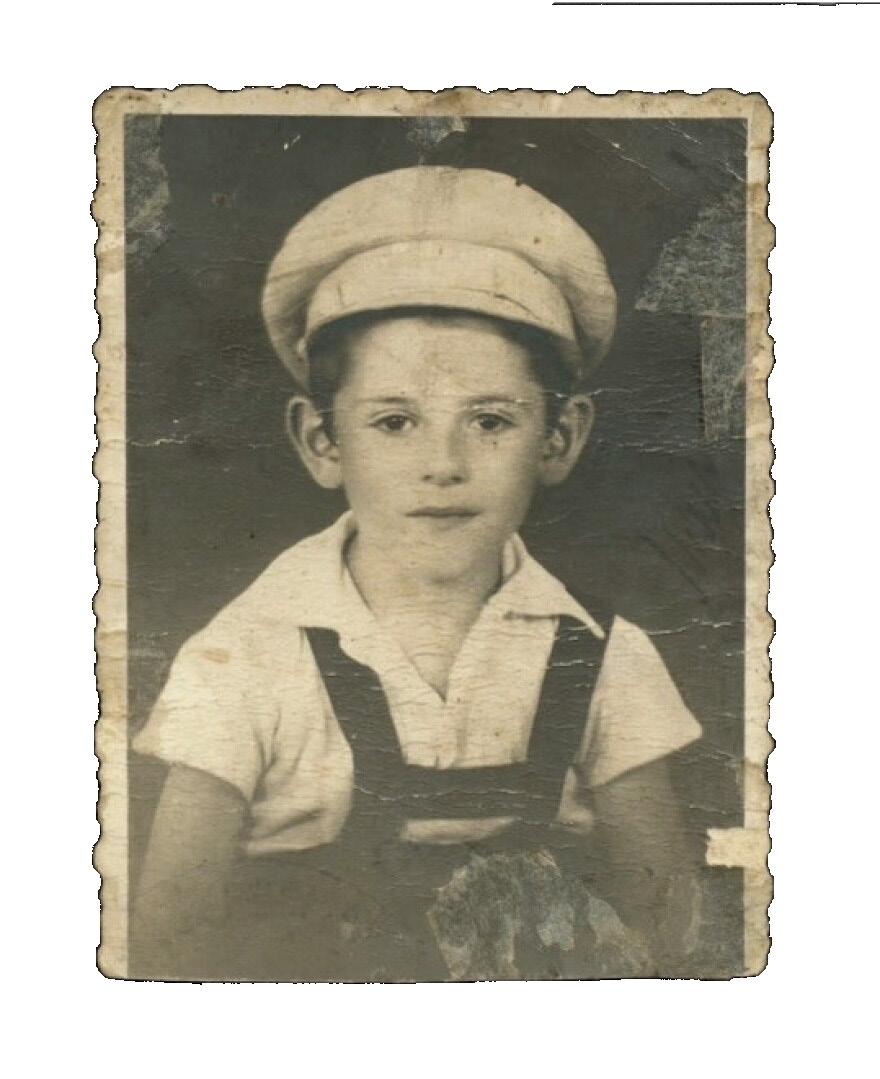
My mother tongue is German, so I started to scream at them in German: “If you don't let us sleep here, I will tell the American soldiers that you are Nazis!” They were so afraid that they let us in to sleep for the night.
Early the next morning, we left. We traveled to the city of Linz (also in Austria). Just then, Yitzchak came down with Typhus fever. I took him
to the hospital and took care of him. Two American soldiers, who were Jewish, would bring us food. They said I should come back with them to America, and that they'd put me through school and university, and that I could become someone and do something with my life.
I said that I would not go anywhere before I went home and find out if my family survived. Eventually, I took a train to my hometown.
All the bridges were destroyed, so it took a long time. Other young men were traveling as well and we all needed clean clothing. We
found a storage house where they made the uniforms for the SS. We all changed from our filthy, liceinfested clothing into the brand new uniforms.
So there we were, a group of men traveling together on the train, all wearing SS uniforms. I remember putting on a French army beret. At the time, Czechoslovakia was occupied by the Russians. While traveling, the Russian soldiers came onto the train to see if there were any Nazis. When they saw our group, they immediately took us off the train and brought us to their
58 COLLIVE MAGAZINE NISSAN 5784
headquarters in the forest. They locked us in a room and told us they would be sending us all to Siberia. They thought we were Nazis.
I started banging and kicking on the door until the General came. He asked me why I was banging and kicking. I spoke to him in Slavik. I said, 'Ya Yevre' - I am a Jew. He pushed me back into the room and locked the door.
I kept crying and screaming until he pulled me out and said, “Fine. You can go. Take the next train to Czechoslovakia.” I looked at him and said, “I will not budge without all of them; they are ALL Jews.” I cried and I screamed that they let us all out. And they did.
I eventually came to my hometown of Kosice, Czechoslovakia, on a Thursday night. I was afraid to go to my apartment where we lived. I thought to myself that if I didn't find anyone from my family, I would have a nervous breakdown or a heart attack. So I went to a hotel and stayed overnight.
The next morning, I got up and went to my street. I couldn't go up to the apartment. I just walked up and down the street to see if anyone went in or out. After 45 minutes, I saw the janitor of the house coming out. I asked him if anyone was at home. He nodded yes. "Your aunt (my mother’s sister) and uncle,” he said, and added, “And your sister.”
I then walked up to my home. The door was open and I walked into the kitchen and then into the dining room. My aunt saw me and called to her husband, “Aron, a gypsy!” A gypsy was a term for a thief. They didn't recognize me and thought I had broken into the apartment. “Anush (my aunt),” I said, “you call me gypsy?!” And I started to cry. I took off my beret. She saw my bald head. Then she looked at me and said “Nissan!” She hugged me and
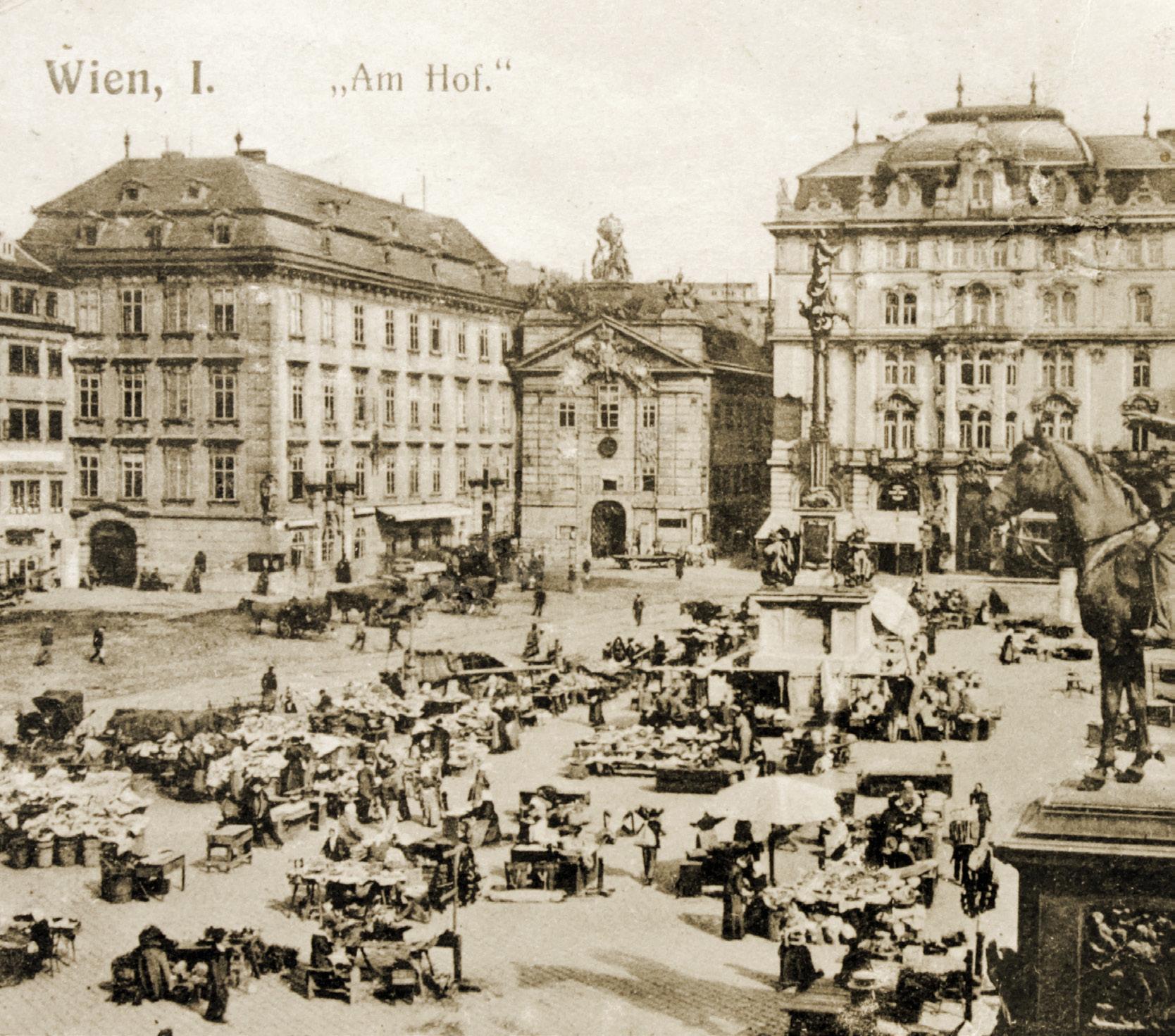
kissed me. I asked her where my sister Trudi was.
My aunt told me that while Trudi was in Auschwitz, she had to stand for hours in sub-freezing temperatures. As a result, her toes had frozen and she had to get 3 toes amputated. She was now at the hospital and was recuperating from the amputation.
I still didn't know anything about where my parents were. Two weeks later, we got a telegram from my mother in Prague. She was alive and she was coming home. The very next day, my mother arrived from Prague to Kosice.
Let me tell you, there are times that you cannot speak, when words aren't enough and so you cry. And then there are times when you can't even cry.
When I saw my mother, and my mother saw me, she just looked at me and I looked at her. She couldn't say a word. She couldn't even cry. It felt like 5 minutes. When I said to her, “Anyu (Mommy), how did you survive?!” she then started to cry. And I started to cry. And we held each other.
We found out that my father did not survive. He was 42 years old, tall and healthy. He could have survived, but he gave up his life to save someone else. It was now me, my mother, and my sister.
Rabbi Mangel, rabbi of Congregation Ksav Sofer in Crown Heights, recently celebrated his 90th birthday by visiting Auschwitz with nearly 100 family members, including his wife, children, grandchildren and greatgrandchildren.
COLLIVE MAGAZINE NISSAN 5784 59
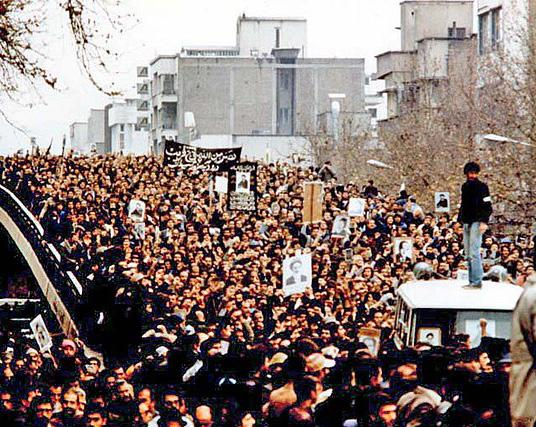
MRS. JANET AFRA
as told to Mendy Wineberg
Jews had lived in Persia for centuries, but the Islamic revolution in 1979 and Islamist seizure of power in Iran put them in grave danger. Under the rule of Ayatollah Ruhollah Khomeini, threats, arrests, and violence targeted the Jewish community. To save the children, Chabad ran Operation Exodus, approved by the Rebbe and orchestrated by Rabbi JJ Hecht A”H.
My parents, sensing the growing threat, were deeply scared for our safety. It wasn't long before plans were set into motion to send the Jewish teens, like my sister and myself, to America for safety until things settled down in Iran.
Shluchim from the Rebbe, Rabbi Hecht and Hertzel Illulian, came to our synagogue and announced they had a school ready for us in the U.S. and began distributing student applications.
The boys and girls were to go to separate schools; my sister, who was 11, and I, at 14, quickly became part of this exodus plan. Our parents sent our applications, and soon, we were on our way to Italy, where the Shluchim obtained visas for us to travel to the U.S. on student visas. We had no idea when we would see our parents again. We could only hope things would improve in Iran and we could return home.
Exodus from Iran
Arriving in America was a whirlwind. We were taken to Crown Heights where we were embraced by the Rebbe and the community. The families we met were incredibly kind, offering us everything we could need. My sister and I stayed with an older couple who lived above a pharmacy on Kingston Avenue. They were very good to us. We were given our own bedroom and, despite having to share a bed, we were content. I loved them dearly.
After Pesach, we were taken to see Rabbi Hecht. When Rebbetzin Chave Hecht learned that my sister and I were sharing a bed, she was determined to find us a better
60 COLLIVE MAGAZINE NISSAN 5784
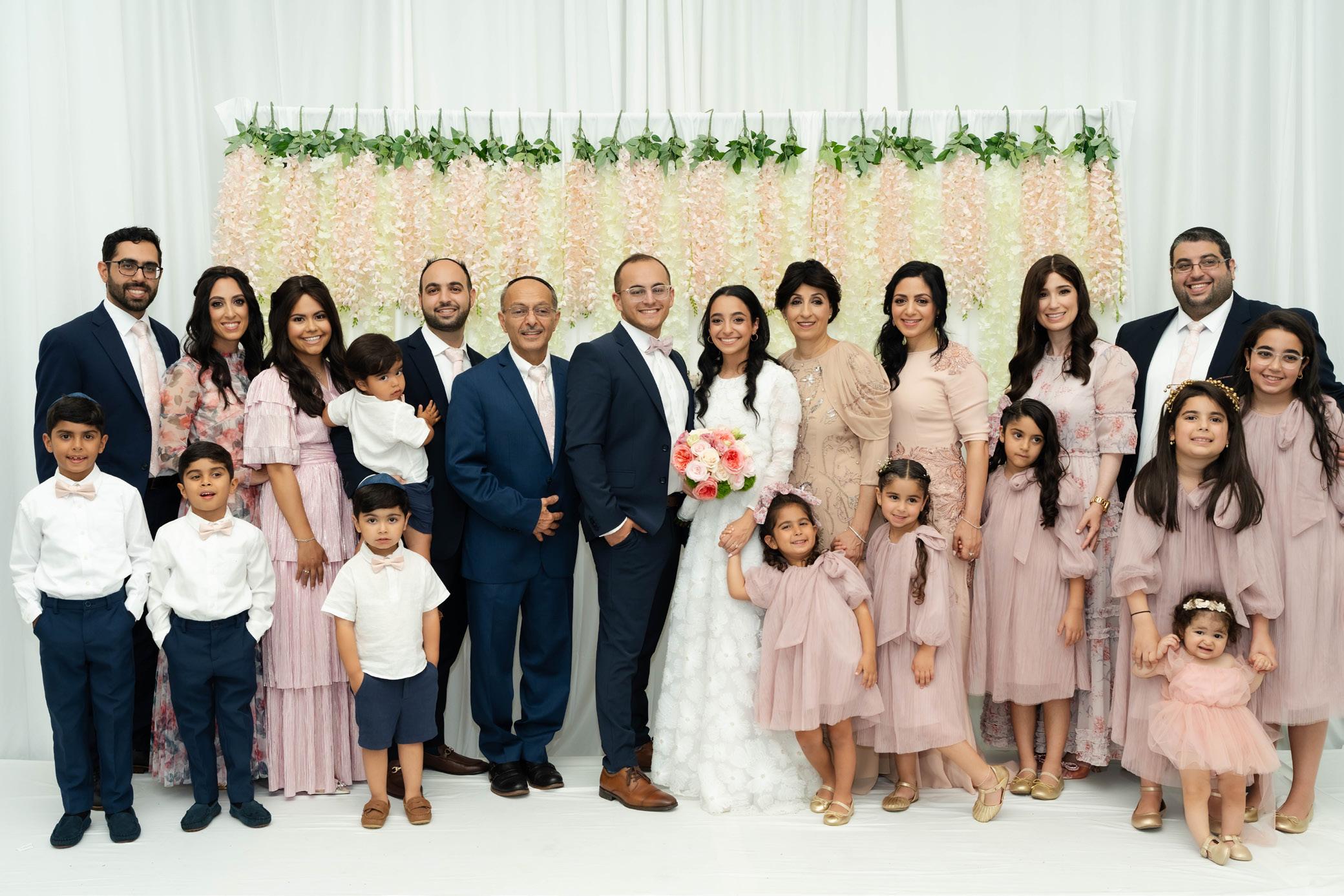
situation. Crown Heights was at full capacity, hosting the children from Iran, and so Rebbetzin Hecht offered to take us into her own home in East Flatbush until more space was found.
We ended up staying with them, even when space became available elsewhere. Their warmth and the sense of belonging I felt with them was amazing. Rabbi Hecht reassured us they would do everything to get our parents out of Iran as the situation was deteriorating.
The path to freedom for our parents was filled with danger and uncertainty. My father, who owned a gift shop, saw his livelihood crumble
as the Shah's regime was taken over and the American presence, once a source of business, vanished overnight. With the help of friends and a desperate but successful bid for visas, facilitated by a bribe at the U.S. embassy, my parents were able to join us in America, a journey of miracles and sheer determination.
We settled in, first in New York and then moved to Atlanta, Georgia on Thanksgiving, finding a community where we could grow and thrive. Despite the cultural shock and the hardships, including my father's tragic accident at work, we built a life of meaning. My parents, once strangers to the land, found their
footing, and we began to contribute to our new community.
I helped my father run a small shop that turned into the Judaica Corner, becoming a go-to spot for Jews in Atlanta. Looking back, the journey from Iran to America was filled with divine intervention and the kindness of countless individuals who helped us along the way.
Rabbis Hecht and Illulian, along with the Chabad community, helped us escape and preserve our faith. My family's journey shows the strength of faith and community. From a scared teen to witnessing miracles, my life honors those who led us to freedom and hope.
COLLIVE MAGAZINE NISSAN 5784 61

MRS. CHANI KAMINEZKI
as told to Danit Schusterman
When you hear that your country is at war, most people don't believe it. Or they don't want to believe it. When we started to hear that things in Ukraine were heating up, we didn't think we would actually have to leave. Then those employed by the Israeli government were being forced to leave and we realized things were getting serious.
Rabbi Moshe Kotlarsky of Merkos L’inyonei Chinuch told Shluchim in the cities that were being bombarded by the Russians that they absolutely must leave. It was getting so dangerous that there were some who had to escape on Shabbos. The streets were being bombed; there were tanks in the streets, and it was not a good situation for them.
My husband, Rabbi Shmuel Kaminezki, Head Shliach and Chief Rabbi of Dnipro, said that as
a Shliach, he could not leave. We agreed that I would leave with our younger children, although one of my sons stayed with my husband. My daughter and son-in-law had a one-month-old baby, so they chose to leave as well.
I wanted to bring my Rebbe dollars with me. My husband said, “I'm here. As long as I'm here, the dollars will stay with me.” We really thought the war would be over much sooner, and then we'd be back home together. I never dreamed we would have to stay away for so long.
We went to the train with many others from our community. My husband would not accompany us to the train station because he didn’t want people in the community to panic. They knew he was staying. My husband told me, “Don't be sad. The Rebbe is with you. Go to
Exodus from Ukraine
the train with the children. Stay positive.”
One of my daughters was very torn about whether she should stay with my husband or come with us. We gave her the choice, and she chose to come with us. She cried the entire train ride. We were all very sad to leave. But we were also very scared to stay.
On the train, people were frantic. It was so packed that there were people on the floor. In a cabin meant for 4 people, some had up to 16 people crammed inside. At every stop, there were people trying to break open the doors to get onto the train. Like any war, they were trying to escape. Those who couldn’t get on to the trains were crying on the platform. People didn't know where to go.
As hard as it was, there was just no time to fall apart. We had to do what
62 COLLIVE MAGAZINE NISSAN 5784
we had to do. I found it interesting how if the train suddenly stopped, people would turn to me to find out why it stopped and what was going on. I said, “maybe we should ask the conductor or even we can ask Hashem, but I certainly didn't know!”
There was a woman who was hiding in one of the cars on the train. She was not Jewish, but she said to me that there was a Jewish holiday coming up. She called it the 'upside down holiday' (Purim) and everything over here will also turn over and the war will stop. If only she had been right...
After a 20-hour ride, we arrived in Romania. We then took an 8-hour bus ride and then we finally flew to Israel. My great aunt, Freida Orenstein, who is in her early 90's, said that when she was little, she took a train to Lviv and escaped during the Second World War. Just as we did.
After a long journey, we arrived in America to stay with my married daughter. We had no idea how long we were going to stay. I came with two of my children. We had one suitcase with only winter clothes. That Purim, we got a Mishloach Manos basket from Bnos Menachem. It was huge and beautiful, but I just started crying. It was at that moment that it finally hit me that I was a refugee. I felt so hopeless.
We stayed in America for 5 months. Mrs. Leah Jacobson and Mrs. Gitty Rosenfeld, Principals at Bais Rivkah School in Crown Heights, welcomed my daughter as a student with open arms. They gave my daughter the most loving, warm, and kind teachers. My daughter was terrified to start school, so I sat in the class with her that first day. What a beautiful experience to see the teachers with the girls. I wish all parents could have a chance to see it.

The students saw how the teachers treated my daughter, and they followed that example. The girls accepted and embraced her. It was so impressive. I will never ever forget it. To this day, I have no words. When I told my daughter we would be staying in America for Pesach, she looked at me with tears in her eyes and said, “But who am I going to ask the four questions to?” This was a painful time for all of us.
After Pesach, back in Ukraine, things were getting very dangerous. I missed my husband and decided to go back to see him. It took me 36 hours to get there. The first day I arrived, a bomb fell in the area. There was a curfew and we were not allowed to travel at night. And with all of this, I was just so happy to be back home, together with my husband and our dear community.
I knew then and there that this is our
shlichus, and this is where the Rebbe wants us to be. My daughter and son-in-law have since returned, as well as my other daughter. There are still bombs and they get frightened by the noise.
When we were in America, people who wanted to be at shul on Shabbos would sleep over at the hotel of our Menorah Center as they were not allowed to travel at night. It started with 50 people and worked up to 150 people sleeping over every Shabbos. Because of this, people started keeping Shabbos. They felt safe being with the Rabbi.
This Pesach, after 3 years of not being home, 2 more of my children will be coming home to us with their families and we will be together again. There are much fewer people as many have left. It hasn't been easy, but it will get better. I know the Rebbe wants us to keep doing our Shlichus.
COLLIVE MAGAZINE NISSAN 5784 63
snapshots of a Seder � �
Many beautiful themes run through the holiday of Pesach. Vehigadeta levincha and the focus on family, Geulah, and the birth of our nation all feature prominently during this Yom Tov. To celebrate all this, we dress in our finest clothing and host with our best dishes. We present a collage of stunning photos showcasing a Lubavitch Seder with decorations and clothing sponsored by various Jewish brands. Alongside the pictures are answers to some relevant Pesach-related questions, compiled from asktherav.com and the Young Yeshiva (Melbourne) Pesach Guide authored by Rabbi Shmuel Lesches.
Mussia Alpern - Creative Director
Participating Brands:
• Esther.vh - Photographer
• Bunch Films - Filmmaker
• Elegance Table Ware - Tablecloth and cloth napkins
• Primavera Table Décor - Napkin rings
• Elite Sterling - Silver products (Seder plate, Eliyahu
Hanavi’s cup, and Wine Jar)
• Prestige Embroidery - Matzah cover
• Royal Judaica - Leather Haggadas and Tzitzis
• Events Delivered - Flower arrangements
• Tenebaum Lubavitch Matzah - Matzah
• Royal Wine Corporation - Herzog wine bottle
• Chana Feller Hair - Hairstylist
• Makeup_raizy - Makeup
• Primo Kapota - Kapota
• Essel Eyewear - Eyeglasses
• Tzfasman Jewelry - Jewelery
• Tights and Tots - Little girl’s hair accessories and tights
• Aleeza Paris - Women and girl's clothing
• The Kids Shoppe - Little boy’s clothing
• Ikippah - Little boy's kippah
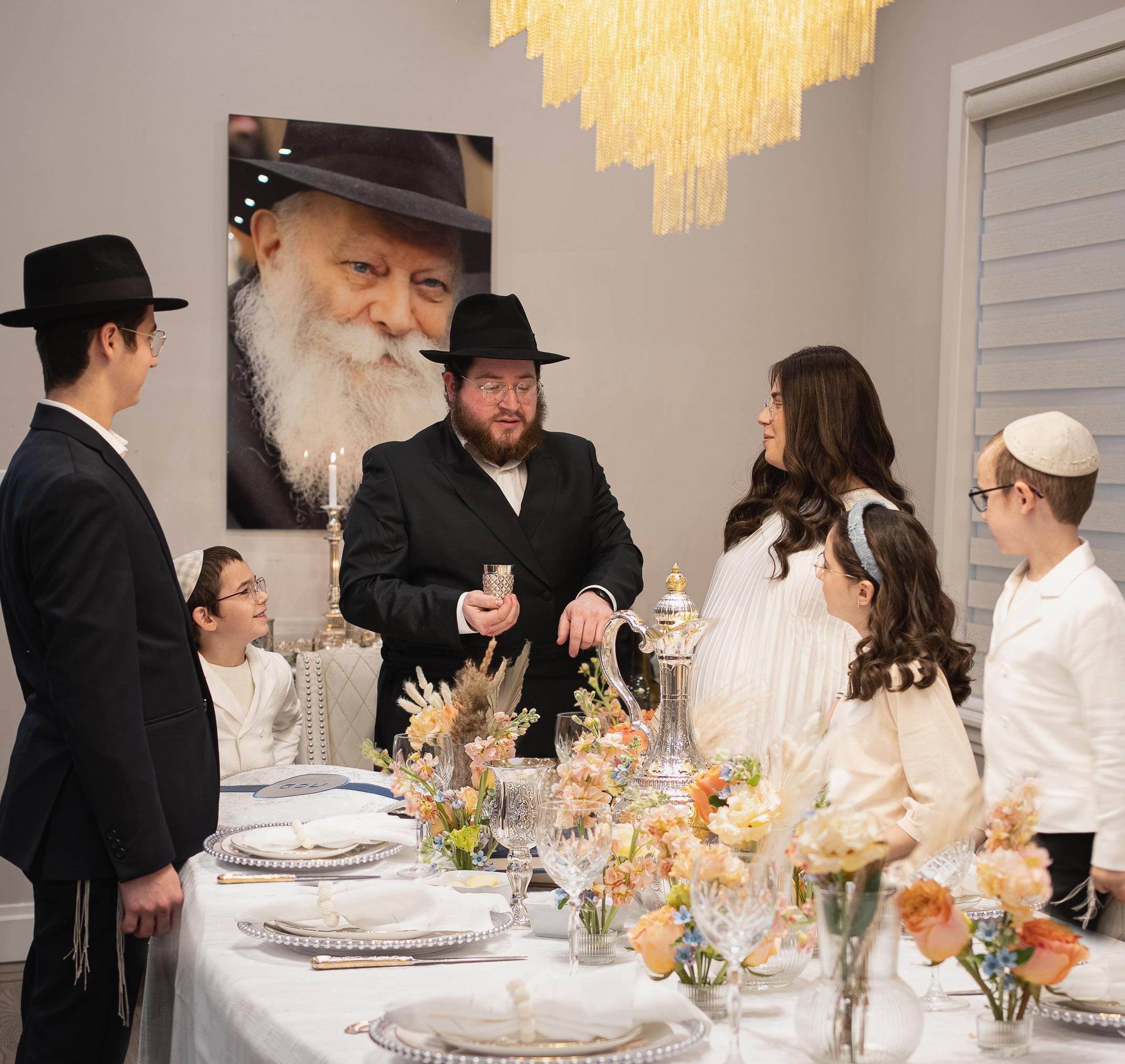
If one is away from home on the night of bedikas chametz, what should be done?
He must conduct bedikas chametz (including kol chamiro) the night before he leaves home, without a brocho. [This is in addition to searching at the place he is staying on the night of bedikas chametz.] Alternatively, he may appoint someone on his behalf to search his home on the night of bedikas chametz with a brocho; however, the homeowner must still recite kol chamiro.
COLLIVE MAGAZINE NISSAN 5784 65
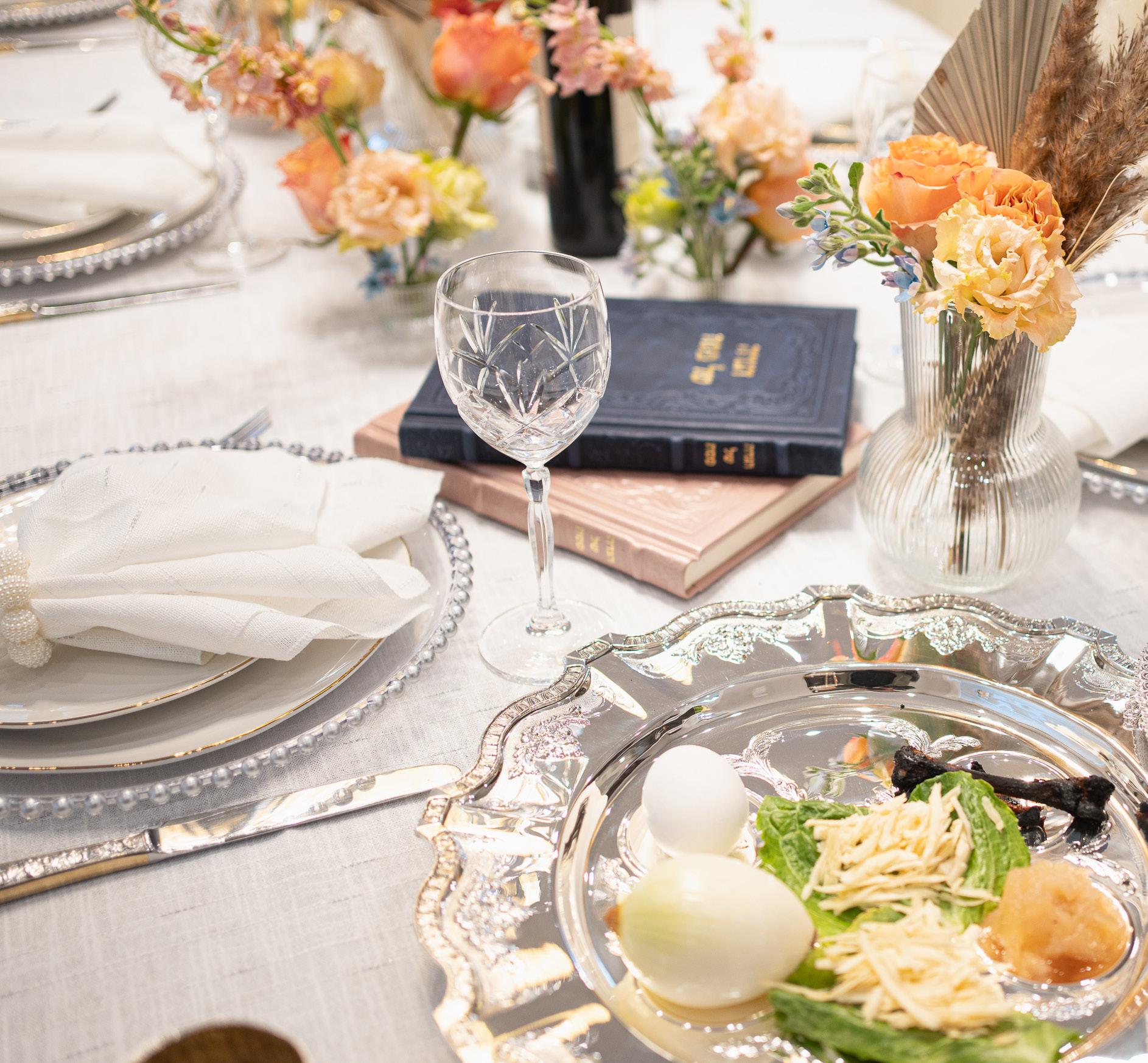
Are there situations when kitniyos may be consumed on Pesach?
Kitniyos may be used when necessary for the sick, infirm or babies (e.g. infant formulas and nutritional supplements). However, designated utensils should be used, and they should be kept separate from the rest of the Pesach utensils.
66 COLLIVE MAGAZINE NISSAN 5784

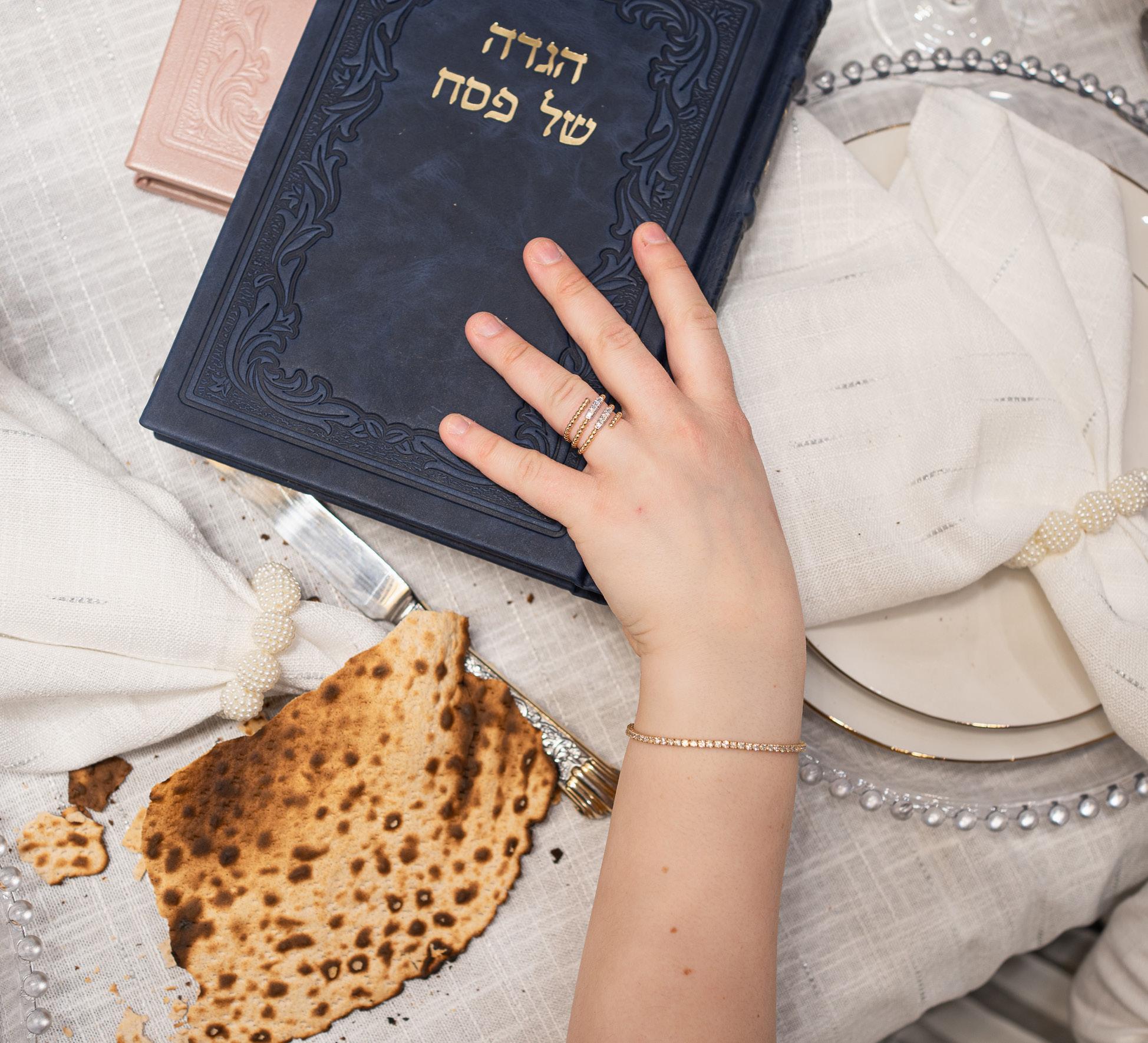
For a shliach leading a seder for people who are not frum, what are some things to keep in mind regarding the reading of the haggadah?
The haggadah need not be read by each person. One person may read it while the others listen in.
It is important that the people understand the words of the haggadah. Therefore, a haggadah with a translation should be provided to them.
Although it is proper to say the haggadah in the original Loshon Hakodesh, strictly speaking, besides the beracha and hallel, the haggadah does not need to be said in the original Hebrew and may be explained in your own words.
COLLIVE MAGAZINE NISSAN 5784 67
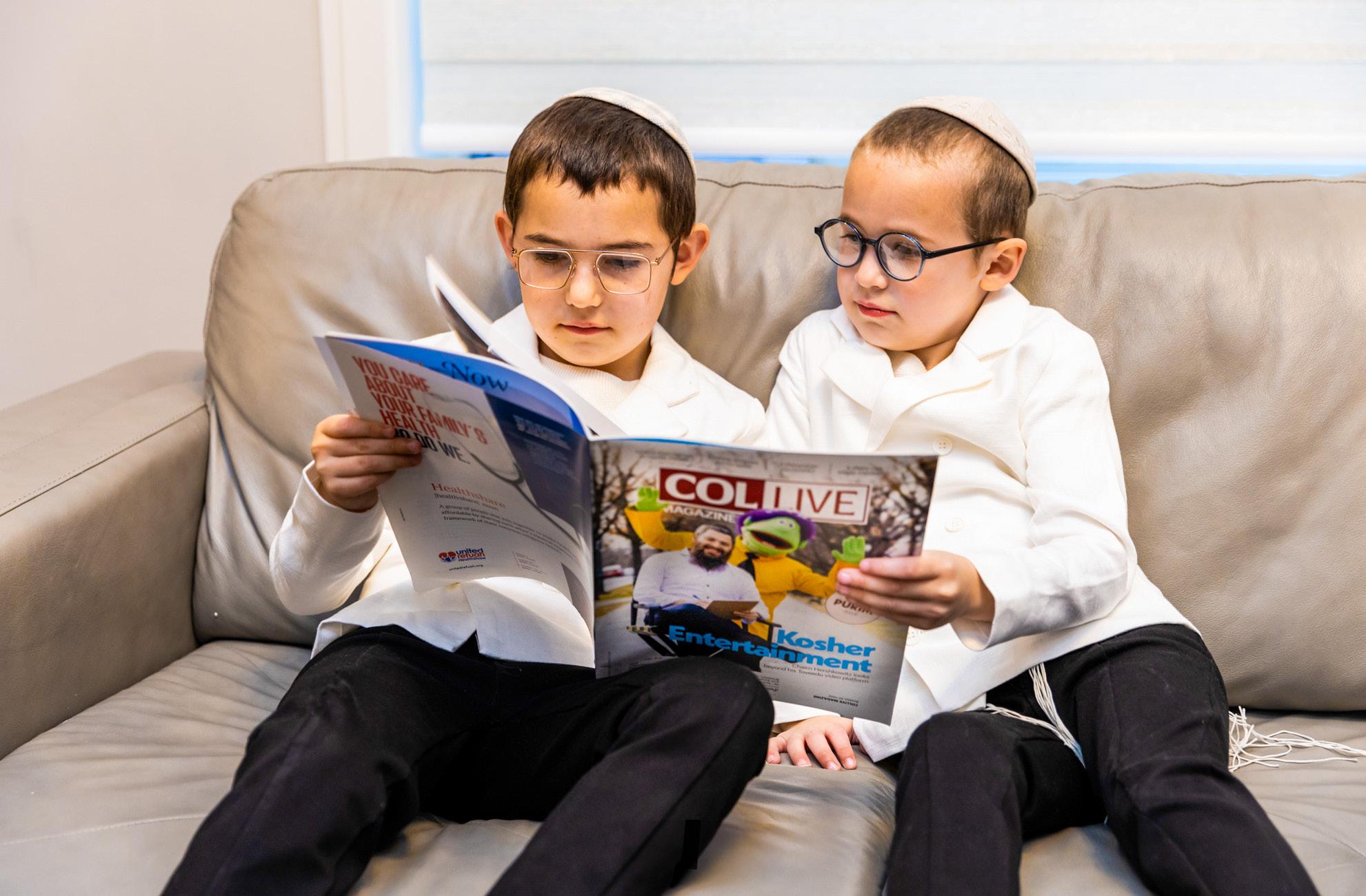
What should I do if I forgot to say v’sein brocho in shemona esrei?
Beginning on the first night of Chol Hamoied, we start reciting v’sein brocho. If one said v’sein tal umotor, but realized before saying Hashem’s name at the end of that brocho, he returns to the start of the brocho.
If one already concluded the brocho, there is a difference between the Northern and Southern Hemispheres.
In the Southern Hemisphere:
• If one already concluded the brocho, he does not go back, relying on the opinions that one may daven for rain during the local winter months.
In the Northern Hemisphere:
• If one already concluded the brocho, he must return to the beginning of the brocho of boreich aleinu, and continue from there to the end of shmoneh esrei.
If he already began reciting (the second) yih’yu l’ratzon, he must repeat the entire shmoneh esrei.

68 COLLIVE MAGAZINE NISSAN 5784

COLLIVE MAGAZINE NISSAN 5784 69
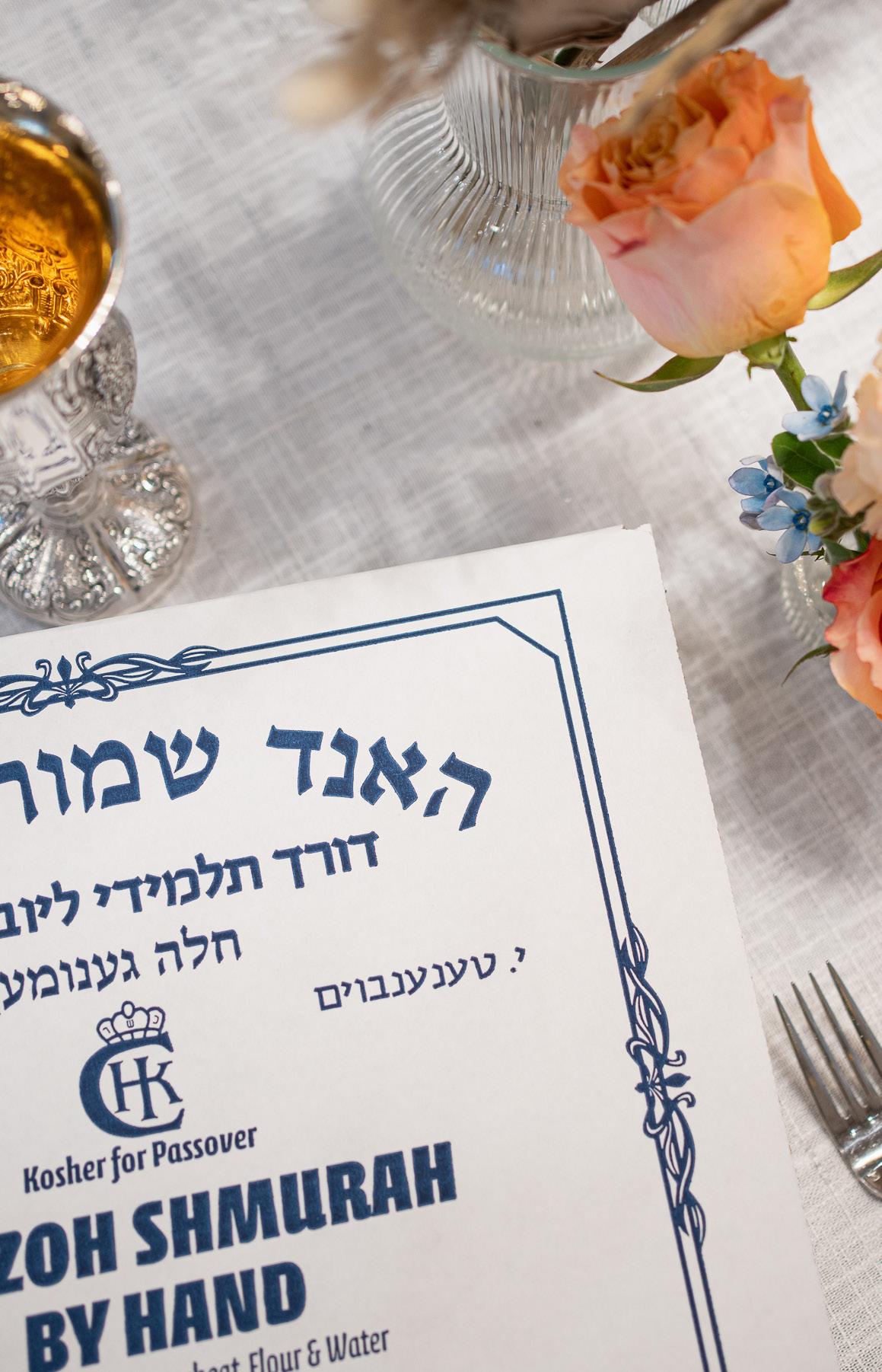

May one eat butter on matzah or is that classified as gebroks?
The Alter Rebbe writes that gebroks only applies to matzah with water. Thus, there is no issue of gebroks with matzah and butter.
However, many people will not eat matzah with butter either as an extra stringency, or because one can’t be sure that no water was mixed into it. Some are lenient to eat it while the butter is still congealed.
70 COLLIVE MAGAZINE NISSAN 5784

May I use spelt or oat matzahs at the seder instead of the regular ones made from wheat?
Spelt matzah may be used but the mitzvah is best fulfilled using wheat matzahs. The Ram”a records that this as the custom and one shouldn’t veer away from this custom unless necessary. Some are concerned that we don’t have sufficient information about the leavening process of spelt and therefore it should be avoided unless absolutely required for health reasons.
COLLIVE MAGAZINE NISSAN 5784 71

May children eat during the seder before the conclusion of Maggid if they are hungry?
Children who are hungry may snack. However, if they are old enough to understand the story of yetzias mitzrayim, they should not eat any matzah until after Maggid.
May children eat matzah smeared with cream cheese?
If it has no water, yes.
Some are lenient with gebrokts for children before the age of chinuch in general. Others are lenient to put the cream cheese on the matzah and eat it right away.
Do I need to drink the entire cup of wine by each of the four cups during the seder?
Each of the four cups should be entirely consumed without any pause. If this is not possible, one should keep any pause to an absolute minimum. At the very least, one should drink the majority of the cup, preferably in one swallow. [If even this is not possible, the barest minimum is rov revi’is (at least 44ml), preferably in one swallow.] This applies only to the first three cups but not the fourth. One must drink at least an entire revi’is at the fourth cup of wine, in order to recite the brocho acharona.
72 COLLIVE MAGAZINE NISSAN 5784

INSIGHTS ON THE HAGGADAH
Adapted by Dovid and Chaim Meir Zaklikowski
NUGGETS OF WISDOM FROM RABBI CHAIM MEIR BUKIET A”H TO INSPIRE YOUR SEDER TABLE
HAPPY WINE
The four cups of wine at the seder correspond to the four expressions of geulah that Hashem used to describe our exodus from Egypt (Shemos 6:6): “I will bring you out,” “I will deliver you,” “I will redeem you,” and “I will take you to me as a people.”
But why use wine? Why not four matzahs, or four different kinds of food?
Our Sages ask why the Jews merited to be redeemed in the first place. After all, they were practicing the same idolatry as their Egyptian masters. One explanation is that the Jews never became depressed— despite all the difficulties in their lives, they remained joyful and firm in their faith that Hashem would ultimately deliver them.
Wine brings joy. Since the Jews were
redeemed because of their joy, we commemorate that redemption in a way that brings us joy as well.
FOCUS ON FREEDOM
The fifteen steps of the seder begin with kadesh. On Shabbos and all other Yomim Tovim, we call it kiddush. Why, then, is this night different? It must be that the seder requires a deeper level of sanctification, so that not only the time should be holy, but that we, the participants, should be as well.
But in that case, shouldn’t we begin by washing our hands to purify ourselves? Why is that reserved for the second step (urchatz)?
The word seder means order, yet the name of the Yom Tov itself—Pesach—denotes a lack
of organization, a skipping from one level to another. It brings to mind the famous axiom of Rebbe Maharash, “Lechatchila ariber”: when confronted with an obstacle, simply leap over it.
Thus, even in the seder, there is some disorder. The Haggadah is teaching us to focus on the positive, to simply be holy. If we pause to purify ourselves first, we may never get to the second step, or we may become depressed by the amount of purification required. Instead, we focus on being holy, and the purification naturally follows.
A similar arrangement occurs later: We eat the matzah, the symbol of freedom, and only then do we eat the bitter herbs (marror), intended to remind us of our suffering in slavery. Shouldn’t the bitterness come first, and then the freedom?
74 COLLIVE MAGAZINE NISSAN 5784
כב
סחו
צקרצ

The same principle applies here. The Jewish attitude is that life’s challenges are simply a preparation for the good that will follow. If we begin by focusing on the good, then the challenges, when they arise, are less overwhelming. Thus, we begin with the matzah, the freedom, and that softens the marror ’s sting.
THE SALTED AND PURIFIED REBUKE
The seder teaches a lesson on the appropriate way to rebuke our fellows.
Towards the beginning of the
seder are some interesting, and seemingly bizarre, customs. We wash our hands, then have a piece of a vegetable, known as Karpas, dipped in salt-water. Then we take the middle of our three thin matzahs and break it in half, known as Yachatz. The smaller half of the matzah is returned to the seder plate, while the larger half is hidden until the end of the night.
One of the reasons for breaking the matzah is because matzah also commemorates the bread of the poor—thin cracker bread. As slaves in Egypt, the Jews would eat this broken and cheap bread. The broken matzah which Maggid is recited upon represents the broken spirit of
the Jewish people in Egypt.
Yet the order of the seder is peculiar. Why don’t we break the matzah earlier, prior to the washing of the hands and the dipping of Karpas?
Shouldn’t the entire seder be over this broken matzah, which holds so much meaning for the Pesach experience?
The breaking of the matzah is also a symbol for rebuking—the breaking of the spirit of a person who has done something wrong.
As individuals, we sometimes silently enjoy putting down others so that we could be elevated at their expense.
So the seder teaches us that when coming to rebuke another, we must first wash our hands. We need to purify ourselves spiritually, thus removing any personal agendas involved in the rebuke.
We emphasize this point by dipping any satisfaction we might’ve received, symbolized by the fresh vegetable, in saltwater, to remove and erode the egotistic layers which cause us to put down others. The salt also reveals the essence of good in us, the kinder source in our hearts.
Only then, when there is no other reason beside good intention, should one rebuke.
When rebuke is given in this way, coming from the heart, from the depth of good, it will surely enter the heart of the other, and bring about meaningful improvement.
FIRST A BREAK, THEN REDEMPTION
The purpose of the seder is to tell the story of yetzias mitzrayim, yet the way we begin seems strange. We break the middle matzah (Yachatz) and read a paragraph that, on the
COLLIVE MAGAZINE NISSAN 5784 75 צקרצ סחו
Rabbi Bukiet in zal of the United Lubavitcher Yeshivoth.

face of it, makes little sense: we declare that we were slaves in Egypt and ate poor man’s bread; we invite all those who are hungry to come and partake in our feast (though of course, this is a symbolic gesture); and finally, we acknowledge that we are still not free—next year, we pray, we will be redeemed.
Our sages say that kindness brings redemption. But doing good for another person requires us to recognize that we are not alone in the world, that other people have needs just as urgent as our own, and that, often, our happiness depends on them, just as theirs does on us.
These thoughts require humility. When a person is bashful, humble in their own eyes, only then is there room for kindness. This is why
we break the matzah in two. We recognize that we are incomplete on our own. Holding this humble, bashful bread, we acknowledge our dependence on others, and we invite them to join us at the meal. Then, we hope, Hashem will repay us with the ultimate kindness, the coming of Moshiach, may it come speedily in our days.
WHY ASK THE FOUR QUESTIONS ON PESACH?
Why are the four questions asked as part of the Pesach Seder ?
The common answer is that the questions are asked to involve the children. But why couldn’t this
custom to involve the kids be done in the Sukkah hut or during another holiday?
On Pesach, we celebrate our freedom from slavery. A slave is allowed no independent will, no opinion, and cannot question authority or voice his thoughts. With freedom, the Jewish nation was given the possibility to ask, to question.
The idea of Pesach in our personal lives is about becoming free from our internal constraints. Only by probing what Yiddishkeit is about, by asking and seeking more, can one become free from his or her current state, and reach a higher spiritual level.
Asking the four questions symbolizes that quest.
76 COLLIVE MAGAZINE NISSAN 5784
WHY THE EMPHASIS ON TELLING THE PESACH STORY?
We read in the Haggadah: "חבושמ הז ירה םירצמ תאיציב רפסל הברמה לכו" “One who tells the story exodus from Egypt at length is praiseworthy.”
Why is there such a strong emphasis placed on every person to tell the Pesach story? Couldn’t we simply sit around the table, relax, lean back in our chairs, and enjoy our current state of freedom?
We read in the passuk (Exodus 10:2), “And in order that you should tell into the ears of your children and grandchildren… and you will [all] know that I am your G-d.”
The verse does not say, “And the person will know that I am your G-d.” It is written in the inclusionary form, “And you will [all] know.”
When one relates the story, one not only relates it for the sake of the other person. By telling the story, it comes to life for both the one who is telling the story and the one who is listening.
The purpose of retelling the Pesach story is for the story to become a part of one’s daily life. Through telling the story, reviewing it with those at your table, and discussing it with them, you personally will live with yetzias mitzrayim in a deeper way throughout the year.
THE WICKED SON’S PERCEPTIVE QUESTION
When discussing the four sons, the Haggadah reads: “The rasha, what does he say? ‘What is this service

to you?!’ ...You, therefore, blunt his teeth...”
The four children are sitting around the Pesach table: the wise, the wicked, the simpleton and the one who does not know how to question. Though very different from each other, they are doing the same thing. They are eating, drinking and discussing Pesach topics: slavery, freedom and how their father kept the bitter herbs so strong.
At one point, three of the four raise their questions to their parents, to the elders sitting around the table piled with all the traditional Pesach foods.
“What is this all about?” one asks. Another asks about the difference between the various sorts of commandments. And then there is the wicked son.
His question: “What is this service to you guys?”
I am a wicked person, he’s declaring. I enjoy food, I live in order to indulge in the pleasures of the world. It makes perfect sense for me to be a part of this grand feast... but what does it have to do with you guys?
You guys, he explains, should be sitting on the floor meditating in silence. Get rid of the food, get rid of the wine, no need for the herbs! How is all this called serving Hashem? We are instructed to respond forcefully to this question, “Blunt his teeth!” For why would Hashem have created teeth if it was not for a good purpose?
Hashem created teeth so that they too should serve Him. The physical world and its pleasures cannot be divorced from their spiritual purpose. We were created in order to make a dwelling place for Hashem here, in our physical reality. We need to engage the world, not shun it.
COLLIVE MAGAZINE NISSAN 5784 77

HILLEL’S PESACH SANDWICH: A DOSE OF POSITIVITY
The Haggadah shares some history with us:
The great sage Hillel did not eat the marror separately. Nor did he eat the matzah alone. Hillel lived at the time when the Beis Hamikdash stood, when eating the korban pesach was a part of the Pesach obligations. Instead of eating the three foods separately (matzah, marror, meat from the korban pesach) he would make a sandwich combining the three, and eat it while reclining. To commemorate Hillel’s sandwich (“korech”), we do the same today, eating the Hillel sandwich (minus the meat) while reclining.
Symbolized in the sandwich is Hillel’s positive approach to all the hardships in his life.
The sandwich is composed of matzah and marror. Matzah represents the freedom we have been granted, as opposed to being slaves to Pharaoh in Egypt. Inside the two pieces of matzah we place the marror, symbolizing life’s hardships.
Hillel viewed the bitter parts of his life, particularly the hardships of poverty that Hashem bestowed upon him, positively. So, while his life appeared difficult, he was able to understand that it was Hashem’s will and ultimately for a good reason. Therefore he placed the bitterness (marror) inside the freedom (matzah) and ate it while reclining.
TWO NAMES SEEKING THE GOOD
Pesach and the Holiday of Matzahs are two of the names given to this holiday. Hashem refers to it as the
Holiday of Matzah and the Jewish nation calls it Pesach
The matzah represents the Jews listening to Hashem’s commandment to leave Egypt immediately. They were in such a rush that the dough of the bread did not have a chance to rise and instead baked as matzah while still being carried on their backs. The name Pesach represents Hashem jumping over the Jewish homes as he killed the Egyptian firstborns.
Hashem looks at the Jewish nation positively, recalling their rush to heed his command, and calls it the Holiday of Matzah. The Jews look at Hashem positively and recall how He spared their homes, calling the festival Pesach
Adapted by Dovid and Chaim Meir Zaklikowski from the written notes of commentary of their grandfather and great-grandfather, the venerated Rosh Yeshivah, Rabbi Chaim Meir Bukiet.
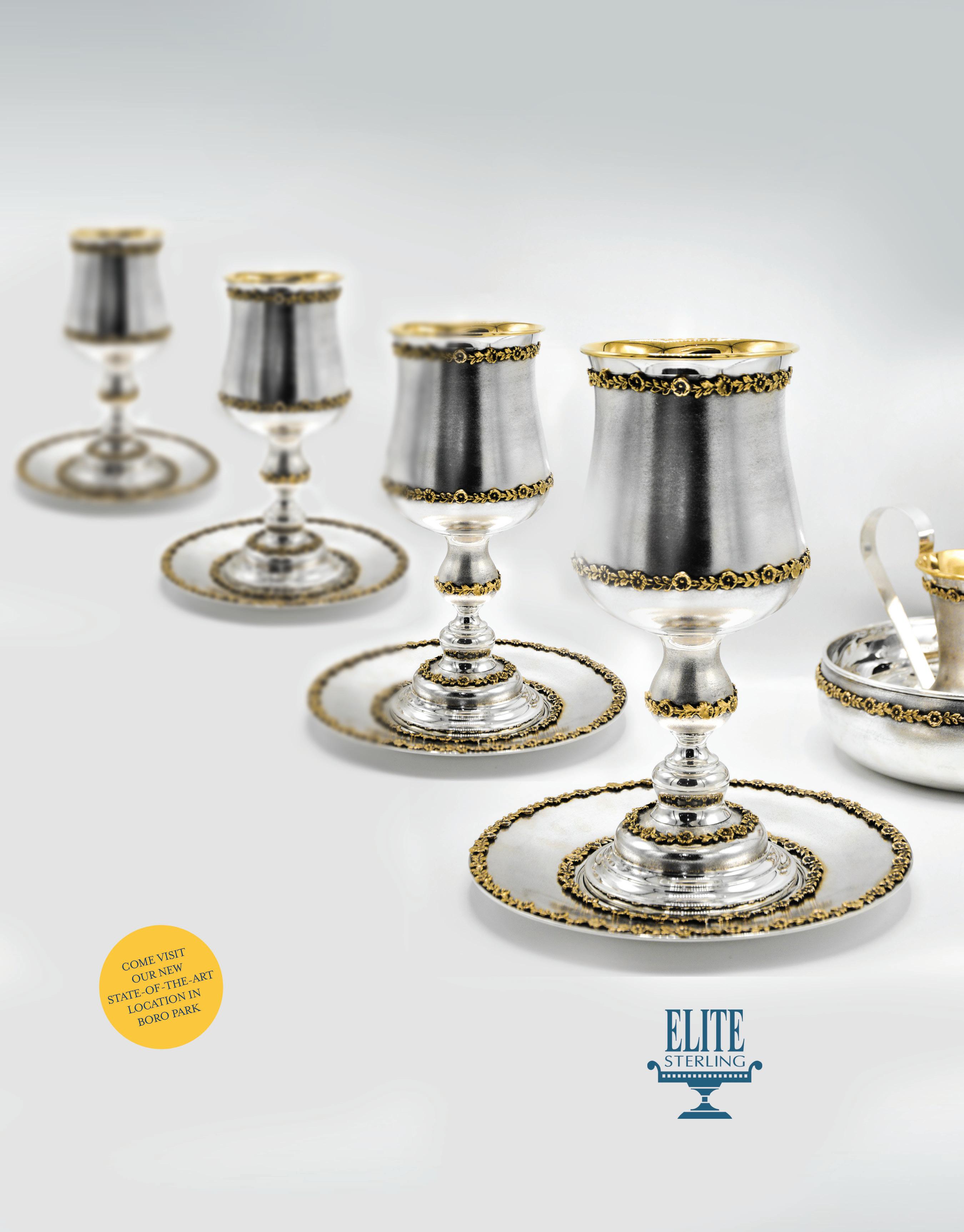
78 COLLIVE MAGAZINE NISSAN 5784

Wishing Everyone A Kosher un Freilichen Pesach New Location Boro Park: 4810 13th Avenue Brooklyn, NY 11219 Crown Heights: 321 Kingston Avenue, Brooklyn NY 11213 718-778-2161 | www.elitesterling.com


everyone A kosher un Freilichen pesach
WISHING

PAYMENT PROCESSING ISSUES?
How about a provider who ACTUALLY cares.

We specialize in:




Merchants with poor credit
Fighting chargebacks
Assisting with creating marketing material for the application
Large Ticket Transactions




Creating Company Policies
PCI Compliance
Assist Merchant with Money On Hold
CityCard International excels in credit card payment processing, prioritizing personalized service to meet your needs expertly. Our focus on fighting chargebacks protects your business, letting you concentrate on growth. Tailored solutions are available for merchants with low credit, including assistance with funds on hold.
Trust CityCard International for unmatched support and smooth transactions.

646-662-5454 | www.citycardservices.com
My story is your story
Chaya Abelsky teaches the key to unlocking one’s infinite potential.
By Esther Rodal


Chaya Abelsky is a people person. I don’t just mean that she’s friendly, warm and a good listener, although maybe she is that too. What I mean is that she loves people. Her awe for each person’s infinite G-d given potential shines through in every of her work; as principal of Infiniti Coaching and Coach Training, senior campaign manager at Charidy.com, and in her dedication to Chabad Moldova.
From Wall Street to nonprofits
Abelsky’s journey to selfactualization began as one of nine children growing up in the Crown Heights section of Brooklyn. “My parents treated each of us as if we
were the only child,” says Abelsky. “They saw my talent for math and science and guided me into studying computer programming. I began my career on Wall Street and it gave me a deep understanding of the corporate world.
“And with a growing family, I wondered if I needed a new direction. That same day on my way home, I encountered an acquaintance on the train to Crown Heights who told me about an opening in the nonprofit space. I instantly recognized Hashem’s hand at work! I began work on the technology side of a non-profit which provided me with an insight into how that space operates. After some time, I realized I preferred people to technology. With this new awareness, I went back to school to learn coaching at NYU. Studying as an adult is a totally different experience to being fresh out of school and I got to interact and ask a lot of questions which was incredibly rewarding.”
After qualifying as an executive and personal coach, Abelsky was often asked about coaching by people she encountered. So, together with a colleague at Brooklyn College, she created a coaching course to help others create their own careers.
Among her 180 coaching graduates, Abelsky is famous for saying “Awareness is the number one thing we owe in life”. She often leans into this approach when guiding leaders of nonprofits as they embark on multi-million dollar peer-topeer fundraising campaigns with crowdfunding platform Charidy. com. “Awareness is asking what’s working, what’s not working, and where do I want to go?” Abelsky asks a lot of questions, and this speaks to her belief that we each contain infinite wisdom within that just needs to be prodded out. “When it comes to our purpose, we are the experts. We already have the solutions within. All we need is reflection, awareness, and then a clear roadmap to achieve our goals.”
82 COLLIVE MAGAZINE NISSAN 5784
Chabad Moldova
Abelsky’s involvement with Chabad Moldova is inspired by her late father in law Rabbi Zalman Abelsky zt”l. “My parents-in-law devoted 26 years to rehabilitating and nurturing the remnants of the Jewish community in Moldova after decades of Soviet suppression and it was imperative to keep building on their legacy after their passing. My husband and I embarked on a mission to listen to the needs of Europe’s poorest Jewish community and help them transition to a new era after the loss of Rabbi Abelsky. It’s been my great privilege to help ensure the continuity of his work by bringing out four young couples as shluchim there and injecting new vitality into this special community. When the Russia-Ukraine War closed the airspace, Chabad Moldova was suddenly center-stage and the structure we helped put in place became vital to helping thousands of Jewish refugees.”
Living your purpose
Caring for a large family while juggling multiple careers can be exhausting and Abelsky is blessed with boundless energy as she takes on ever greater goals and milestones. She says she draws inspiration from her brother Rabbi Hirshy Minkowicz, whose wife Rashi passed away in 2014 at the age of 37, leaving behind eight children. “My brother followed the advice of the Lubavitcher Rebbe to move forward after loss with more joy and more growth by building the beautiful Rashi Campus, Chabad’s home in North Fulton, GA where he is the shliach. As a director of a nonprofit, he needs endless reserves of energy to fund, manage, and grow his ever expanding Chabad House. In a conversation with a fellow
shliach, he shared the secret of his success: ‘I wake up every morning remembering why I am here; to do my part in fulfilling the Rebbe’s vision.’ Being constantly aware of my purpose is something that drives me to make every day count.”
Abelsky sees her journey from working as a programmer to fulfilling her passion as a coach as an example that anyone can emulate if they think deeply about themselves and the purpose they are meant to achieve. “My story is your story,” says Abelsky. “Anyone and everyone can live each day paying attention to G-d’s hand in their own journey, and using the talents they have been given to impact the world around them. Talents can only take you so far. They have to be worked on to become strengths. But your weaknesses can also be turned into strengths, and when that happens, you can transform the gift of your life into your gift back to Hashem. This process takes two things: awareness and reflection . It means stopping for a moment, pausing and being fully present in the realization that I have one life to live, and I want to make it count!”
Infiniti Coach Training
This approach to self-growth forms the basis for much of Abelsky’s coaching philosophy which she teaches to aspiring coaches at her coaching academy called Infiniti Coach Training. “Whether they want to become personal or executive coaches or they are leaders who want to bring out the best in their schools and communities, they begin the journey to helping others by helping themselves first. A math teacher doesn’t have to be a triangle, but a coach must embody self-growth. As our slogan goes, ‘Nobody leaves unchanged’.”
Infiniti Coach Training’s 22nd cohort is now open for registration. Its International Coach Federation (ICF) approved training program brings a scientific approach to unlocking personal excellence. It was created and is facilitated by Abelsky in association with Dr Jay McNaught and is based on a similar program from Columbia University. The underlying principle of the program is the concept that every person is whole and resourceful and has the answers to challenges within themselves. This allows one to make changes in one’s life by asking deep questions that bring out answers that are already innately within.
Specifically, the course teaches conversational intelligence, emotional intelligence and decision-making intelligence. “Conversations are everything because words are powerful; they create worlds. We teach how to have effective conversations,” Abelsky explains. “Additionally, we find that emotional intelligence often leads to success far more than a high IQ so we help our clients develop that part of themselves. And decisionmaking intelligence develops our ability to make better life decisions, something everybody can benefit from.” In all, 180 coaches have graduated from the ICT, propelled by Abelsky’s genuine love of all people and her belief in their infinite potential.
“Every person should be able to know the reason that they were born, and the unique talents and skills that they bring to the world,” says Abelsky. “If you want to wake up each morning alive with purpose, start with awareness and reflection about what you’re here for. Begin your journey to discovering your infinity.”
COLLIVE MAGAZINE NISSAN 5784 83
Business Digest
PRESENTED B Y COLLIVE & CROWN HEIGHTS Y OUNG ENTREPRENEURS (CH Y E.INFO)
By Zev Gotkin
“A business enjoys exceptional success when it is run in agreement with all the partners. Furthermore, it is beneficial for others to take part as well, including individuals who are not partners in the business but participate in deciding that a certain venture is profitable.”
THE REBBE SICHAH OF 4 TISHREI 5750, TO “FRIENDS
OF LUBAVITCH” (TORAS MENACHEM 5750 VOL. 1, P. 39)
Hiring the Best Person for the Job
from Daniel Cotlar CMO/CEO of Cotlar Seed Capital
Brought to you by Level Eight Mentorship level8.org
Remember, the people who are good at interviewing are often not the ones who are actually good for the job. Just because someone interviews well doesn’t mean the person is qualified. And someone who might be the perfect fit might not interview so well.
I recommend coming up with a bulleted list of 3-5 specific things, or goals, you’d like to get accomplished by the person in this role, and specify the time frame in which you want these things accomplished — 30 days, 90 days, 180 days, etc. Based on your list of goals, create interview questions that test the person’s ability to complete the tasks necessary to accomplish those goals.
It’s also important to understand your company’s culture so that you can ask questions that test whether or not the candidate is a culture fit for your organization. I recommend reading Lead from the Core: The 4 Principles for Profit and Prosperity by Jay Steinfeld. There are some great tips in there!
Double Power

Schneur Landa shares tips for how to maximize potential and overcome challenges in a business partnership
Schneur Landa and Zalmi Raskin have enjoyed a fruitful business relationship for over a decade running Fello, a tech rental company based in New Jersey. As anyone in business knows, maintaining a successful partnership isn’t easy and requires constant work. We spoke with Landa about what tips he can share with business owners looking to build sustainable partnerships to endure for years to come.
In 2011, Zalmi Raskin hit on an idea to rent iPads and iPhones to people in the airport as they travel. Flying Connected, the name he gave for his new business, didn’t end up landing too many deals at airports, but it did start getting inquiries from companies looking to rent tech for their pop-up shops, trade shows, and large conferences. All that was needed for lift-off was a little investment capital.
That’s when he approached Schneur Landa to invest in his new company. Landa agreed, planning to act as a passive investor, providing much-
84 COLLIVE MAGAZINE NISSAN 5784
needed capital to grow the company without getting involved in the day to day. But as the two grew more acquainted and Landa saw potential in the new venture, he began to take a more active role in the company, facilitating strategic partnerships with companies like Square and Eventbrite. In 2018, the company rebranded from Flying Connected to Fello.
Today, Fello is a full-service tech rental company that enables companies to rent iPads, iPhones, POS (point of sale) hardware, and more for their corporate events. “We don’t just send you the equipment. We provide it, handle the logistics, and configure it for you to provide a full-service, out-of-the-box solution,” explains Landa. Companies utilize this equipment to process credit card transactions, conduct polls and surveys, deliver presentations, provide team-building exercises, and more.
Raskin and Landa’s strengths complement each other, and their individual skill sets have helped the company grow in different ways. It’s an ingredient that Landa insists is critical to a successful partnership, because it allows each partner to contribute to the company’s success in their unique way.
While Raskin is “the creative visionary of the company”, who thinks big picture and understands aesthetics, website design, and how to communicate the value of the company, Landa has utilized his business acumen to help scale the business to achieve greater goals. Landa is also involved in the hiring process, helping to build Raskin a strong team of capable administrators.
According to Landa, another important component is the mindset that each partner has towards their relationship. Specifically, each
partner needs to think how they can contribute to the partnership, instead of just thinking about what they can take from the business. He isn’t preaching theory; it’s something he himself practiced during the early days of the company.
When Landa joined as an investor, he didn’t feel comfortable taking half of Raskin’s company. After all, Zalmi Raskin was the founder. As he explained: “Even though I was providing my expertise and capital, I worried that many years down the line there might be resentment if I didn’t give him a higher equity stake. Even though we were becoming equal partners, I felt that Zalmi should still have an equity advantage over me since he founded the company.
“We share a mindset that we’re not just looking at what’s in it for us individually, but what we can each put into the partnership,” says Landa. “This manifests over time as each of us puts in more of our blood, sweat, and tears into it. We each want to pull our weight so much that it can almost get competitive at times how much effort we put into the company!”
Much like a good marriage, a successful business requires each partner to think about the good of the whole rather than focusing on personal gains. And, like any relationship, there are times when arguments arise or one partner feels more invested than the other. “Everyone struggles now and then,” says Landa. “But reminding yourself of how much there is to gain if the company grows and increases in value always snaps you back into focus.”
A business partnership is not all roses and sunshine and there are always going to be disagreements. How you handle them makes all the difference. At Fello, Landa and
Raskin don’t shy away from push back– they welcome open discussion and debate, much like two study partners working together to grasp the meaning of a complicated piece of gemara
“It’s in that push-pull, yin-yang, where you find the balance that lies in the middle,” says Landa. “Sometimes one of us is more conservative and cautious and the other is more bullish and gungho. By talking it out and hearing the other’s perspective, we reach conclusions and find the common ground needed to make decisions that will help the business grow.”
To prevent issues in a partnership, it’s important to create a framework where both sides feel heard and respected. Taking the time to proactively check-in and have difficult discussions is an exercise that requires both partners to make an effort. And Landa and Raskin each make sure the other has their say and feels heard, even when they disagree.
“Differences are a strength, not a weakness,” says Landa. “When business leaders don’t have anyone to challenge their biases, they are at greater risk of making mistakes. Often, we are blind to flaws in our thinking and a little resistance can help us appreciate a different perspective.
“The key to having productive discussions is in one word, ‘Respect.’ We listen to one another so we each feel respected, that our perspective matters. This requires active listening without dismissing the other person’s opinion as wrong before we even try to process it.
“You must recognize that there will always be times when you make wrong decisions,” says Landa. “It’s about communicating, listening, and correcting, and not letting ego get in the way.”
COLLIVE MAGAZINE NISSAN 5784 85
The Trap of Democracy
An excerpt of the new book
“To Win a War (The Jewish Way)”
by Rabbi Manis Friedman and Dr. Elad Ben Elul

Simply put, sovereignty basically means, “we do what is best for us.” Seems like a good idea, especially in dangerous times such as these. Why then is it not yet happening in Israel?
One reason is the fact that Israel is a democracy. That’s not to say that democracy is a bad thing. But is it working for us? Do we truly think it’s so wonderful being “the only democracy in the Middle East”? Why are we so proud of that? Here again we must ask: are we adopting this designation because we’re seeking approval and legitimacy?
Democracy is a very good system of government, but it may not be the best one in the Middle East (which could explain why we are the only ones practicing it.) A EuroAmerican democratic government, founded on democratic principles but surrounded by ethno-religious dictatorships, will naturally be very vulnerable, and will always be seen as an outcast. In that sense democracy may be hurting Israel badly, because democracy doesn’t belong in the ecosystem in which it must survive.
Also—a Jewish state can never really be fully democratic, because the system itself contradicts our own ethno-religious foundation.
Technically, our enemies could gain a majority in the government and vote to kill us, and it would be a “democratic” genocide. So it’s crucial that we define Israel first and foremost as a Jewish state, meant for the Jewish people. Then we can add that this state uses democratic values to govern itself— but only when these values are beneficial to our wellbeing. This pragmatic approach to democracy is the only way to survive in a region full of hostile dictatorships.
Generally speaking, democracy reflects the values and beliefs of the people. That is why it can be a very corrupt and chaotic system if its people have the wrong values. Democracy may work for people who are already moral, but it won’t make anyone moral. Yes, the majority can choose its leaders and be run by majority rule, but who can guarantee that this majority will be honest, moral, ethical, and G-dly?
Torah principles are essential to a democracy, ensuring that its citizens will select its leaders and laws on the basis of a clear moral compass. A society that studies and understands the message and the meaning of Torah will know right from wrong, holy from unholy, and wholesome

from destructive. In other words, democracy is a good idea, but only if it follows the Ten Commandments. Once a society has a sound moral infrastructure, its values can be expressed and applied magnificently through the governing tools of democracy.
For example, the original vision of American society included the idea of religious freedom: that nothing or no one can define or impose upon another person’s relationship with G-d. It was founded by people who had escaped religious oppression in Europe and wished to build a New World, where every human being can freely develop a personal approach to G-dliness. The Bible played a major role in this vision, and as a result this democratic “experiment” was a great success. Slogans such as “In G-d We Trust” became the bedrock of American civil society. Family values, patriotic sentiment, and global policies were made in the image of divinity. In recent decades, American democracy has become dysfunctional. Its culture has become torn, confused, and angry. It began when the Ten Commandments were erased from the public sphere. G-dliness is
86 COLLIVE MAGAZINE NISSAN 5784
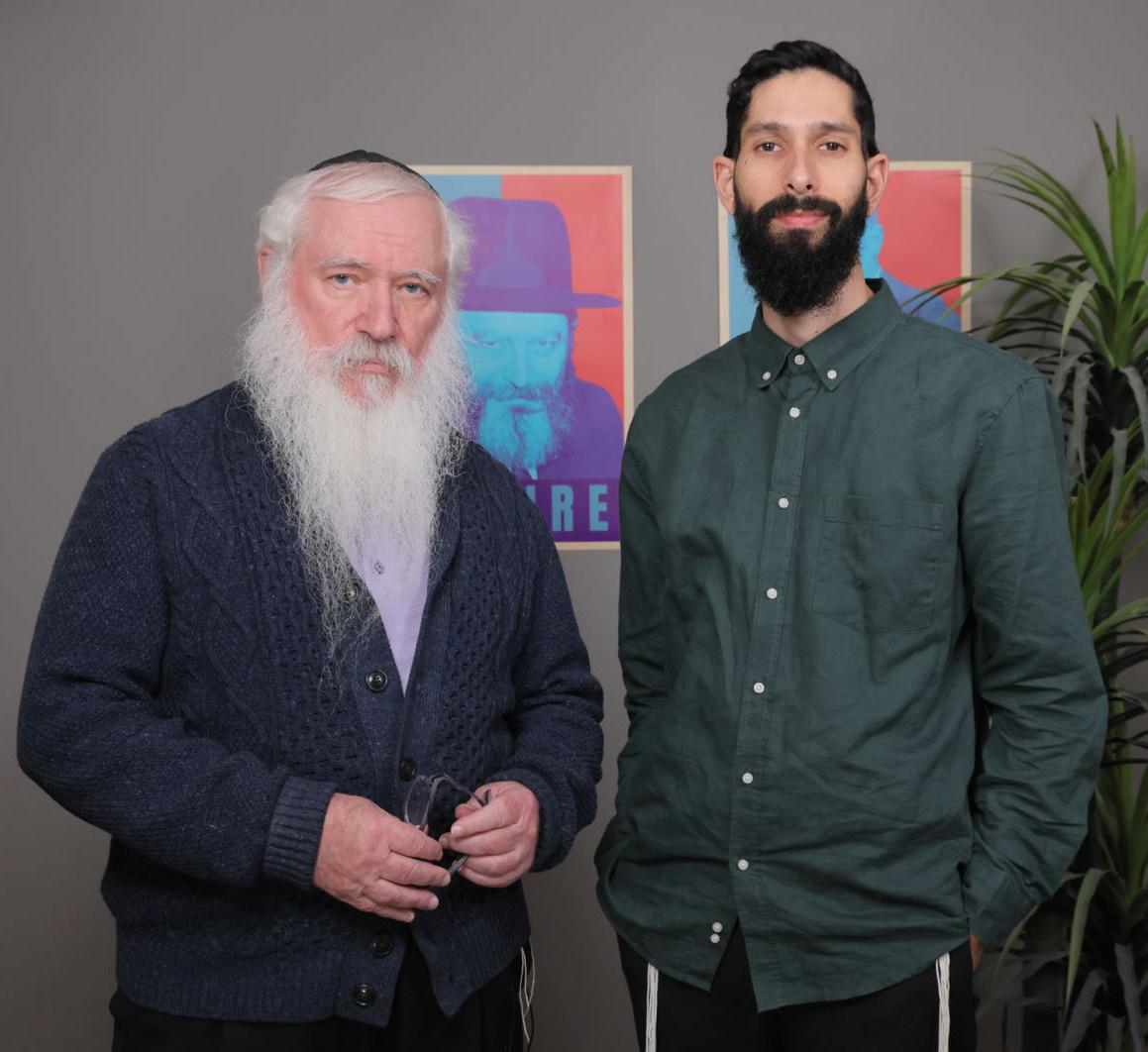
ridiculed. Exposure to religious thought and the freedom to practice school prayer have become a thing of the past. The result is a democracy without values. Real freedom of speech, respectful inter-group relations, traditional views of gender, classical education, a stable sense of security—none of these are functioning properly today in America.
Similarly, when Israel takes pride in being the only democracy in the Middle East, it mostly refers to its free elections. Open elections are
great, but you must be well educated to know whom to choose. Recently, Israelis have struggled as never before to form a government, largely because the politicians do not reflect traditional Jewish values anymore. Empty Western slogans inspired by Hollywood just cannot inspire the people of Israel, and this cultural void creates chaos.
Another democratic principle in which Israel takes great pride is fully accepting anyone and anything according to the ideologies of liberalism and pluralism. However
these values have ironically been emptied out of other values, because so many diverse opinions and perspectives are now considered “racist,” or otherwise intolerant. The attitude of “live and let live” has framed all other diverse values as “undemocratic.” Democracy has become allergic to religious values. Only a G-dly approach to democracy, or a democratic approach to G-dliness, will restore the integrity of the political system in Israel. Otherwise it will continue to sabotage its own spiritual development.
COLLIVE MAGAZINE NISSAN 5784 87

Can I sue my Rabbi for unsold chametz?
by Rabbi Shraga Homnick
One of the urgent to-dos on the Pesach to-do list for many people is ensuring the proper sale of one’s chametz to a non-Jew, so that it does not become prohibited with the arrival of Pesach. While the loss of chametz for some may amount to a few loaves of bread and a box of cereal or two, for others it may be their expensive liquor closet, or a couple of aisles in their grocery store, and for some – literally their entire livelihood.
In fact, the practice of regularly selling one’s chametz before Pesach in the manner we’re familiar with today developed in Ashkenazi lands in response to the economic reality of heavy Jewish involvement in distilling and selling alcohol.1
1. See Bach, Orach Chaim, siman 448. And see e.g. at length in ‘Toldos Mechiras Chametz’ by Rabbi Yaakov Laufer in Hamevaser Torani #541 (2019), which describes 6 major stages in the development of this practice: 1) The kernel of the idea of selling and handing chametz directly over to a gentile with the understanding that it may be repurchased after Pesach, in case of a last minute emergency (Tosefta), 2) The beginnings of this becoming a somewhat common and intentional practice (15th century), 3) The innovation of keeping the chametz in one’s
A halachic analysis of the subject of selling chametz and its fascinating implications.
As the practice stands today, the Rav is authorized to serve as an agent to conduct the sale with the buyer on the seller’s behalf. 2 Which raises the following intriguing question: If the Rav forgot to sell your chametz before Pesach, would you be halachically entitled to sue him for damages?
While this precise iteration of the question does not appear to have been discussed until recently (rabbis traditionally dealt with the mess created by other people who forgot to sell their chametz), we do find earlier variations of the culpability question in classic Jewish sources once the sale of chametz became a regular feature of Jewish life.
house (17th century), 4) The introduction of a bill of sale (mid-18th century), 5) Structuring the transaction as a down payment with a guarantor for the rest (late 18th century), 6) The shift from selling individually to selling through a Rav (19th century). For an overview from a Chabad perspective, see Seder Mechiras Chametz (2014). A discussion of the legal nature of the sale of chametz is completely beyond the scope of this article.
2. Before this part of the process attained its final form, the Rav would personally purchase everyone’s chametz first. It’s interesting to note that the Chabad Rebbes continued selling their chametz to the Rav in this fashion.
The commentaries on the Shulchan Aruch including the Alter Rebbe discuss a case of a guardian tasked with looking after his fellow’s possessions, who had his friend’s chametz in his possession for safekeeping but did nothing to deal with the impending chametz deadline; the depositor wishes to sue him after Pesach for failing at his one job: looking after the entrusted chametz to ensure that no harm befalls it. The Alter Rebbe rules that the guardian is not liable as his obligations were limited to physically looking after the entrusted item, not initiating legal proceedings to transfer the chametz away from the depositor’s ownership. At most, taking action to save the chametz in this way would merely have been an act of ‘hashavas aveidah (returning a lost item)[3]3 .’
3. See Alter Rebbe’s Shulchan Aruch, siman 443, se’if 8, and Kuntres Acharon #2 (Dover Shalom - Pesach, vol. 2, pg. 148 and pg. 157, and all the references cited there; interestingly, this Kuntres Acharon is cited in Kuntres Inyanah Shel Toras Ha’chassidus, fn. 103). The Mishna Berura (siman 443, se’if katan 12) describes this as the consensus of a majority of later Rabbinic authorities. For a broader discussion of this topic and a variety of
88 COLLIVE MAGAZINE NISSAN 5784
A number of his contemporaries, however, argue that this could constitute an act of negligence on the part of the guardian.
[Interestingly, some have drawn a parallel between this halachic discussion and a contemporary case of a stockbroker who fails to sell a stock before it crashed].4
Is the Rav in our case even a guardian though?5 He was never entrusted with the chametz itself. At most, one could argue that he’s something of a guardian for the documents appointing him as agent for the sale. And while it would be interesting to consider the halacha of someone whose negligent handling of important documents causes great monetary harm to others, the Rav in this case didn’t actually misplace the documents; he simply didn’t act on them. And he may not really be a guardian for the documents either.
A more promising line of argument may simply be that the Rav has already been appointed as an agent, or shliach, of the principal – the people who wished to sell their chametz. Moreover, unlike the case of a guardian where the chametz issue was never explicitly discussed, the owners of the chametz in this instance are implicitly relying on their shliach to carry out the very thing he was tasked with doing.
What is the law of a shliach who causes financial harm by failing to carry out clear instructions that
viewpoints and arguments, see e.g. Mishpat Ha’mechirah (2014) pgs. 297-305.
4. See Kovetz Hayashar V’hatov #20 (2016), pgs. 98-108.
5. For the following discussion, see Shaalos U’teshuvos Shevivei Eish (2015), vol. 3, siman 25; Maadanei Yom Tov, vol. 10 (2020), siman 56 (regarding a Rav who erred and sold the chametz to a Jew); Kovetz Tel Talpios #70 (2014), pgs. 155-159; and see the essay that follows (pgs. 160-164) with respect to a yeshiva principal who failed to take care of selling the organization’s chametz
required action? As it turns out, Shulchan Aruch6 appears to clear an agent who failed to make an important purchase of responsibility for the lost profit. But there’s a strong case to be made that the law will be different in the case of a shliach whose inaction results in direct damage.
However, the Rav may have a final ace up his sleeve: In this scenario, the chametz hasn’t actually been physically harmed at all; there simply is a halachic prohibition that has now taken hold of the chametz and rendered it unusable. In a case like this, it may be possible to argue ‘harei shelcha l’fanecha,’ the chametz itself is still right there and it is being returned in its original state to the owner.7
[Were this case to occur in reality, it is possible that some halachic authorities would rule that there’s a basis to say that the chametz would still be mutar ba’hanaah, though the halachic weight of this view is questionable].8
In light of the above, it may be interesting to consider, especially in view of the history of selling the chametz, whether the process has perhaps become just a bit too remote and depersonalized, especially with the recent proliferation of online forms. Perhaps those selling their chametz should receive a copy of the bill of sale once it is finalized, or at least some formal notice confirming that the sale has taken place.
6 Choshen Mishpat, siman 183, se’if 1.
7. See the Alter Rebbe, ibid. who invokes this with concern to a lender and a borrower.
8. See Maadanei Yom Tov, ibid. However see Alter Rebbe, siman 448, se’if 29 (Dover Shalom, vol. 3, pg. 30). See a brief overview in Sh’eilas Chaim - Pesach (2015), pg. 298.

COLLIVE MAGAZINE NISSAN 5784 89
Chinuch Matters
PRESENTED B Y COLLIVE AND THE MENACHEM EDUCATION FOUNDATION (MEF)
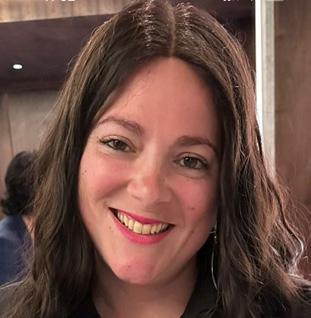
Mrs. Chanie Minkowicz Teacher at Beis Rivkah of Crown Heights
Please introduce yourself.
My name is Chanie Minkowicz from Crown Heights. I have been teaching since I came out of Seminary and currently teach 7th grade at Beis Rivkah.
Teaching in a big school, how do you ensure your students all get the help they need?
Beis Rivkah has many support systems in place. Mentors are available for teachers to consult with when they believe a student requires additional assistance. It is my responsibility as a teacher to be diligent and attentive in ensuring that students receive the necessary help. Students are constantly on our minds, whether at school, outside of school, in the morning, or at night. While there may be instances where we overlook certain matters, being approachable increases the likelihood of students reaching out to us when they need help.
How can we best prepare for the future of Chabad Chinuch?
We need the homes and the schools to be on the same page. There needs to be a sense of Aja as Yisroel and a partnership between the school and the parents to help the students achieve ultimate success.
Chabad Chinuch offers numerous resources, including the valuable work of the Menachem Education Foundation (MEF). Various workshops are available to support teachers, with Chabad leading the way in this regard. I have personally witnessed significant growth, both as a former student at Beis Rivka and now as a teacher there; the school has transformed positively. The level of care, attention, understanding, and accommodation for students is remarkable. Students feel valued and supported. Growing up as one of 11 sisters, most teachers likely knew my last name; however, today, each student is recognized as an individual.
What is a hobby of yours that would surprise your students?
I love to do puzzles; it is a calming activity.
What advice can you share with teachers as the end of the school year is approaching?
At this point, you have hopefully made a connection with every one of your students in a positive way. It is time to reflect to see if you know who their friends are, as this will help show you how well you got to know your students as a person. As teachers, content is not something we can ensure they will hold on to in the future, but reflecting on my days as a student, I remember the compliments I got from my teachers. You want your students to leave your classroom remembering the warm connection you made with them and the compliments you gave them. If you look around your classroom and see students you might have missed, try to bridge the gap and make that connection.
90 COLLIVE MAGAZINE NISSAN 5784
News and opportunities

52 Menahalim attended the Menachem Education Foundation’s Annual Men’s Chabad School Leadership Retreat held in Coral Springs, Florida

25 Menahlalos gathered together in Los Angeles, California at the Annual Women’s Chabad School Leadership Retreat
Participants at both retreats highlighted how important it was for them to take a step back and gain inspiration and guidance as leaders.

Torah Academy of Johannesburg, South Africa, is seeking a fulltime Principal to lead the Torah Academy Boys High School.
*For more information on job opportunities, visit mymef.org/shlichus.
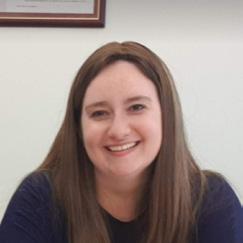
Teaching Tip
by Mushkie Lipsker, @evergrowingeducator
6 Classroom Lessons from the Seder
1) Seder: The word Seder means “Order.” The Seder has specific steps and routines. A classroom should have a structure with clear policies and procedures. There should be a basic schedule of what happens when so that students know what to expect - this allows for a smoother learning process.
2) Mah Nishtana: A classroom should be a place where questions are not only allowed but encouraged. A classroom should foster curiosity and wonder.
3) Storytelling: The Haggadah is full of stories. We discuss the story of our past. Stories are compelling tools in
keeping children’s attention and for making abstract lessons authentic and relatable.
4) Active participation: The Seder is an engaging, multi-sensory lesson! Spilling, questioning, singing, drinking, discussing. Try to incorporate as many of your students’ senses as possible! Not only is involving more of our bodies in Torah and Mitzvos the quickest way to purify the world (Tanya chapter 37) but it’s proven to make a much more powerful and lasting impression on our students.
5) “Bchol Dor V’dor”: The Seder is about relevance. Learning isn‘t
about history, and it’s about bringing the Torah to the present. It’s about learning the stories of our past and connecting them to our lives today. It’s about taking active lessons from these timeless stories.
6) The four sons: We have all kinds of characters in our classrooms - the wise student, the simple student, the student who doesn’t know what he doesn’t know - but how can we reach out to that “5th son,” the one who’s living in a different reality, and welcome them? How can we make our classroom a space where they feel “I belong here?”
COLLIVE MAGAZINE NISSAN 5784 91

Choosing the Right School
Q: How can I choose the right school for my child? And what if I live in a community with only one school, how can I make it work for my child?
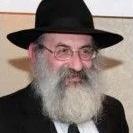
Rabbi Chaim Dovid Kagan
Dean of Bais Chaya Mushka High School in Monsey, New York
Choosing the right school for your child has no specific formula as every child is unique and has their own needs. That said, there are some steps you can take to ensure you make an informed choice.
Firstly, lay out all your options and carefully research each one. Gather as much information as possible about each school. If feasible, visiting the schools in person can provide valuable insights. During these visits, speak to the principals and observe the environment firsthand. Additionally, reaching out to other parents who have or had students in the school for their perspectives can offer valuable insights.
When assessing schools, prioritize those that demonstrate a genuine focus on each child’s individual needs. A school that places the student’s well-being above rigid institutional systems will likely be a better fit. While every school has its structure, this structure must serve the students rather than the
other way around.
Recognize your child’s unique requirements, for example, whether they need special assistance in a particular area or thrive on more independence. Ensure that the school is equipped to support their diverse needs, whether through specialized programs or a stimulating curriculum. Look for evidence of the school’s effectiveness in meeting these needs, such as clear outcomes and a proven track record.
Regarding Yiddishkeit and Chassidishkeit, look for a school that inspires students to grow. The school should have a focus on making Yiddishkeit beloved and something the students want to be part of and identify with strongly.
If boarding is necessary, prioritize schools that provide a safe, nurturing environment conducive to out-of-town students’ needs.
In situations where there’s only one school option in your area,
and sending your child out of town or homeschooling them are not viable options, consider becoming involved in the parent community. Try to identify what is missing from the school and to make up for what is missing.
With a positive and helpful attitude, you can positively influence the school and offer your help to contribute to the school’s success. Please work with the school to help them help your child. If Chassidishkeit or yomei depagra are what’s missing, extend effort in making sure your child receives them in extra-curricular activities. Consider including other students in these extra-curricular activities so your child does not feel socially alone.
Choosing a school for your child is not a simple process, but keeping these points in mind can make the process go more smoothly for you and your child.
92 COLLIVE MAGAZINE NISSAN 5784
Chinuch With the Times
How to Reach the Four Sons in Your Classroom
The passage of the Arba Banim reminds us anew each year to tailor our teaching to all of our diverse students. Do you recognize any of these four in your classroom?
Chacham: The upper third of our class needs to be challenged with the intricacies of Halacha and the deeper meanings of our heritage. We may think that they can fend for themselves, but a thinking, searching mind needs to be utilized in Limud HaTorah, lest the Chacham slip into the role of his neighbor, the Rasha, who takes his questions and potential elsewhere…
Rasha: This child is placed right next to the Chacham because his potential is as great as his challenges. As educators, we can strive to channel his passion, his questions and his energy to the service as Hashem. The key? Making it personal. The Rasha’s fundamental error is “excluding himself from the Klal;” he feels alienated and does not belong. By showing him how to find personal relevance and find his own place at the Seder table, this child can be transformed.
Tam: The middle third of our class benefits from engaging lessons, painted in dramatic color, about the “strong hand” Hashem displayed
and the miracles that He has done for us. Throughout our teaching, using stories, multiple learning styles, and engagement techniques will draw this child in and set them up on a path of lifelong learning and inspiration.
She’aino Yodei’ah Lish’ol: The underperformers in our class, or the silent children who neither challenge nor participate, may seem beyond our reach. However, the Hagada obligates us to take the initiative. By taking the first step towards a relationship, by creating a learning environment that piques even their interest, and by using the variety of professional methods within our reach to get to the root cause of their apparent apathy, we can create a classroom where every child can learn.
The Rebbe’s message about the fifth son who doesn’t even attend the Pesach Seder reminds us about the necessity of expanding the doors of our Chinuch even wider, and ensuring that every Jewish child receives the education that they deserve.
Which of these five kinds of children can you put extra effort in reaching out to in this last stretch of the year?
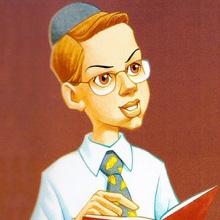



COLLIVE MAGAZINE NISSAN 5784 93
Credit: Rabbi Baruch Chait
Coping with Pesach stress
Sometimes the remedy for anxiety is a little more trust in Hashem
By Daniel Schonbuch
With the holiday of Pesach approaching, I expect that many of my clients are feeling anxious about cleaning for and celebrating Pesach Each year at this time I receive many calls from people complaining that they are having feelings of anxiety or even panic attacks. As a therapist, I know that the somatic signs of anxiety, tension, and stress often come together and people need help to navigate through this wonderful, yet often stress-provoking season. As many discover, stress often turns into anxiety when it isn’t managed well. Your heart starts to pound harder, your stomach tightens into a knot, and you imagine the worst possible outcomes.
But the terms are sometimes used interchangeably, and it can be difficult to tell the difference between the two. Understanding the signs of anxiety versus stress
can help you better cope with their experiences and identify when to seek mental health treatment.
Is stress the same as anxiety?
The main difference between stress and anxiety is where the trigger for the tension arises. During stress the body responds by speeding up the nervous system and increasing one’s heart rate, perspiration, and muscle tension (headaches) and slowing down digestion (stomachaches). It rises due to a specific event (Pesach cleaning, the seder etc. ) or a lifechanging event (loss of job, moving etc.).
The key here is that after the threat has passed, so does the stress response. Stress can be chronic and ongoing, but it’s considered the result of external situations.
Anxiety is different; it is
characterized by a chronic and heightened state of hypervigilance and fight or flight mode—even when there’s nothing specifically stressful to point to as a cause. Someone experiencing anxiety often feels a pervasive but vague sense of unease, as though a threat might occur at any moment.
An anxiety disorder such as Generalized Anxiety Disorder (GAD) typically consists of distressing anxieties about everyday situations. This includes excessive worrying about big things like relationships, finances, career, and health. It can also include worries about smaller things, like being obsessively nervous about running out of gas oan a road trip.
How to beat anxiety
If your anxiety doesn’t pass after Pesach is over, the two most powerful tools are all based on
94 COLLIVE MAGAZINE NISSAN 5784
sources in Torah and the Tanya. The first is to understand the concept of “Moach shalit al ha lev ”. This means to practice control over your thoughts by using your mind. Learn to observe and notice what you are feeling and recognize that these are anxious thoughts that you are experiencing. This helps create some distance from your thoughts, long enough to accomplish the next step: increasing emunah
I have always found that when a person increases their belief in G-d their anxieties are more manageable. Through thinking positive thoughts you can actually reduce your fears and change your situation.
The Lubavitcher Rebbe explained that positive thoughts actually cause positive outcomes and that it is accomplished through developing complete trust in G-d. This level of trust is distinct from a general faith in G-d (believing in His existence and providence). Trust implies that a person will “‘rely and depend on G - d alone to the extent that he casts his lot entirely upon Him, as it is written: ‘Cast your burden upon G - d,’ (Tehillim, 55:23) i.e., the person has no other dependency in the world except upon G - d”.
In quoting Duties of the Heart, the Rebbe explained that the level of trust needed to affect a positive outcome should resemble “that of a prisoner in a dungeon in his master’s domain.” The prisoner puts his trust only in his master, for “he is given over to his hand. No other person can cause him harm or help him.” “This realization”, explained the Rebbe, “that G-d alone has the capacity to help him is the foundation for a person’s trust that G - d will bestow revealed good upon him, even if he is not worthy of this kindness.”
By keeping these two principles in mind one can break free from most forms of anxiety. This is an especially appropriate message for Pesach when we eat the matzah - “ the bread of faith”. By noticing one’s thoughts and replacing them with positive ones, one can turn the upcoming season and beyond into an experience of true inner redemption.
Rabbi Daniel Schonbuch, LMFT, is a licensed therapist and the owner and director of MyTalkPlace.com that offers therapy with frum therapists for the Jewish community. He is the author of several books on therapy including: Think Good and It Will Be Good: Spiritually-Based Therapy Inspired by Viktor Frankl and Jewish Wisdom available on amazon.com


COLLIVE MAGAZINE NISSAN 5784 95
the inside track
By Sruly Meyer
A beloved anthem of hope almost didn’t take off
The Making of Shwekey’s ‘Vehi Sheamda’
In the months since the October 7 massacre and the Gaza War, one song that has provided hope and expressed faith for IDF soldiers and Jews worldwide has been an older song based on the “Vehi Sheamda” passage in the Pesach Haggadah.
Composed by Yonatan Razel and sung by Yaakov Shwekey, it debuted on the Jewish music scene in 2001.
Shwekey had already released some hit songs—such as Mehairah, Racheim, and Shomati—yet some could argue that “Vehi Sheamda” cemented his status as a worldwide sensation.
“Wow, has it really been 15 years?” Shwekey responded when asked about the background of this song, today viewed as an anthem of emunah and resilience over antisemitism.
“We were working all day on songs for the Ad Bli Dai album with famed composer and arranger Ken Burgess, A”H,” Shwekey recalls. “We worked with many composers, and the last one was Yonaton Razel. We hadn’t
found what we were looking for. As we were wrapping up and putting on our coats, Yonatan said he had one more song he wanted us to hear. He said it was a very special song that he hadn’t put on his most recent album.”
Shwekey says that he liked it and structured the song slightly differently from its original form (“Matzileinu was moved to be the high part, instead of the low part where it was originally.”) Initially, Shwekey says, “people in the music business asked me why I made a Pesach song. ‘It’ll never be sung year round,’ they said.”
A few months later, Shwekey and Razel performed the song at the Live in Caesaria show in northern Israel. “I’ll never forget the response,” Shwekey says. “The song really came together and had an enormous impact. The song just had this power, and we see 15 years later how this song took over the nation and became a mantra of hope.”
Shwekey adds, “Had we put our

coats on a little faster or stopped the session earlier, this song might not have been. It shows you that the Ribono Shel Olam orchestrates everything in life and everything is meant to be as Hashem planned. It’s been a tremendous zechus to bring this song to the world.”
Shwekey is launching a new album, released in 4 different parts, each consisting of 6 songs, a total of 24. Each part will reflect a different segment of the Jewish world and honor how we are all one body, one soul. The newest song is titled “Guf Venshama.”
96 COLLIVE MAGAZINE NISSAN 5784
5 things you didn’t know about...
Abie Rotenberg
Abie Rotenberg, known for his contributions as a singer, songwriter, and producer, has been a prominent figure in Jewish music for many decades. Journeys, Dveykous, Lev V’Nefesh, Marvelous Middos Machine and Aish are only some of the nostalgia he’s responsible for.
Here are 5 interesting facts about his works that he shared with us:
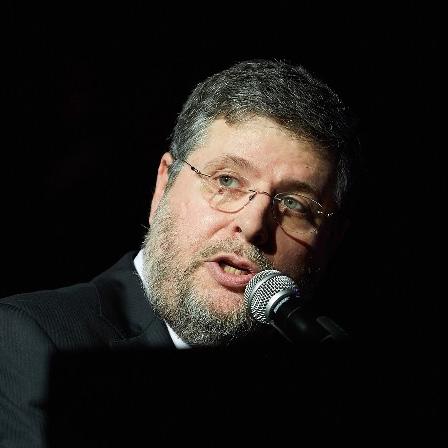

The Dveykus band was a result of a friendship
“I went to Yeshiva with Label Sharfman and Yussi Sonnenblick. We loved music, and it became very clear that this would be the start of something special. This was in the early days of the modern Jewish music scene, and there was a real thirst for this new wave of
Jewish music.”
2
He based Marvelous Middos Machine on his kids
4
“I’ve always looked for captivating stories to build around for a song. While working on the Marvelous Middos Machine, my children were rambunctious. They provided both the impetus as well as (unintentionally) the subject matter behind many of the songs.”
There was a hit song he didn’t predict
1
“I had a pretty good idea of which songs were more likely to become popular. Every once in a while, a song does come around and surprise you. Habet from Aish Volume I outperformed my expectations.”
He was inspired by Moshe Yess
“I was inspired by the album Megama, which featured Shalom Levine and Moshe Yess. One of the songs we worked on together for Journeys was the famous “Pesach Blues” song. Moshe A”H was super talented and a true professional. One of the things people might not know is that Moshe was also extremely funny. He is sorely missed.”
3
5
He wrote a novel
“The Season of Pepsi Meyers is an interesting and exciting baseball story, but also educates the uninitiated about the basics of Torah Judaism. It could be used as a Kiruv book.”
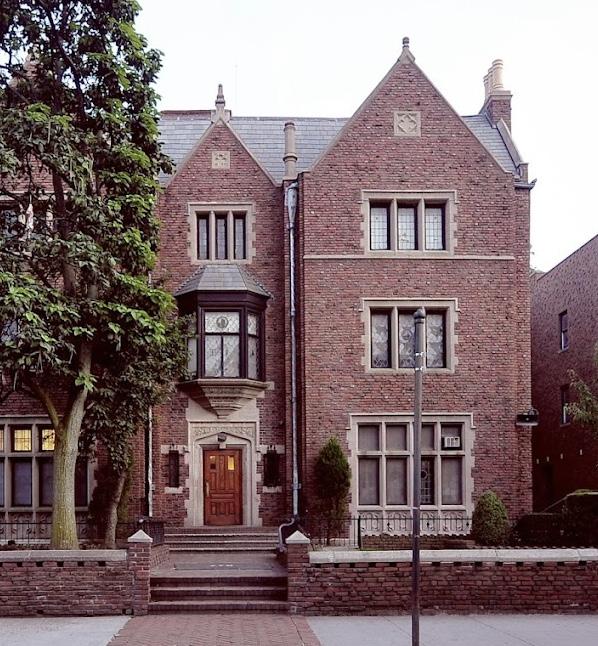
Who composed what
The niggunim for Yud Aleph Nissan

For several years, chassidim took a chassidic niggun and adapted words from the chapter of Tehillim corresponding to the Rebbe’s age to honor his birthday on the 11th of Nissan.
That changed on Yud Aleph Nissan 5742 when Reb Faitel Levin composed a brand-new niggun to the words “Harninu Leilokim” in honor of the Rebbe’s 80th birthday. “I sang it to the bochurim, it caught on, and the rest is history,” says Reb Faitel, a chossid and sofer sta”m in Crown Heights.
“It always intrigued me hearing that new niggunim had been introduced or composed in years past,” said Levin, who also composed the famous “Rosh Chodesh Kislev” niggun in 5742. “But in the 70s and 80s, it was not the case.”
One of the people who encouraged
him to compose was Reb Yoel Kahn A”H, the legendary transcriber of the Rebbe’s teachings. When questioned, ‘Who are these people to make new niggunim?’ Reb Yoel would say that the same question could have been asked of the chassidim of previous Rebbeim
Since then, a new niggun has been composed and sung in front of the Rebbe each year. A rotating committee, unofficially organized as a Vaad, convenes to select the niggun based on a majority decision. In addition to Reb Yoel and Reb Faitel, its members included Mendel Schneerson, Zalman Baumgarten, Hershke Gansberg, Sholom Ber Baumgarten, and even the worldrenowned singer Avraham Fried.
These were the people behind the niggunim especially composed during the years 5742-5752
Upcoming... Miami Boys Choir double album and dual concerts
Yerachmiel Begun and his Miami Boys Choir are introducing a new double album, One Voice, with volume 1 released before Pesach. Launching it will be two concerts on Chol Hamoed Pesach - Thursday, April 25, at 1:30 PM and 4:30 PM at the Union Performing Arts Center in Rahway, New Jersey. These concerts will also feature Uri Davidi, Dovid Pearlman, and The Miami Teens.
This new Pesach show follows an old practice - the Miami Experience concerts Begun would pull off for
years. “I’ve been doing this a very long time now, and I would say that the Miami Experience shows really were a watershed moment for the Miami Boys Choir,” he told us.
“We started with one show in 1991 called the Miami Experience. It was a huge success, so we did two shows for Miami Experience 2 the next year. Then, every year, we added a show to correspond with the year. Miami Experience 3 had three shows and so on.”
One of the things Begun learned
98 COLLIVE MAGAZINE NISSAN 5784
��
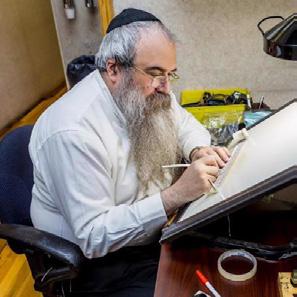
Reb Faitel Lewin
Crown Heights
ונזוע םיקלאל ונינרה - א”פ קרפ - ב”משת תנש
םתא םיקלא יתרמא ינא -ב”פ קרפ - ג”משת תנש
םשה הבוש - צ קרפ - א”שנת תנש
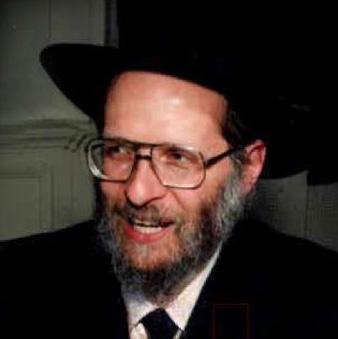
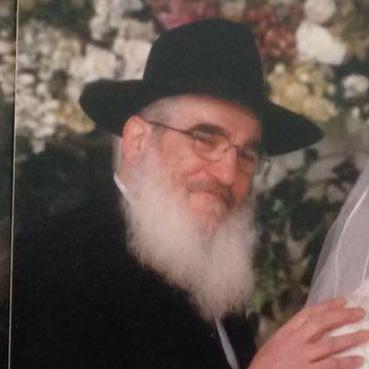
Reb Aaron Blesofsky
Crown Heights ןויצ
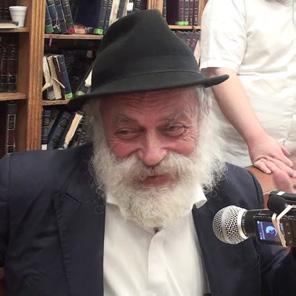
Reb Sholom Bruchstat
Crown Heights
התא יכ ועדיו - גפ קרפ - מ”דשת תנש
ליח לא ליחמ וכלי - דפ קרפ - ה”משת תנש
םשה תיצר - הפ קרפ - ו”משת תנש
חרק ינבל רומזמ ריש - חפ קרפ - ט”משת תנש

Bochurim of Yeshiva
Tomchei Temimim
Morristown, NJ
ךאסכ ןוכנ :גצ קרפ - ד”נשת תנש
from producing Yom Tov shows was perfecting the timing. “One year, Yom Tov was Shabbos and Sunday. We scheduled the first show for Sunday night, which was Motzoei the first days. It was definitely a challenge to do a show so late and right after Yom Tov. We learned the hard way that it isn’t a great idea...”
These annual shows produced an uncontested classic, Miami Experience 4 from 1994, now celebrating 30 years. It featured “Around the World with MBC,” a spectacular song and dance performance that imagines what will happen in Mexico, China, Russia, England, and Israel when Moshiach comes.
“The Haggadah production was a 30-minute piece and I was concerned it would go too long,” Begun says. “But all these years
later, people still tell me how they sing those songs by the Seder. The song Avodim He’inu was composed especially for this show, and it was a big challenge to have the arrangement as a live performance. Thankfully, as expected, Yisroel Lamm did an amazing job.”
A second segment, “The Haggadah,” introduced new songs in harmony with an adult men’s choir. In that show, Miami performed one of their all-time most widely acclaimed hits, “Nekadesh,” and displayed their amazing dance skills in a chassidicthemed performance featuring clarinet player Yehuda Spinner.
“At the time, I didn’t know how to read music so well,” Begun said. “It was a complicated process. I wrote all the songs, Yisroel Lamm wrote all the harmonies and we had to get a musician to play out
תירב יתרכ - טפ קרפ - נ”שת תנש
םימי ךרוא
his sheets. It was really amazing seeing the musical collaborative process come together. Especially the Vehi Sheamda which was truly symphonic.”
“Miami Experience 4 was a milestone concert in the series,” he adds. “The success was so big that it inspired me to move the venue from Brooklyn College to Nassau Coliseum the next year. There, we had five shows and over 15,000 people in attendance. It’s still one of the largest audiences in America for a chassidic concert.”
That being said, Begun is eagerly looking forward to the upcoming One Voice concerts. It will feature songs from the new album plus many of their classic hits. Tickets are available at miamiboyschoir.com
COLLIVE MAGAZINE NISSAN 5784 99
- אצ קרפ ב”נשת תנש תבשה םויל ריש רומזמ :בצ קרפ - ג”נשת תנש
יקולא םשה ךדוא - ופ קרפ - ז”משת תנש
Rabbi Yosef Yitzchok “Fitzi” Lipsker A”H Morristown, NJ
םשה בהוא :זפ קרפ -
תנש
ירעש
ח”משת
The Blessing in a Head Wound
A story of the Rebbe’s unceasing guidance and how a shrapnel wound in Gaza saved a soldier’s life
by Asharon Baltazar
Rabbi Menachem Kutner, director of the Chabad Terror Victims Project, relates:
“The recent opening of a new rehabilitation department at Hadassah Mount Scopus Medical Center was prompted by a surge in wounded soldiers. Previously, doctors directed these soldiers to the Sheba Medical Center in Tel Hashomer. However, the influx of casualties from the war overwhelmed Sheba and necessitated the establishment of an additional rehabilitation facility. After a few months of construction, the new department opened in Hadassah.
“I began visiting the soldiers staying at the new department as soon as it opened. I went from room to room, exchanging words of inspiration with patients until I met Oz Yaakov. His head wrapped in clean bandages, Oz lay in bed as his parents, Tzuriel and Ranit, sat around him. Oz, a resident of Jerusalem, husband, and father,
was wounded in Gaza after suffering shrapnel injuries to his head.
“We started chatting and Oz’s parents shared with me that they attribute their son’s birth to a blessing they received from the Lubavitcher Rebbe. Naturally, I was eager to hear the story.”
“Seven years into our marriage, we still struggled with infertility,” said Tzuriel. “When treatment at the hands of the leading specialist at the Hadassah Ein-Kerem Medical Center failed, I decided to request a blessing from the Lubavitcher Rebbe.”
“I dialed the Rebbe’s secretariat repeatedly, but the phone remained busy. I spent the night trying to get in touch, calling the number again and again, and only after many hours, did I manage to get a hold of a secretary. I told him about the treatments we were going through and asked for the Rebbe’s blessing that the procedure should succeed.
“The secretary requested our names
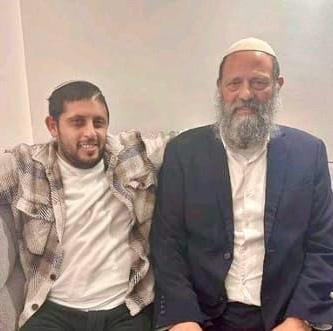

along with those of our mothers, saying he’ll relay the information to the Rebbe.
“We persisted with the treatments. At a certain point, our specialist recommended consulting another doctor at the Bikur Holim Medical Center. He had an innovative treatment that might be of benefit to us.
“But there was one problem. Our insurance didn’t cover this innovative treatment, and the cost was prohibitively expensive. We wouldn’t be able to afford it.”
“I told my parents about it,” Ranit continued. “My late father, Rabbi Asher Litov (Sharabi), Rabbi of Even Shmuel, said that he would agree to finance the treatment on condition that the Lubavitcher Rebbe gives his blessing. We were surprised that my father conditioned his help with a blessing from the Rebbe, but that was his wish.”
“I turned to one of my Chabad
100 COLLIVE MAGAZINE NISSAN 5784

friends,” Tzuriel said, “and asked for his help contacting the Rebbe. I dictated every possible detail about our situation, and he wrote it all down and faxed it to the Rebbe’s secretariat. Half an hour later, my friend called me, his voice trembling with excitement, surprised at how quickly he had received an answer.
“The Rebbe’s response spanned three paragraphs. The first paragraph urged us to begin the innovative treatment, while the second assured us he’d mention our names at the Ohel. In the final paragraph, he bestowed his blessing upon us.
“The treatment proved successful, and in 1990, we welcomed our first daughter, Nesya, into the world. We immediately sent a letter to the Rebbe informing him of our daughter’s birth.”
“Someone told us the Rebbe customarily sends a congratulatory letter for the birth of a child. We expected a response soon, but as
weeks and months passed, no letter from the Rebbe showed up.”
“In the following months, Nesya developed a severe condition in her leg. After attempting to treat the problem using non-invasive methods, the doctors decided that the only option was surgery. On the day of the operation, amidst our anxiety, I suddenly found a letter from the United States in our mailbox.
“The return address was 770 Eastern Parkway – a letter from the Rebbe. I opened the envelope and found it dated to the birth of my daughter. Somehow, the letter was “delayed” for nine months, lost in transit, before arriving on the day of the surgery. The Rebbe’s blessing calmed us down, and thank G-d, the surgery proceeded smoothly. Today, Nesya is a mother of five children.”
Ranit concluded, “About two years after our firstborn, in 1992, we had twins, a boy and a girl. We called our son Oz and our daughter Hadar.
“Thankfully, G-d’s blessings didn’t stop, and we merited to have six more children. May He grant us the joy of seeing all of them flourish.”
“To my surprise,” related Rabbi Kutner, “Oz told me that he is grateful to G-d for the shrapnel. In the hours following the injury, x-rays discovered a malignant tumor metastasizing inside him. Doctors immediately placed him on an operating table and removed the growth. Now, he is on the path to recovery. The doctors told Oz that detecting the tumor this early saved his life, and if it wasn’t for the injury in Gaza, he might’ve discovered it too late.”
“My injury in Gaza was the best outcome I never would’ve expected” is a peculiar statement to hear from a reservist recovering in a rehabilitation department with a head full of bandages. But for Oz, it was the truth.
COLLIVE MAGAZINE NISSAN 5784 101
Four Delicious Pesach Recipes Kosher Spread
Every year when Pesach comes around we go back to serving our traditional favorites. Still, it's always nice to find something new to impress the guests and bring a new flavor to the typical Pesach rotation. Here are four unique recipes for you to add this year!
Disclaimer:
The customs and stringencies (minhagim and chumros) that Yidden have adopted for Pesach are both sacred and cherished, illustrating the beautification of our observance of Hashem’s mitzvos. Naturally, each family's tradition varies, including the variety of foods they use and avoid during this Yom Tov.
Lubavitch Chassidim are particularly known for their minimal ingredient usage. The following recipes might not align with the customs of many families. Readers are encouraged to find suitable substitute ingredients or save the recipes for another time of the year.
102 COLLIVE MAGAZINE NISSAN 5784
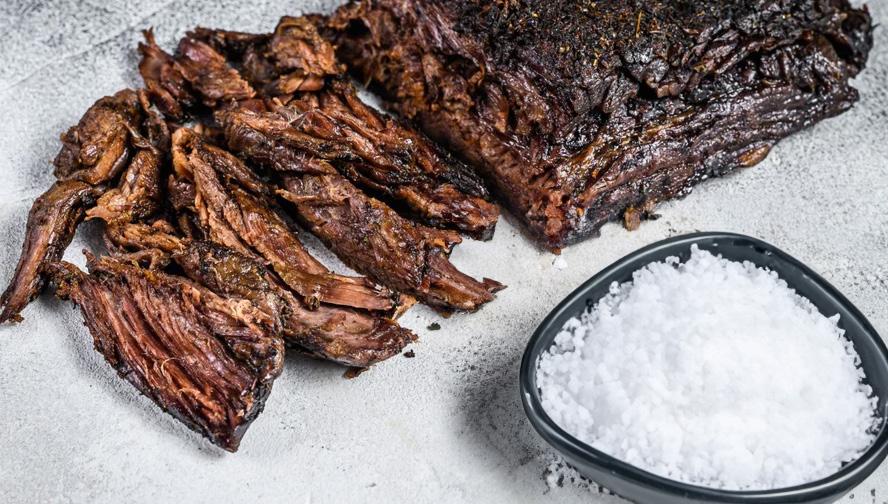
Salt Crusted Brisket with Potato Wedges
Sruly Meyer, the writer behind our food and music sections, operates his own marketing agency in Hollywood, FL. He is also a home cook who runs a food and travel blog discussing fitness, local food scenes and daily life being a Jewish father and business owner.
@SrulyCooks
Ingredients:
For the salt crust brisket:
1 (4-5 pound) Kosher for Passover beef brisket
1 cup kosher salt
2 tablespoons ground black pepper
2 tablespoons onion powder
2 tablespoons olive oil
For the potato wedges and onions:
6 medium potatoes, washed, peeled and cut into wedges
2 large onions, peeled and sliced
3 tablespoons olive oil
Salt and pepper to taste
Instructions:
Prepare the salt crust brisket:
Preheat your oven to 325°F (160°C).
In a bowl, mix together the kosher salt, black pepper and onion powder.
Place the brisket on a large baking sheet lined with parchment paper.
Rub the olive oil all over the brisket, then generously coat the brisket with the salt and spice mixture, pressing it onto the surface.
Roast the salt-crusted brisket in the preheated oven for about 3-4 hours, or until the meat is tender and cooked through.
Once cooked, remove the brisket from the oven and let it rest for about 15 minutes before slicing.
While the brisket is roasting, prepare the potato wedges and onions.
In a large bowl, toss the potato wedges and sliced onions with olive oil, salt, and pepper until evenly coated.
Spread the potato wedges and onions out on a baking sheet lined with parchment paper.
Roast in the preheated oven for about 30-35 minutes, or until the potatoes are golden brown and crispy, and the onions are caramelized, stirring halfway through.
Once the brisket has rested, slice it thinly against the grain.
Serve the salt crust brisket slices alongside the roasted potato wedges and onions. Garnish with chopped fresh parsley.
COLLIVE MAGAZINE NISSAN 5784 103
Pesach Chicken Roll with Sautéed Vegetables
Yields 4-6 servings
Ruchele Honig is a private chef and home cook with a passion for flavor. She lives with her family in Brooklyn, NY.
@For_love_of_food

Ingredients:
For the chicken roll:
1 whole chicken, deboned and butterflied
1 cup potato starch
Salt and pepper to taste
2 tablespoons olive oil
For the sautéed vegetables:
2 large onions, sliced
2 large carrots, sliced
2 tablespoons olive oil
Salt and pepper to taste
Instructions:
Prepare the chicken roll:
1. Pat dry the deboned and butterflied chicken with paper towels.
2. Roll the chicken in potato starch until evenly coated.
3. Heat olive oil in a large pot over medium-high heat.
4. Brown the chicken roll on all sides, then remove from the pot and set aside.
5. In the same pot, add more olive oil if needed.
6. Sauté the sliced onions and carrots until they start to soften and caramelize, about 15 minutes.
7. Season with salt and pepper to taste.
Cook the chicken roll:
8. Return the browned chicken roll to the pot with the sautéed vegetables.
9. Pour water halfway up the pot, ensuring the chicken is partially submerged.
10. Cover the pot and let it simmer over low heat for about 2-3 hours, turning the chicken roll every half hour.
11. Cook until the chicken is tender and cooked through.
12. Once the chicken roll is cooked, remove it from the pot and let it rest for a few minutes.
13. Slice the chicken roll into thick slices and serve with the reserved sautéed vegetables on the side.

OnionSmothered Flanken
Yields 6-8 servings
Miriam Pascal is a chef, author and food stylist living in New York City. She recently released her new recipe book, Real Life Pesach Cooking published by Artscroll.
@Overtimecook
Ingredients
6-8 strips bone-in flanken.
2 1/4 cups caramelized onions
1 cup dry or semi-dry red wine

1 inch fresh ginger, minced, OR 2 frozen ginger cubes
2-4 Tablespoons sugar, optional
Kosher salt for sprinkling.
Ground black pepper for sprinkling.
Oil for searing

Instructions
Preheat oven to 275°F. Prepare a large baking dish.
Sprinkle salt and pepper very generously over the entire surface of the meat. Turn meat; repeat on the second side.
In a large frying pan, heat oil over high heat. Add flanken; sear for 1-2 minutes per side until the outside is nicely browned.
Place into prepared baking dish. Spread caramelized onions over the meat.
In a small bowl, combine wine, ginger, and sugar (if using); pour over the flanken.
Cover tightly; bake for about 5 hours, until fork-tender.
Make your Own Paprika and Onion Powder
Onion Powder Ingredients
4 large onions, peeled
Directions
Preheat the oven to 170°F and line two baking sheets with parchment paper.
Peel each onion, and, using a grater, grate each onion. This should yield about 4 cups.
Transfer the grated onions to a cheesecloth or heavy duty paper towels and squeeze out excess liquid.
Divide the onions in half and lay them out in a thin layer on each of the parchment-lined baking sheets. Bake for 5 hours, or until completely dry. Let the dried onions cool completely before grinding them.
To grind the onions, place them in a food processor, and grind them down to your desired consistency.
Paprika
10 - 15 red bell peppers
Remove stems and seeds, cut into small thin julienne-style strips. Lay on baking sheets spread out and bake at 170 degrees for about 4 hours. Keep an eye on it, if they aren’t crispy and dried after 4 hours, let it go another 1 hour. Let cool for one hour and then use a food processor to grind them till it’s in powder form. Store in a cool glass jar to use, or order ahead Amazon spice containers.

Ingredients
500 grams bittersweet chocolate
Zest of 1 lemon
1 1/2 cups ground hazelnuts (alternatively, walnuts, filberts, almonds, or pecans can be used)
2 1/4 cups granulated sugar
6 large eggs
3/4 cup vegetable oil
Chocolate Hazelnut Bars
Yields approximately 24 bars
Originally from Israel, Chef Tzippy is a personal chef now living in Hollywood, FL. @cheftzippy
Instructions
Preheat your oven to 350°F (175°C). Line a standard-sized cookie sheet with parchment paper.
Break up the bittersweet chocolate and spread it evenly on the parchment paper.
Place the cookie sheet in the preheated oven for 3-5 minutes, or until the chocolate is fully melted.
Remove the melted chocolate from the oven and spread it out evenly on the cookie sheet. Set aside to cool slightly while you prepare the cake batter.
In a large mixing bowl, whip the eggs for 4-5 minutes until light and fluffy.
Add in the lemon zest, ground hazelnuts (or other nuts), sugar, and vegetable oil. Mix until well combined.
Pour the batter evenly over the cooled chocolate base in the cookie sheet.
Bake the bars
Place the cookie sheet in the preheated oven and bake for 30-40 minutes, or until the cake is set and a toothpick inserted into the center comes out clean. Baking time may vary depending on your oven.
Cool, slice, and serve
Once baked, remove the cookie sheet from the oven and immediately slice the bars while they are still warm.
Allow the bars to cool slightly, then transfer the entire cookie sheet to the freezer and let the bars chill for 15 minutes.
After chilling, divide the bars into individual portions.
Store the chocolate hazelnut bars in an airtight container in the refrigerator for up to one week.

106 COLLIVE MAGAZINE NISSAN 5784

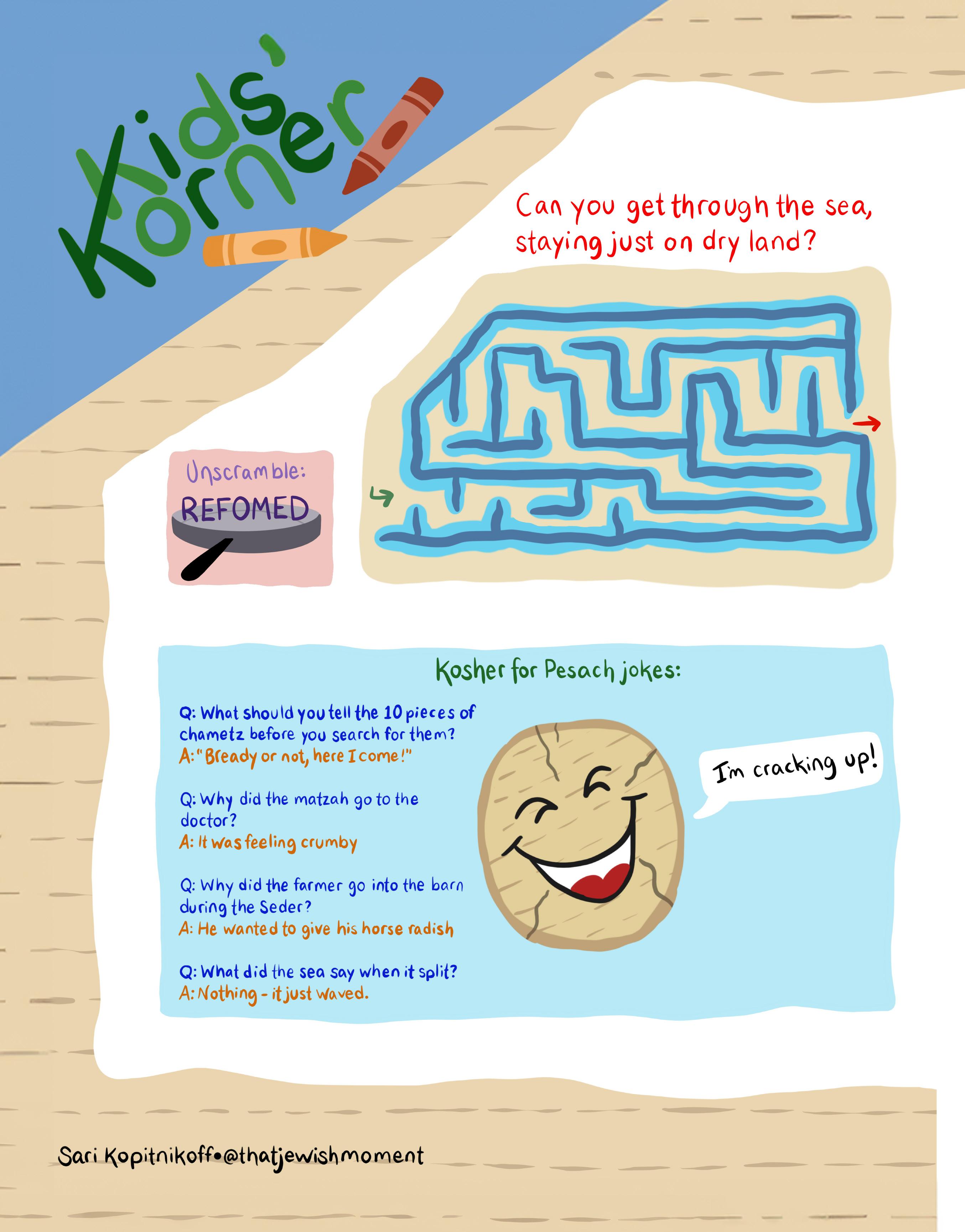


Mr. GoldberG, you’re the picture of health for a 70 year old. Was your father this healthy before he died?
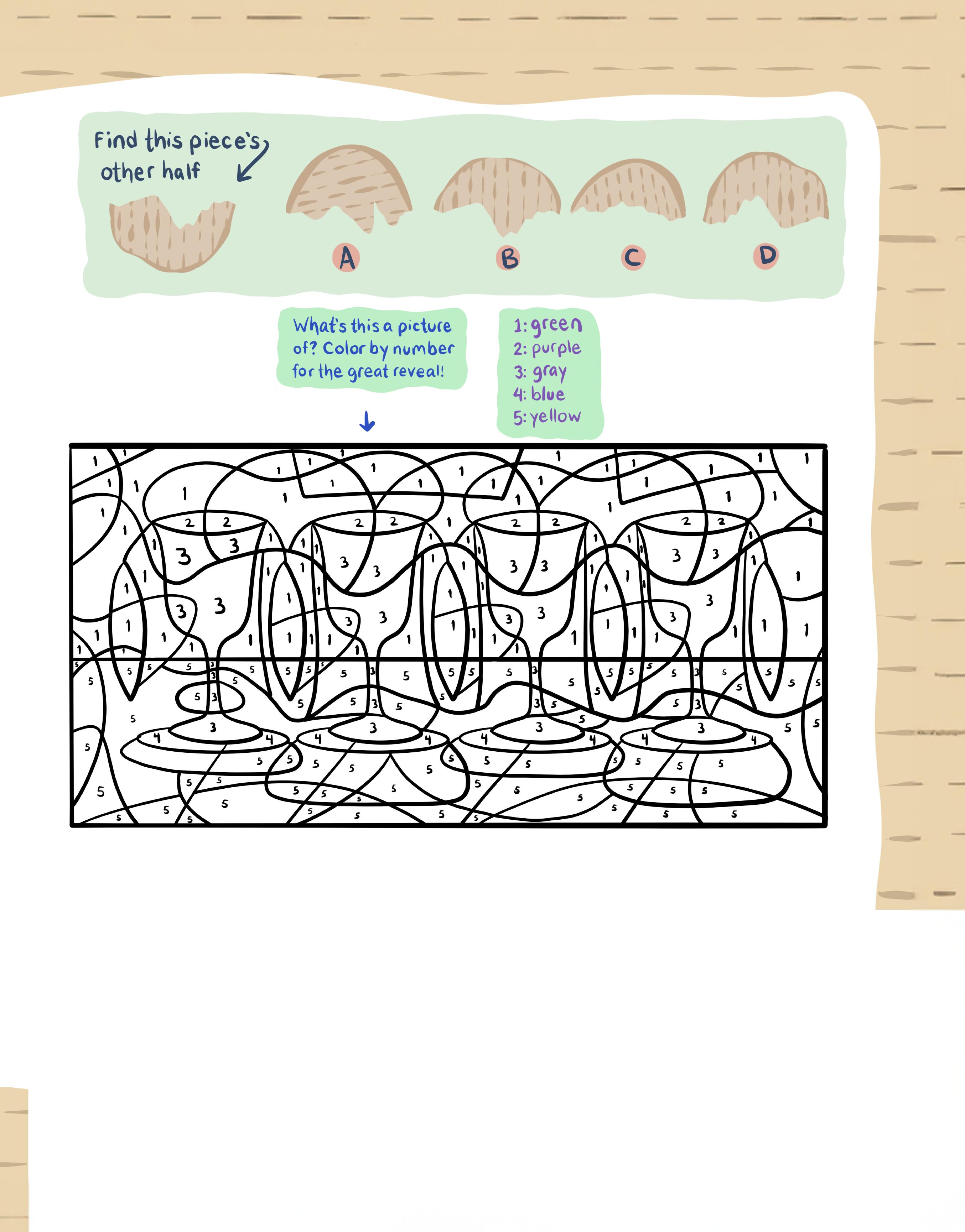
Who said he died?
WoW! i s he still active?
dad’s 90, he runs the n eW york Marathon, and boxes three ti Mes a Week.

Grandpa is 110, runs a 5k every Week and is Gettin G re-Married.
Why on earth Would a 110-year-old Want to Get re-Married?
Who said he Wants to? h is Mother told hi M to!
u nbelievable. h oW old Was your Grandfather When he died?
seriously?! Unscramble: Freedom Matzah Half: B
Who said My Grandfather died? afne zivan, i llustrator - elie benhiyoun, editor | GroMybrand.coM
During the Pesach Seder, we drink four cups of wine as a way of expressing gratitude to Hashem for the great miracle He performed.
BRING IT HOME DID YOU KNOW? IMAGINE

Playing ball outside with your older sibling. Suddenly, the ball bounces away into the street! You know it’s dangerous to run into the street, so you just watch it roll farther and farther away, feeling sad that the ball is gone.
Looking up, you are met with a pleasant surprise, your sibling carefully looks both ways and goes into the street to get the ball back! Not only are you so relieved to have the ball back, but you are so grateful to your sibling for helping. Feeling grateful, you create a thank you card and even offer to help with their chores! The memory of how sad you felt and how thankful the help was, evokes ways to show how much it meant.
DELVING DEEPER
Hashem performed a great miracle for the Yidden by freeing them from slavery in a place from which they could not escape. Every year, during Pesach, we express our gratitude for this miracle in various ways. One of these ways is by drinking four cups of wine during the Seder, with each cup symbolizing a form of gratitude that we have for Hashem. We can apply this concept of expressing gratitude in our daily lives as well. When someone does something kind for us, it is important to show them appreciation. For instance, if a friend or a sibling helps you with your homework or shares their toys with you, make sure to thank them.
Who are some individuals that you can express gratitude for their daily contributions to your life? What are ways to show appreciation?
You can show your gratitude by saying “thank you,” writing them a thank you note, or giving them a small token of appreciation.

B”H
PESACH

Overflowing Kiddush Cup PARSHA
*This Science Experiment contains Chametz , & not meant to be experimented with on Peasach.

In a cup, add 2 teaspoons of yeast & 4 tablespoons of water. Mix & set aside

Add a bit of purple food coloring to the bottle.
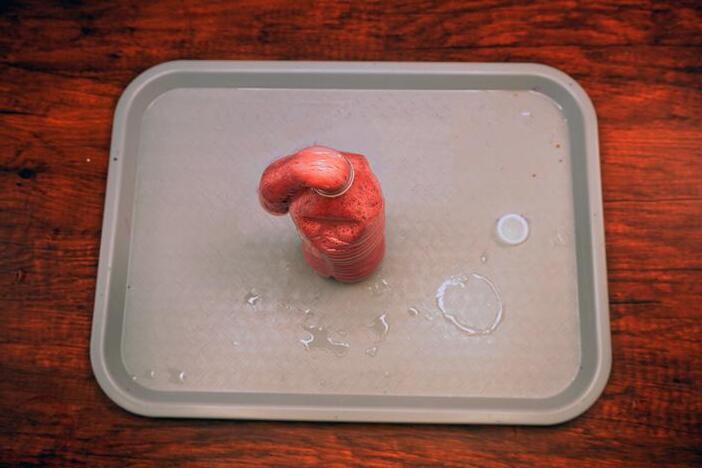
KIDDUSH CUP!
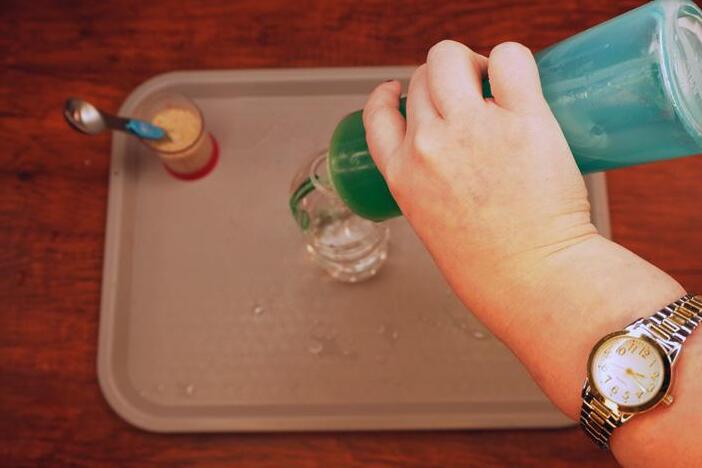
Start by filling an empty bottle with 6 tablespoons of hydrogen peroxide. Then, add a squirt of dish soap.
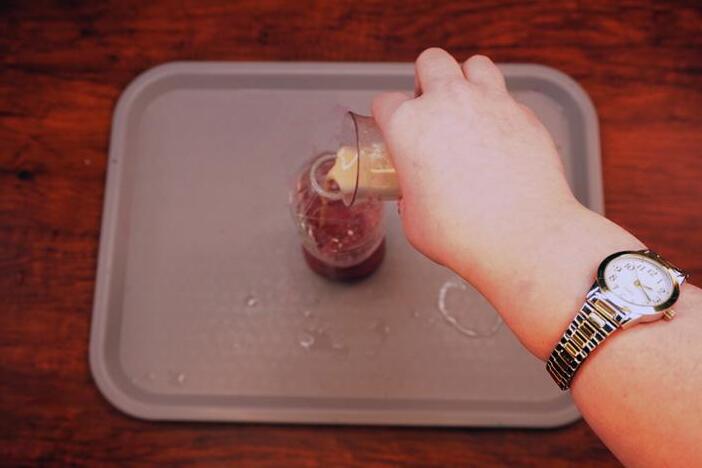
Pour the yeast mixture into the bottle & watch in amazement as the exothermic reaction starts to release.

Wishing you a Pesach that is overflowing with blessings!
Happy & Kosher Pesach

Swirl your bottle to mix the compounds.

OVER............FLOWING..........
1 Empty 16 oz. Water Bottle
6 Tbsp Hydrogen Peroxide
Burgundy Food Coloring
4 Tbsp Water
2 Tsp Yeast
Dish Soap Cup SUPPLIES
*We would love to see how your Parsha Studio Project came out!
Send us pictures to, info@jcm.museum
B”H
1. 2. 4. 5. 6.
7.
8. 3.



• Big and small apartments
• Short term rentals available
• Year-round








Are You Smarter Than A Chidon Kid?
Boys and girls from all over the world recently competed in the International Chidon Hamitzvos championship. They showed how well they knew the Rambam's Sefer Hamitzvos, which lists the 613 mitzvos of the Torah.
To make it to the final round, they had to pass many tests in the past few months. Here are some questions that the finalists studied and mastered. Give them a try and see if you're as smart as one of the Chidon contestants...
1. How many negative commandments does one transgress for making an idol for a non-jew?
A. 0
B.1
C. 2
D. 3
2. When and where is there an obligation to search for idol worship in order to destroy it?
A. Everywhere, always.
B. In Eretz Yisroel, always.
C. In Eretz Yisroel, when there is a Jewish government.
D. Everywhere, when there is a Jewish government in Eretz Yisroel.
114 COLLIVE MAGAZINE NISSAN 5784
3. How far can one walk if he placed an eiruv one thousand amos to the east of his house?
A. 4,000 amos to the east of his house and no amos to the west of his house.
B. 3,000 amos to the east of his house and 1,000 amos to the west of his house.
C. 2,000 amos to the east of his house and 2,000 amos to the west of his house.
D. 1,000 amos to the east of his house and 3,000 amos to the west of his house.
4. When were the trumpets blown?
A. On Rosh Chodesh, while the Korban Musaf was being offered.
B. On Shabbos, while the Korban Musaf was being offered.
C. When offering the daily korbanos.
D. All of the above.
5. Which of the following is a sign of a kosher locust?
A. Two legs.
B. Two extra legs to jump with.
C. Two wings.
D. All of the above.
6. When is one liable for bringing honey on the Altar?
A. As soon as he begins to bring it up the ramp of the Altar.
B. Once he brings it on top of the Altar.
C. Once he pours it on the Altar.
D. Once it starts burning.
7. A Kohen who brings a korban without salt has transgressed:
A. 1 negative commandment.
B. 1 positive commandment.
C. 1 positive commandment and 1 negative commandment.
D. Two negative commandments.


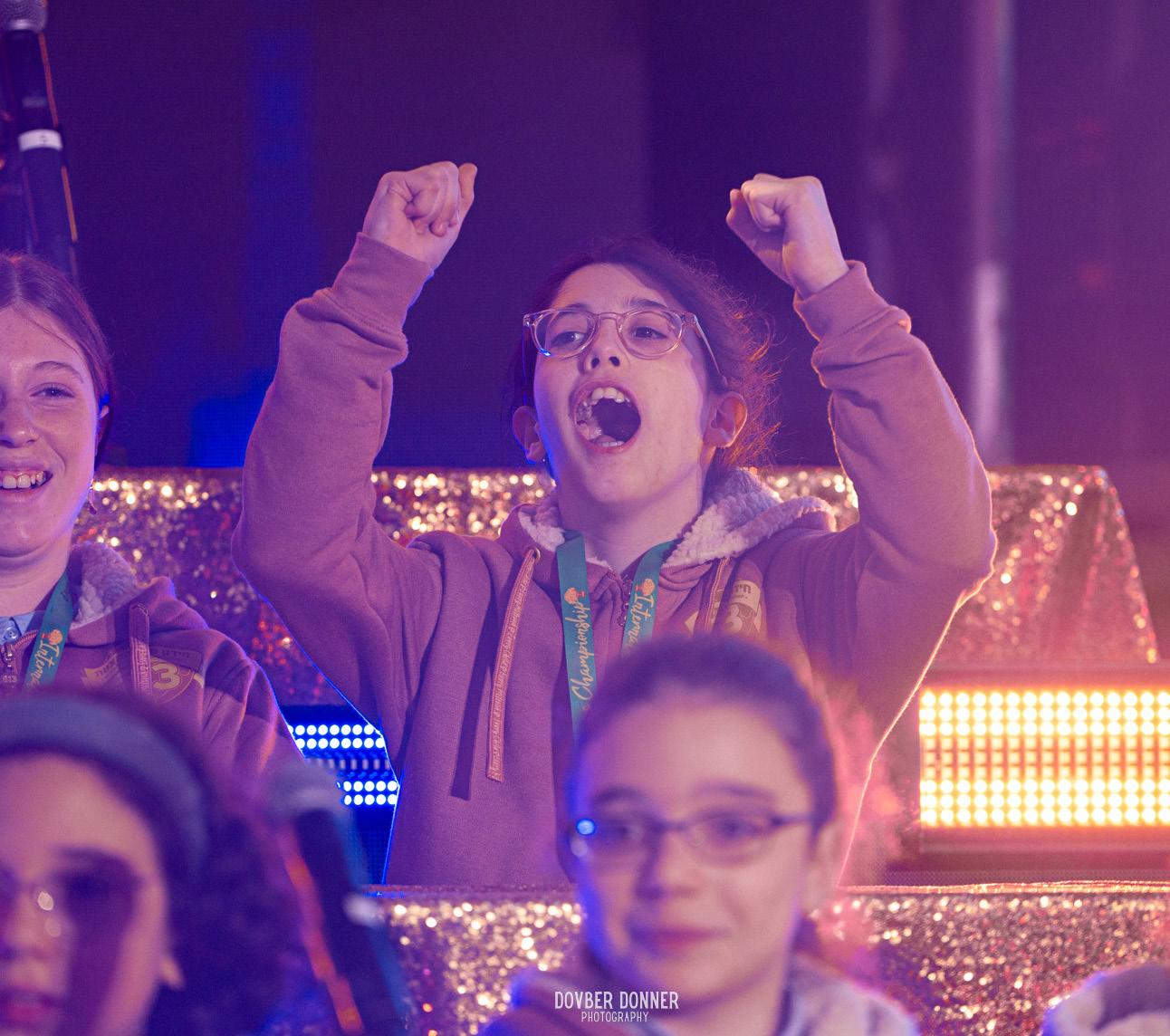
COLLIVE MAGAZINE NISSAN 5784 115



8. For how many days is the tamid korban set aside before being slaughtered?
A. One day.
B. Two days.
C. Three days.
D. Four days.
9. What is done with the two breads (םחלה יתש) offered on Shavuot?
A. They are burned on the Altar.
B. The Kohen Gadol eats both of them.
C. The Kohen Gadol eats one and the rest of the kohanim eat the other.
D. The rest of the kohanim eat both.
10. When one designates an animal as a korban, under which circumstances may he exchange it for another one?
A. If the second animal is better.
B. Even if the second animal is equal.
C. Even if the second animal is worse.
D. One may never exchange an animal designated as a korban.
11. Why is one permitted to soak flax near a neighbor’s vegetable garden?
A. Because it doesn’t cause any damage.
B. Because it causes minimal damage.
C. Because the neighbor waives his right to protest the damage.
D. Because the damage occurs later, and not as a result of direct action.
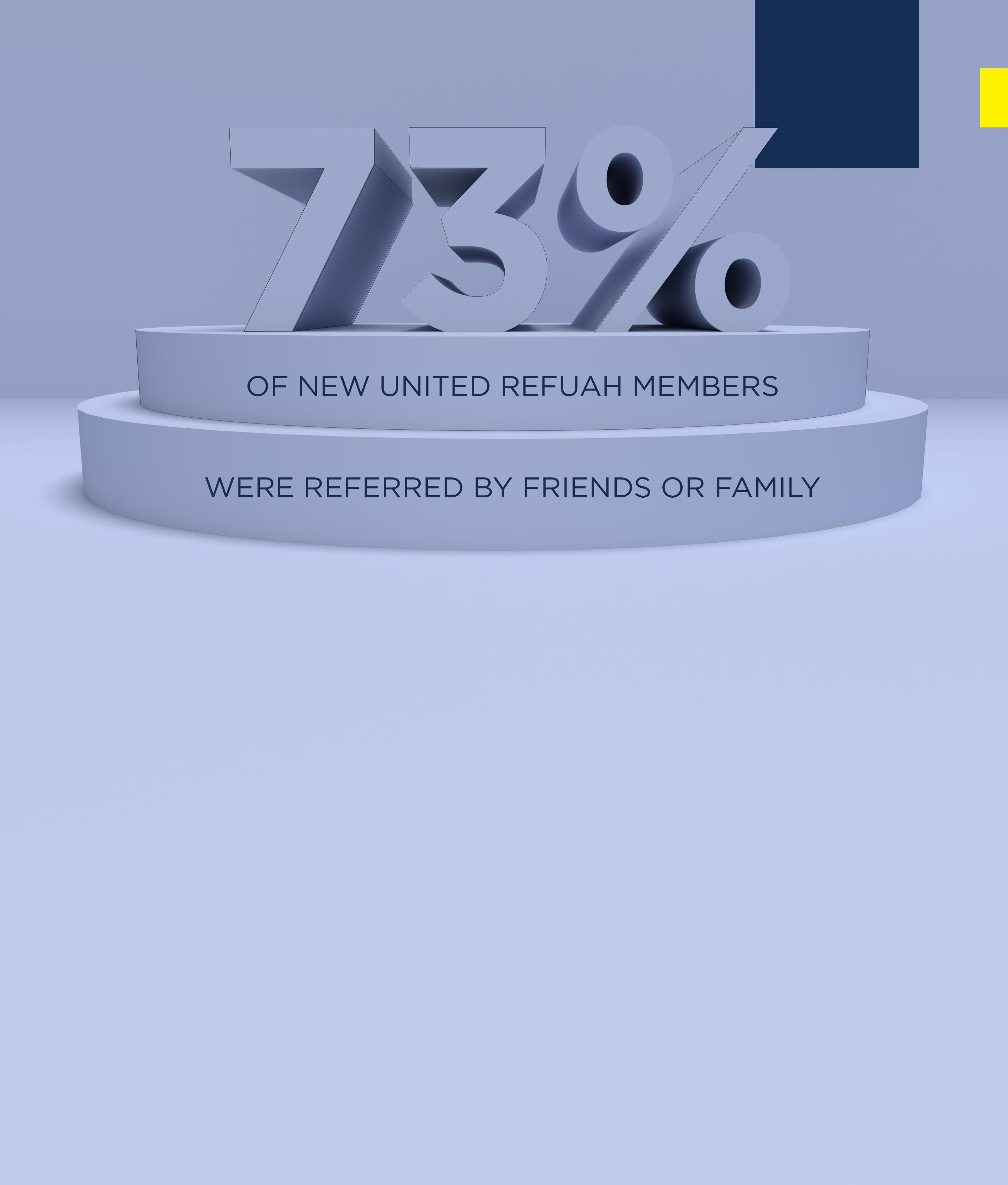
Answer Key: 1:B. 2:C. 3:B. 4:D. 5:C. 6:A. 7:C. 8:D. 9:C. 10:D. 11:D. 116 COLLIVE MAGAZINE NISSAN 5784


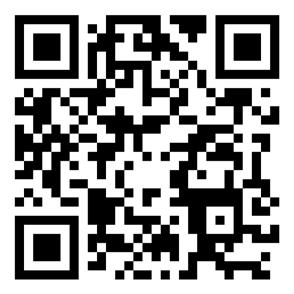
New! Request to be connected with a United Refuah member and hear first-hand how HealthSharing fits into the life of a frum family. Unitedrefuah.org/connect. Because there is nothing quite like hearing from someone who has already made the switch. LEARN MORE: (440) U-REFUAH // info@unitedrefuah.org // www.unitedrefuah.org SINGLE: $199/month COUPLE: $349/month FAMILY (UP TO 6): $499/month $50 for each additional member STILL ONLY: United Refuah is a non profit healthsharing organization. It is not insurance and does not offer insurance. See Sharing Guidelines for full details. Application and renewal fees apply. K L A L Y I S R O EL’ S • • HEA L T H SHA R E OF NEW UNITED REFUAH MEMBERS WERE REFERRED BY FRIENDS OR FAMILY
MA NISHTANA
By Mordechai Schmutter
The funny Pesach questions we all ask, just not out loud
x57
1 What day of the week does Pesach start, again?
2 What’s wrong with the vacuum cleaner?
3 How long has this one pickle been in the back of the fridge?
4 Why are there so many pens in the minivan?
5 What if I sold my car for Pesach and just rented one for Chol Hamoed?
6 Is the reason Chazal made our kids such an essential part of the Seder so that we don’t just tape their rooms shut and sell them for Pesach?
7 What day of the week does Pesach start, again?
8 If my kitchen is 20 feet by 15 feet by 10 feet and has cabinets along two walls, how much foil do I need to buy to cover the entire room if I forget to leave a gap for the doorway?
9 When is it a good time to ask this guy I’m going out with what he does and doesn’t eat on Pesach? Should I wait until the second date?
10 Who can we have over for a seudah that is permissive enough to eat in someone else’s house?
11 Which one is Shulchan Orech, and which one is Shulchan Aruch?
12 How many eggs did we use last Pesach? Should we buy extra to be safe? Is there room in the fridge for that many? Do eggs really need to be refrigerated? Can we put eggs in the freezer?
13 How long does it take to hard boil a frozen egg?
14 Is it just me, or are the stores selling leftover olive oil from Chanukah? Is the sediment supposed to be floating around like that?
15 Why is hand shmurah matzah so expensive? Isn’t challah also made by hand?
16 Whatever happened to lady fingers? Is this a food that disappeared once men started helping more around the kitchen?
17 What exactly qualifies as kitniyos, again? What on earth is a legume? And is it pronounced like legroom or like resumé?
18 Can I get romaine lettuce cheaper if I order it straight from Romania?
19 Why does my wife keep optimistically buying toothbrushes for Pesach?
20 Why does the store sell a kids’ Hagaddah that plays music? When is anyone going to use that?
21 Should I wish the supermarket cashier a good yom tov again? I’ve already done it ten times, and I keep coming back.
22 How many years has it been since I’ve actually cleaned the Pesach cabinet?
23 Hey, it’s our Pesach toothbrushes from last year! Whose is whose?
24 How old is this potato starch?
25 What could I make that my sonin-law can actually eat?
26 Where am I supposed to wash the chometz off my hands if the sinks are Pesachdik?
27 How do I turn on the bathroom sink with my elbows?
28 Did I just throw out another peeler?
29 Did every single food I made today involve the same 3 ingredients?
30 When does the guy who owns the pizza shop make Pesach? Is that who Pesach Sheini is for?
31 Why does every Pesach fun page have a maze where you have to get to the afikoman? Who hides it at the end of a maze? How about a maze where you have to step around everything you took out in the process of cleaning a room while holding a vacuum cleaner?
32 What day of the week does Pesach start, again?
33 How do I get this bread to catch fire?
34 Why do bugs like lettuce so much? I only eat lettuce to lose weight. Do bugs need to lose weight?
35 How do I tell if this salt water is salty enough? Is there a recipe somewhere? I know the ingredients; I just need to know amounts.
36 For goodness sakes, do we or do we not sing “Sholom Aleichem” on Shabbos that is also Yom Tov?
118 COLLIVE MAGAZINE NISSAN 5784
37 Do I choose a Hagaddah that has a lot of divrei Torah, or one where I don’t have to turn so many pages? Because every time I turn a page, something spills.
38 This isn’t really a question, but I can’t believe that I bought over 15 dozen eggs and not a single one came broken, but I only have 6 functional matzos.
39 How do they decide which broken matzos to put in a box of shevuros and which ones to put in a box of shleimos? And why are the shevuros ones cheaper? Are the broken ones in the box of shleimos there to act as padding for the three whole non-broken ones in the middle of the box?
40 Can I talk after Urchatz? It feels weird.
41 Why does my kid, who’s been singing the Ma Nishtana at the top of his lungs for three weeks, suddenly not want to say it at the Seder?
42 Why did everyone look at me when they said “Rasha”?
43 Are you supposed to knock out the rasha’s teeth on yom tov? Can I just give him a really hard piece of matzah, and if it happens, it happens?
44 Did I just sit on the afikoman?
45 “We cover the matzos.” Wait. How long have these been covered?
46 How DID we do this last year?
47 If you go to a Pesach hotel, where do you hide the afikoman? What if I find someone else’s?
48 Is it just me, or was the matzah better last year?
49 How do I measure my matzah up against this size chart? My matzah isn’t square.
50 Why did I make all this food for Shulchan Orech? I must have been really hungry.
51 How did they used to hide
afikoman in the old days? Did they hide a lamb? Why not just follow the smell? (“What’s that dripping through the ceiling? Oh, there it is.”) I bet it’s not easy to hide a full-size lamb in a one-room house. Unless they were allowed to use the backyard.
52 Why does matzah make more crumbs than anything else we ever eat – chometz included?
53 How come when I go upstairs after the Seder, I always forget the pillows?
54 Did we lock the door after Shefoch Chamascha?
55 How did I put on so much weight at the Seder when I mostly just drank and barely touched Shulchan Orech?
56 What do I do with all this leftover charoses?
57 Why am I always starving at 11 PM on the third night of Pesach?

Then Now
by Zev Gotkin
390 KINGSTON AVENUE
The Story Behind One of the Oldest Shuls in Crown Heights
At 390 Kingston Avenue, between Crown and Montgomery Street, sits one of Crown Heights’ oldest Shuls, known to locals as Shain Shul.
Located next to a popular hardware and home goods store, one could pass by the little shul without even noticing it if not for the golden letters emblazoned on the front of the building proclaiming it “Shain Shul.” Those gold letters were only placed there in August of 2013, but the building’s history and its congregation go way further back.
390 Kingston Avenue was built in 1920. The lowrise, brick building has two floors, two units, and is 2,280 square feet. The structure is 19 feet wide and sits on a 1,750 sq ft lot.
Though its exterior looked much the same as it did in the 1940s back when it was a dry cleaning business called Oriental Dryers, it later became a Satmar Shul.
According to Rabbi Eliyahu Shain, many of the non-Lubavitch chassidic Jews living in Crown Heights in the late 1970s were leaving for other Brooklyn neighborhoods, such as Borough Park, Williamsburg, Flatbush, and Kensington. The membership of the shul was dwindling rapidly as most of the Satmar chassidim were moving out, and Rabbi Shain would help get bochurim and Lubavitchers in the community to help make a minyan in the shul
In 1980, Rabbi Shain took a trip to
Israel where he met with various Torah giants. During his trip, he had an audience with Rabbi Moshe Ben Tov, a mekubal, or mystic, who was known for his ability to see into the future. Rabbi Ben Tov informed Rabbi Shain that when he returned to the United States, he would be approached about a business opportunity and instructed him to take it.
Sure enough, not long after Rabbi Shain returned to America, he was approached by Rabbi Moshe Friedman, the rabbi of the Satmar shul, who suggested that Rabbi Shain buy the building and ensure that it remained a shul. In those years, the Rebbe was urging his chassidim to remain in Crown
120 COLLIVE MAGAZINE NISSAN 5784
AND


Heights and buy local shuls whose memberships were decreasing to keep them in the service of the community. This, along with Rabbi Ben Tov’s instruction, encouraged Rabbi Shain to buy the shul in 1981. Though titled officially on legal documents as Congregation Tiferas, the shul is universally known as Shain Shul.
With over 100 different shuls spread across Crown Heights today, it is hard to imagine that at the time when Shain Shul was purchased, there were still very few Lubavitch shuls in the neighborhood. This was due in part to the comparatively smaller number of anash that existed at the time and also because
most Lubavitchers preferred to daven with the Rebbe in 770.
Shain Shul was one of the first Lubavitch shuls in the neighborhood and it scheduled all its times for davening around the Rebbe’s farbrengens. According to Rabbi Shain, the shul’s original purpose was to provide a place for local Lubavitchers to daven, make kiddush, and still make it on time to the Rebbe’s farbrengens at 770. With this in mind, shachris would begin on Shabbos slightly earlier than most Lubavitcher minyanim to allow for people to arrive on time for the Rebbe’s farbrengen at 1:00 pm.
Rabbi Shain was a mohel for many years and for a long time, the shul
was known to have brissim almost every day! People would come from all around the community to take part in the festive seudas. Since its founding, the Satmar chassidim from the original congregation have long gone and few remain from those who formed the original Shain Shul over 43 years ago. They have been replaced by a new generation of congregants who continue to ensure Shain Shul remains a vibrant and lively kehilla, and many others who pop in for siyumim, shiurim, and Rabbi Shain’s legendary cholent. With its central location in the heart of the community, 390 Kingston Avenue remains a vibrant center for davening and learning in Crown Heights.
COLLIVE MAGAZINE NISSAN 5784 121



חמשו רשכ גח
123 WISHING YOU A HEALTHY DOSE OF FREEDOM. 718.635.1673
Pediatric & Adult Medicine
Podiatry
Brand New Facility
State-of-the-art Equipment
Open 8a.m. - 8p.m. 718.260.4670 | 779 East New York Ave.
•
•
•
•
•



We are thrilled to announce the much-awaited re-opening of Atica store in Crown Heights. SPECIAL
April 7th - April 15th
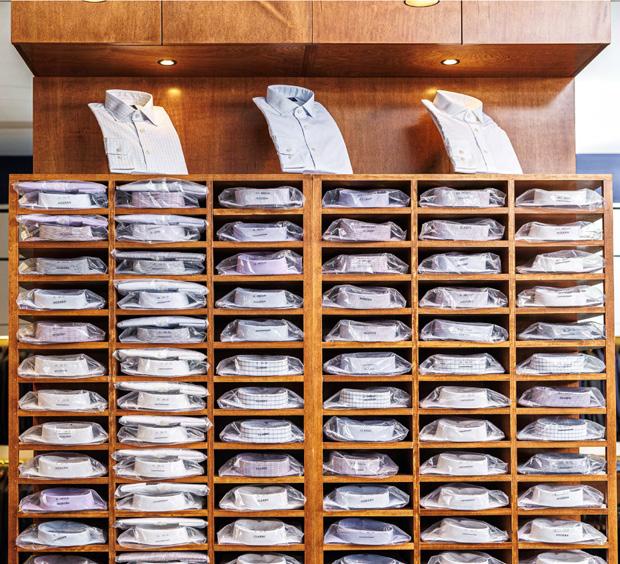


20% OFF
week
grand opening
GRAND OPENING 260 KINGSTON AVE, BROOKLYN (814) 962-6354 | aticaman.com

 Yud Aleph Nissan moments
The Joe who kept Shabbos 14 children who are also friends
Yud Aleph Nissan moments
The Joe who kept Shabbos 14 children who are also friends


















































 Senator Lieberman at the 2013 Kinus Hashluchim.
Senator Lieberman at the 2013 Kinus Hashluchim.































































































 POLAND, 1940
AUSTRIA, 1945
UKRAINE, 2022
IRAN, 1979
POLAND, 1940
AUSTRIA, 1945
UKRAINE, 2022
IRAN, 1979


















































































































